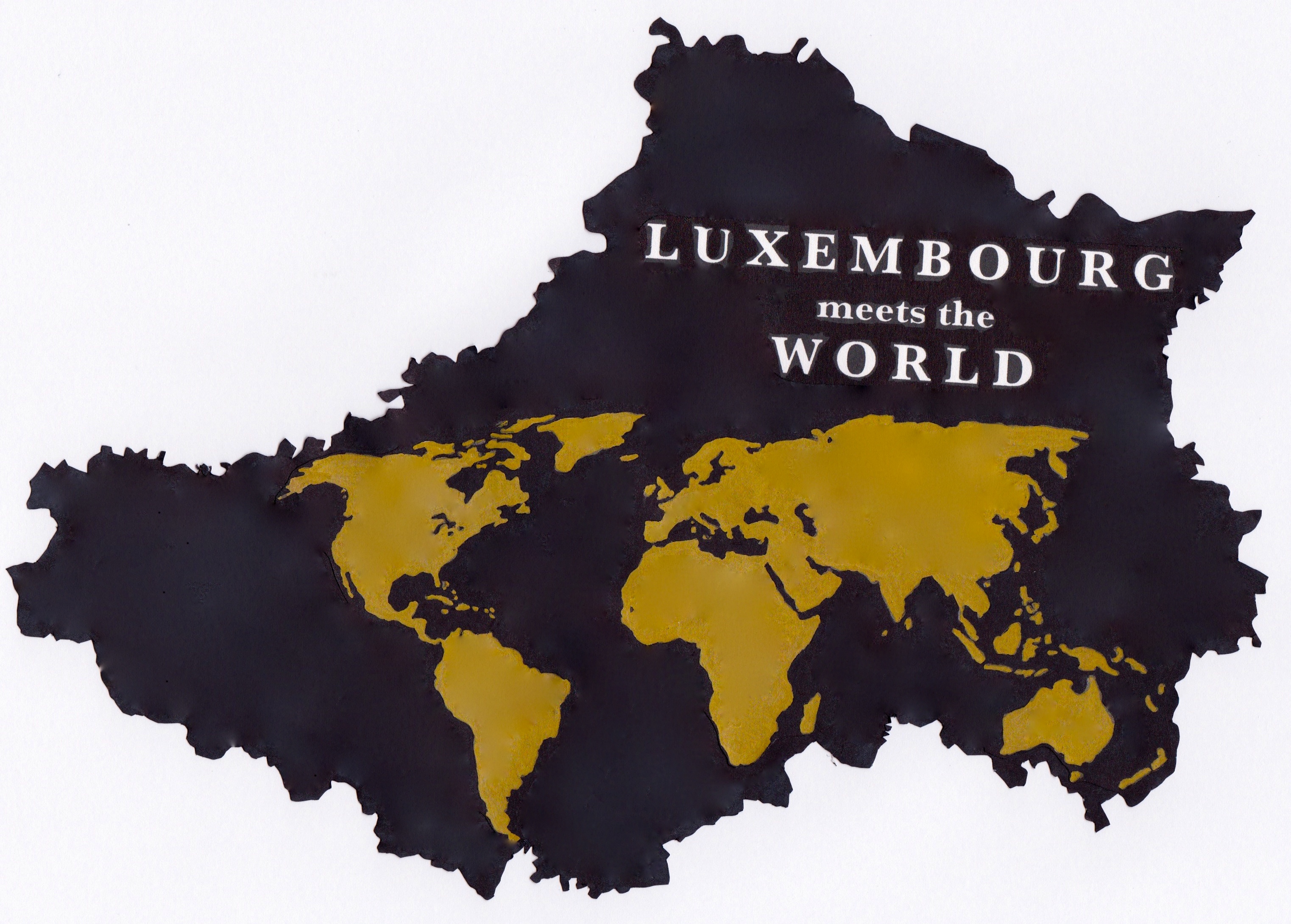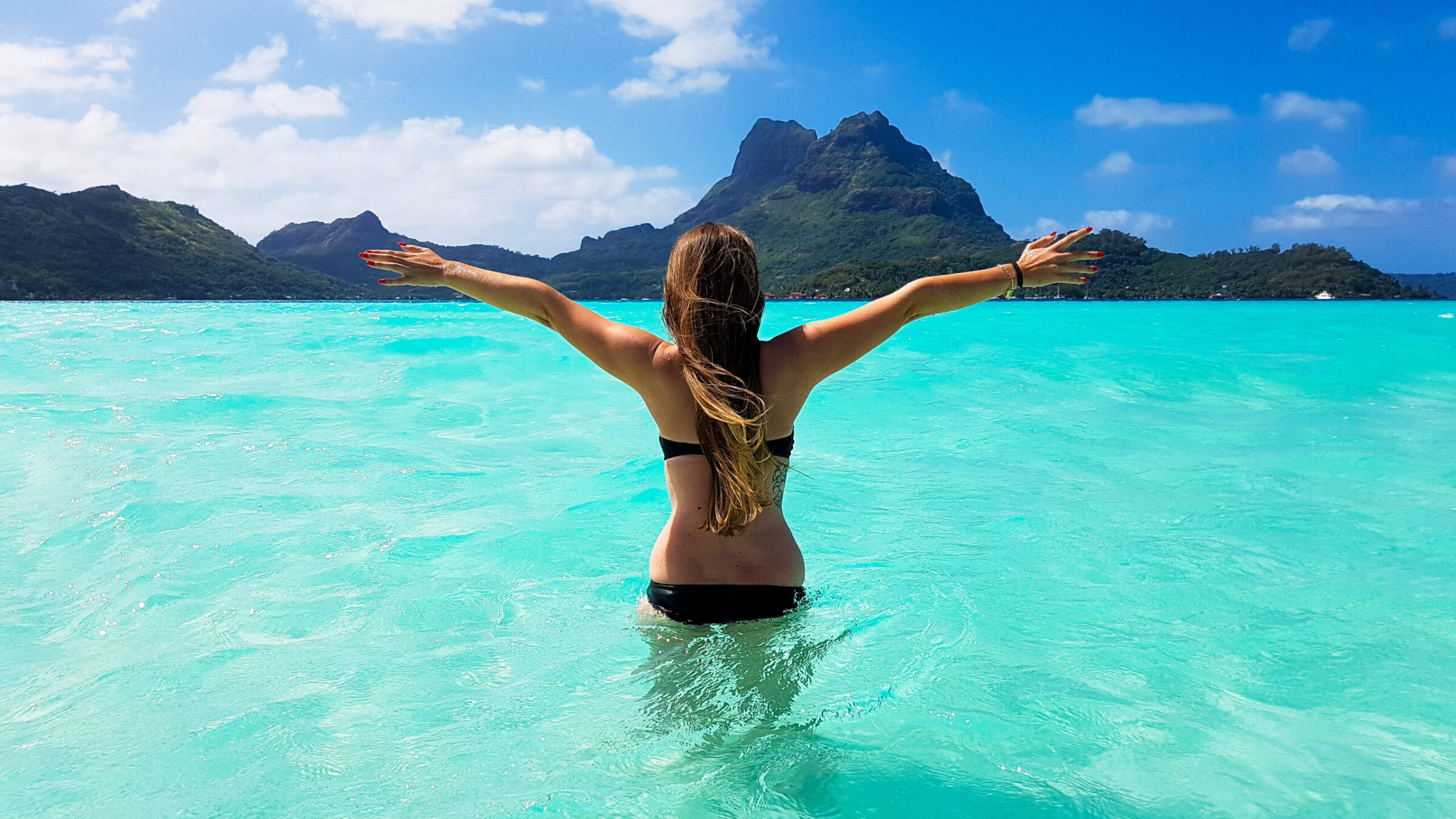
The ultimate West Canada Guide
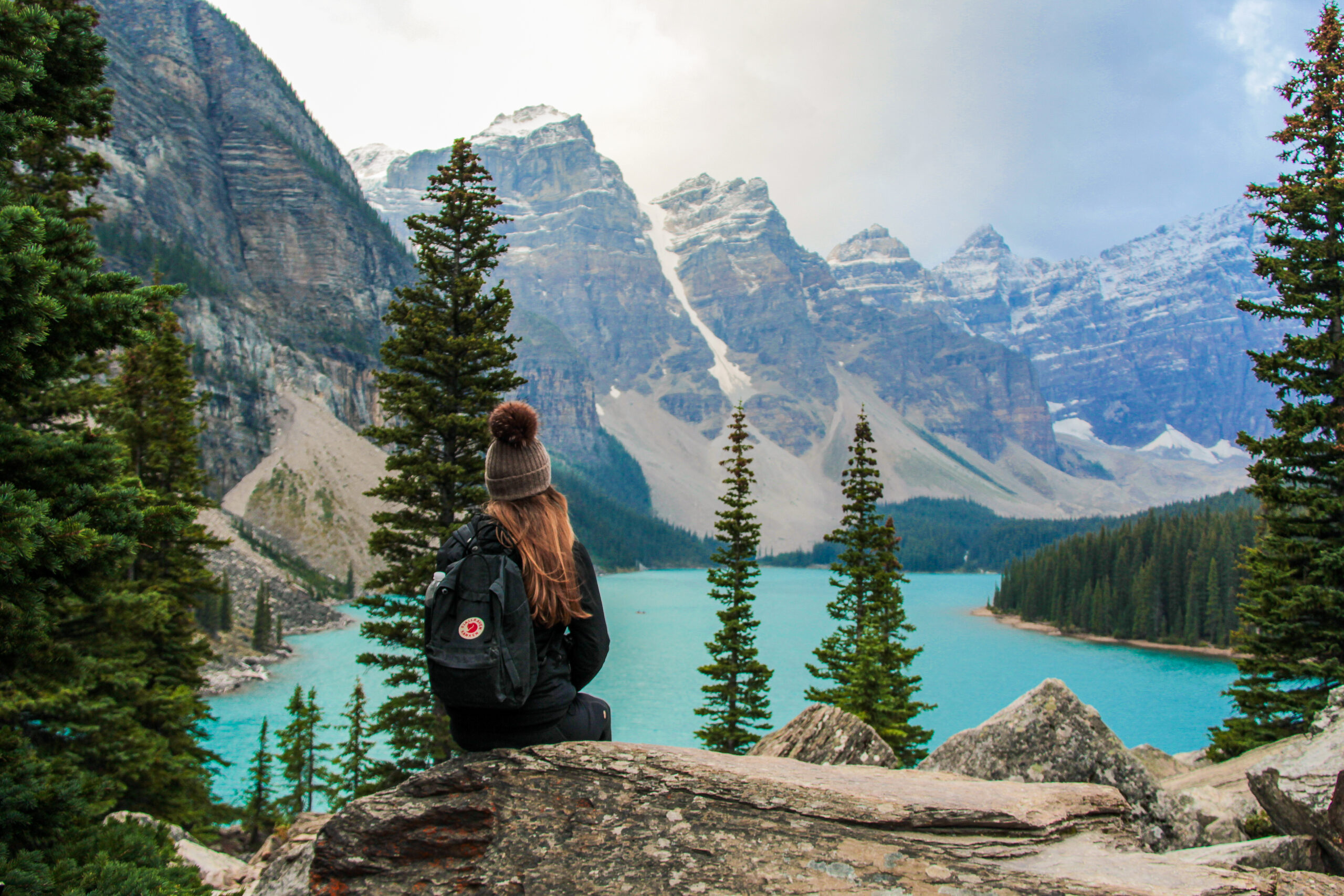
Everything you need to know for you upcoming adventure to…Canada!
Canada is a perfect place for road trips. You can drive for hours and just can’t get enough of it. Until now, it is one of my favourite places to travel to. You can drive past incredible mountains, blue lakes and if you are lucky enough even wild animals in their natural habitat.
So, the most asked question when it comes to traveling to Canada is whether to spend your time at the west or east side of Canada. I cannot say much about the east , but very much when it comes to the west of Canada.
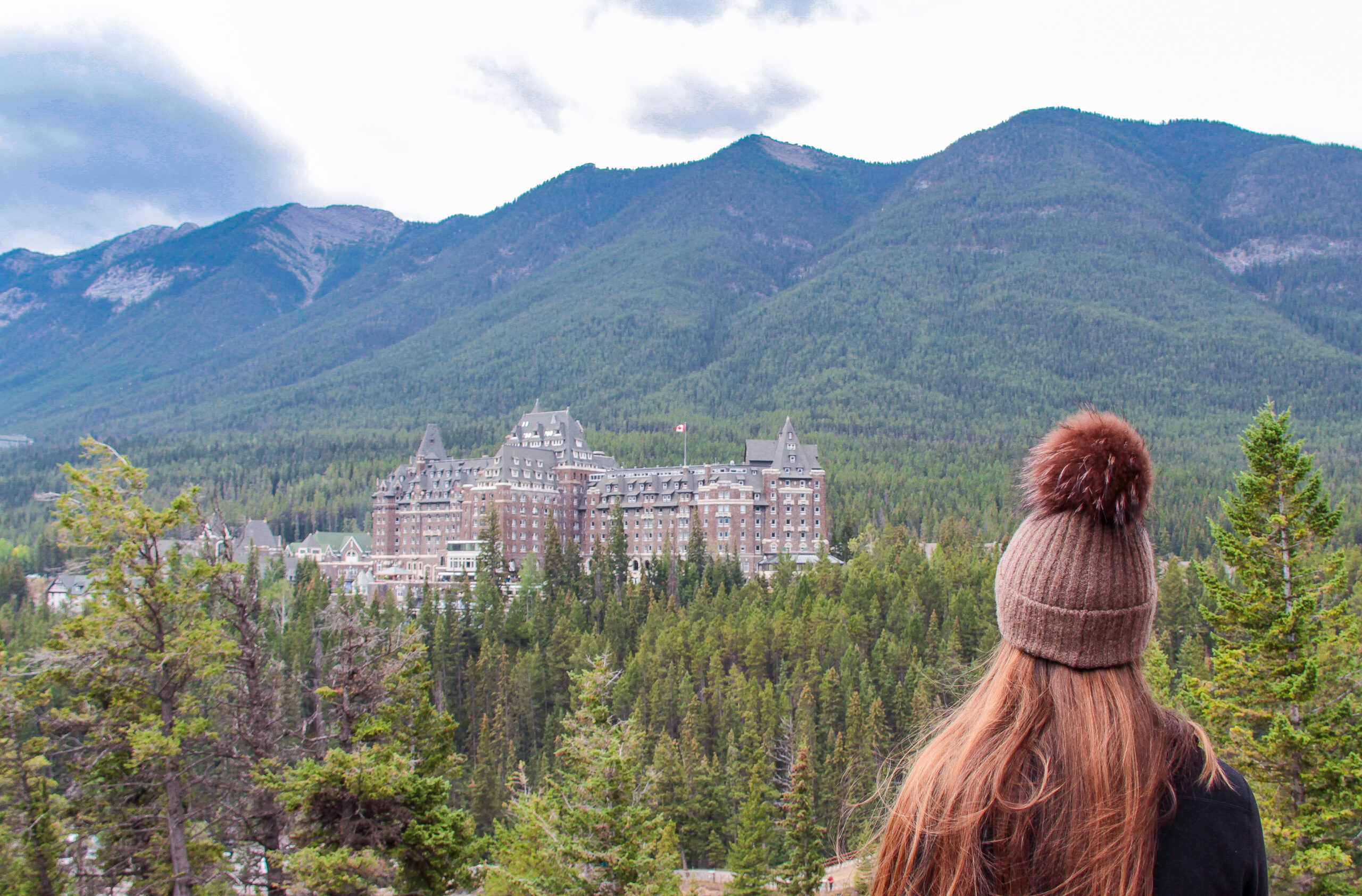
Canada has a lot to offer, so you have to decide what to see and do on your trip without stressing too much. Before jumping into Canada, here are some practical information that you need to know before visiting West Canada.
Best time to go?
It all depends on what you want to do! If you want to spend your time in the snow with winter activities, you definitely have to go in wintertime. BUT for most of the activities like climbing, fishing, kayaking, etc., the summer months are the best for it.
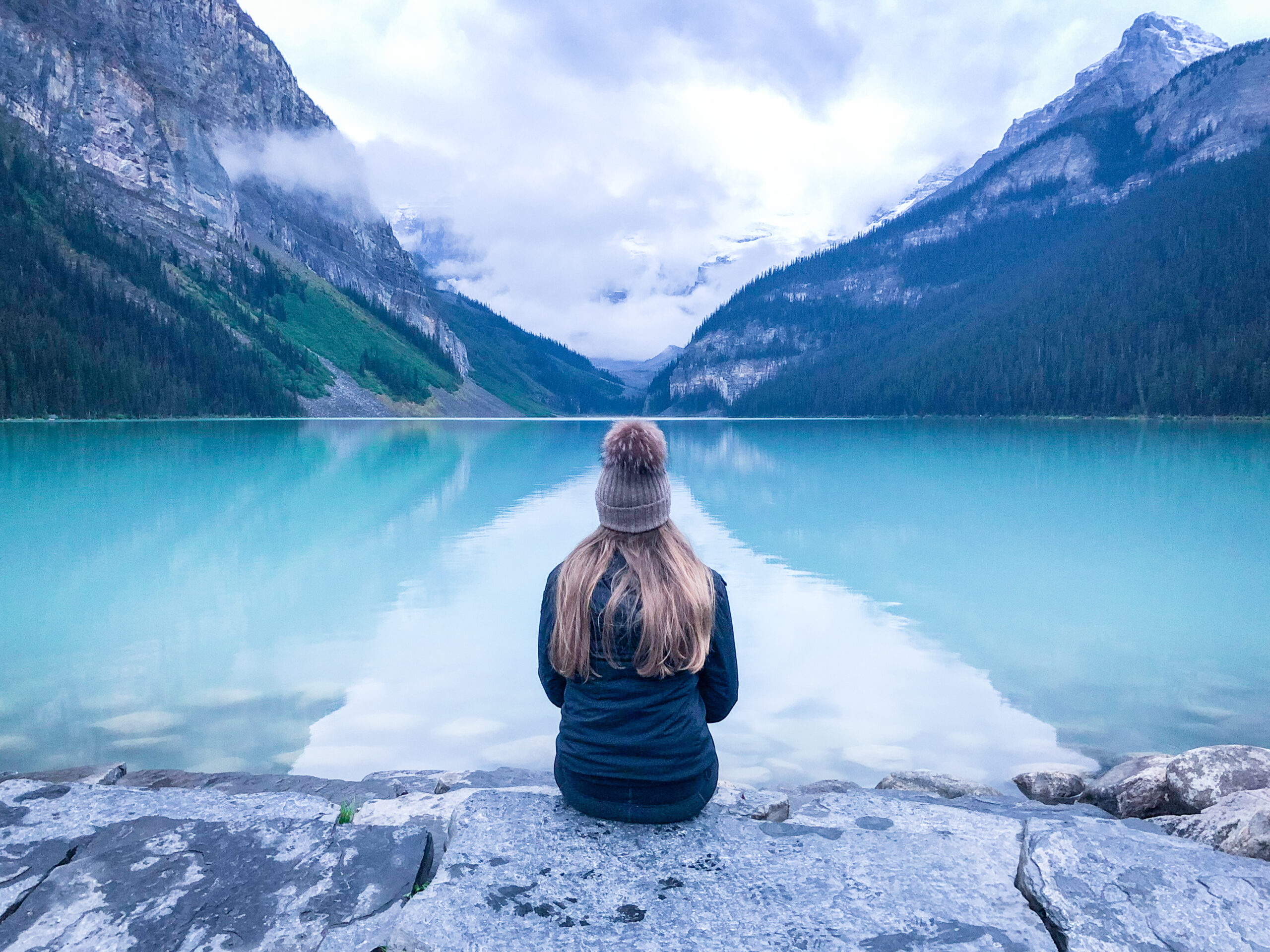
We travelled to Canada in late August, beginning of September, which is normally a great time to visit Canada. It is not as crowded as in June/Juli, but nothing is closed already. Unfortunately, there was a cold front at that time, which reduced the temperature by almost 10 degrees. So all in one, you can never be sure what you get and be prepared for everything. It can start snowing at any time in Canada!
How to get there?
You have two options to start you road trip to the Canadian Rockies. You can decide between Calgary or Edmonton to start your adventure!
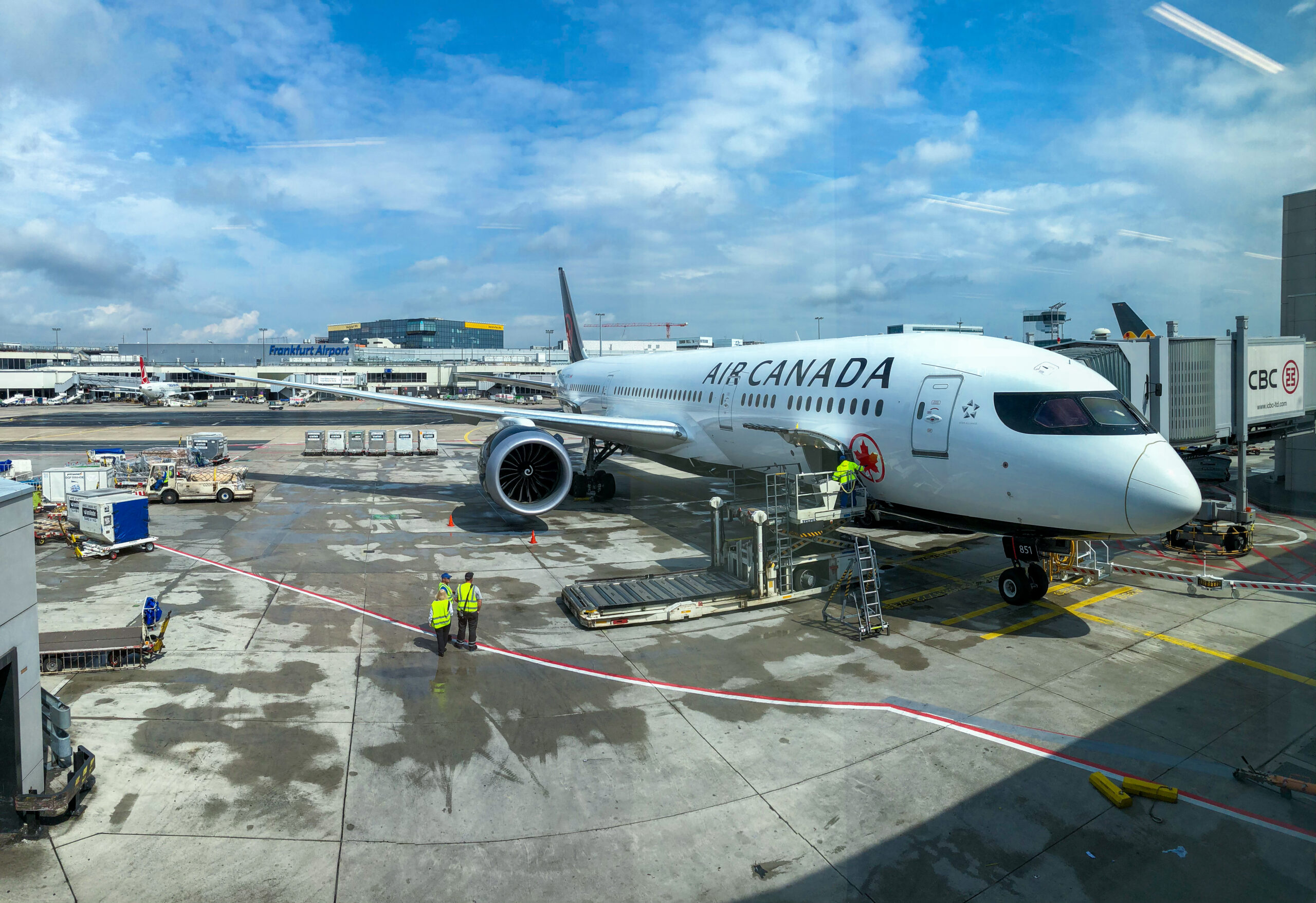
My starting point was Calgary. As we don’t have direct flights from Luxembourg to Canada, we always have to opt for another solution. I booked all the flights via Air Canada, which took me from Luxembourg, via Frankfurt to Calgary. But you can find easily other companies, which will take you there.
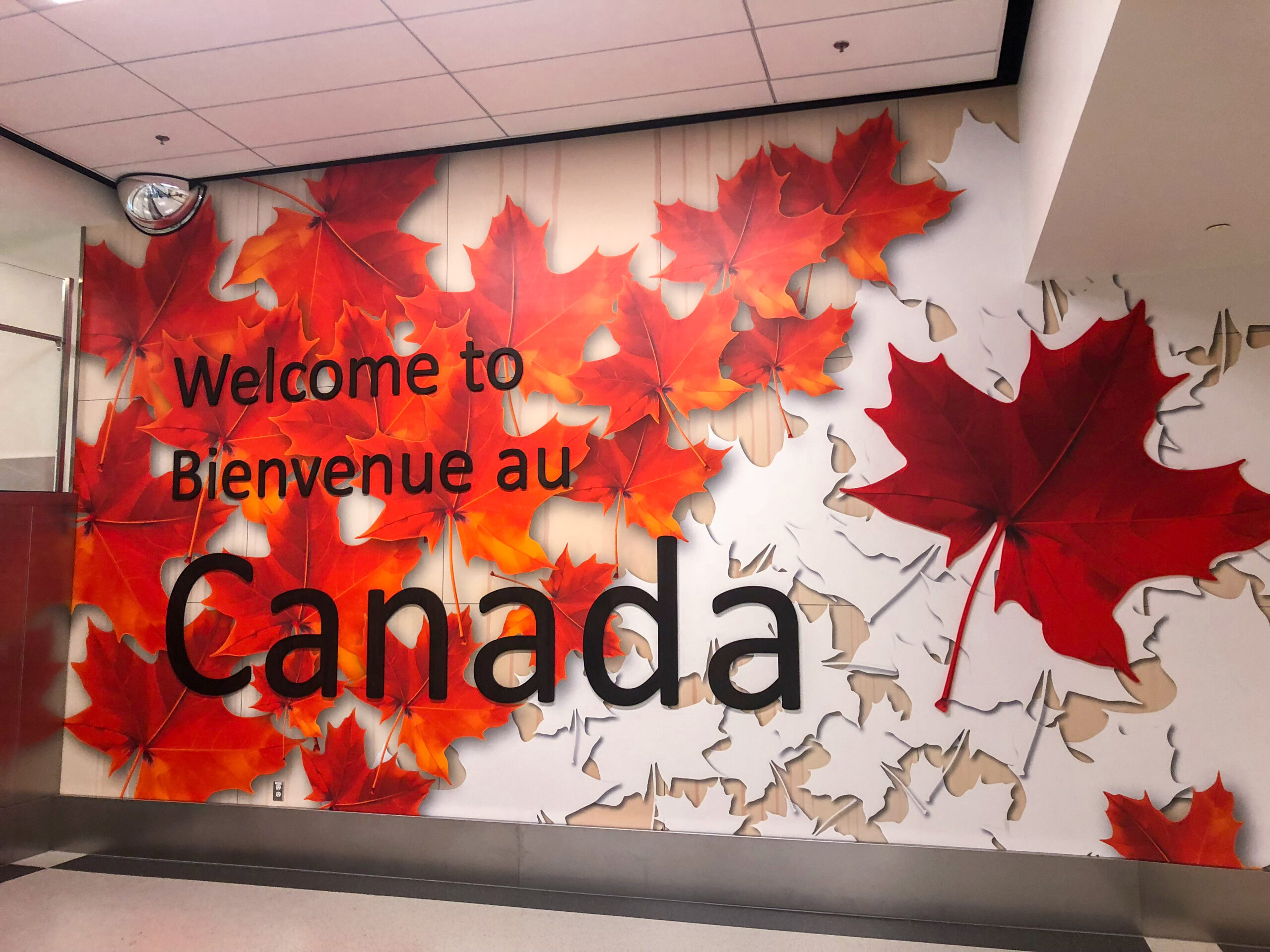
Renting car?
Definetely yes! If you have the possibility to rent a car, do it. You are much more free to get around in National Parks with a car. In addition, there are distances between attractions that cannot be made by foot and I am not quite sure if public transport is reliable in Canada. A rental car makes you very flexible in your day planning, which is very important when it comes to avoid crowded places like Lake Moraine.
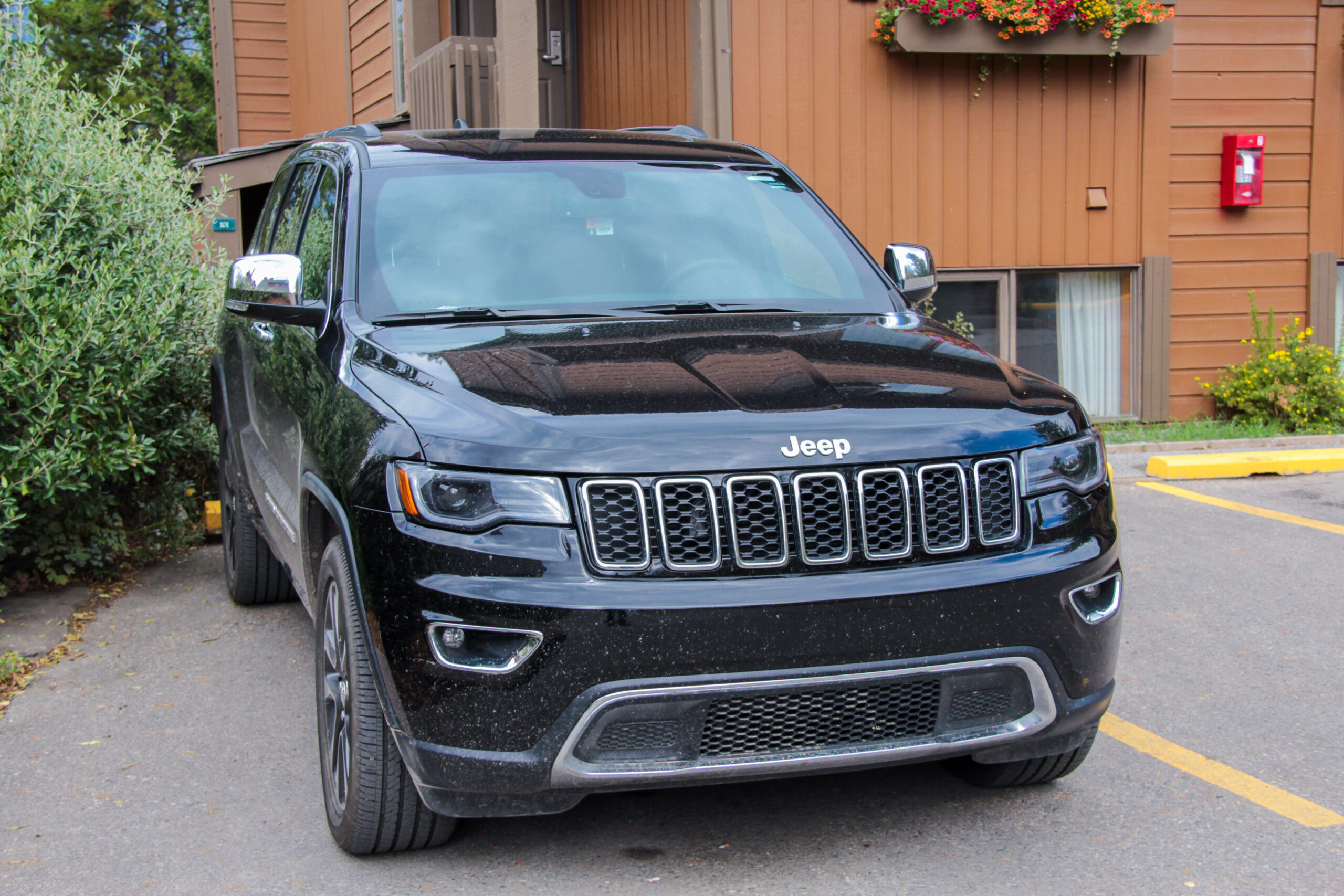
You can rent your car directly at the airport in Calgary. There you can find all the big car rental companies. To be sure to get the car in the category you want to, be sure to book your rental car in advance.
Driving conditions?
Driving in Canada is easy. If you respect speed limits everything will be fine.
When driving in Canada, especially in Banff and Jasper National Park, it is possible that wildlife will also use the road or is sitting next to the road. Don’t leave your car whenever you meet animals on the road, this can be very dangerous. Don’t put a photo over your life.
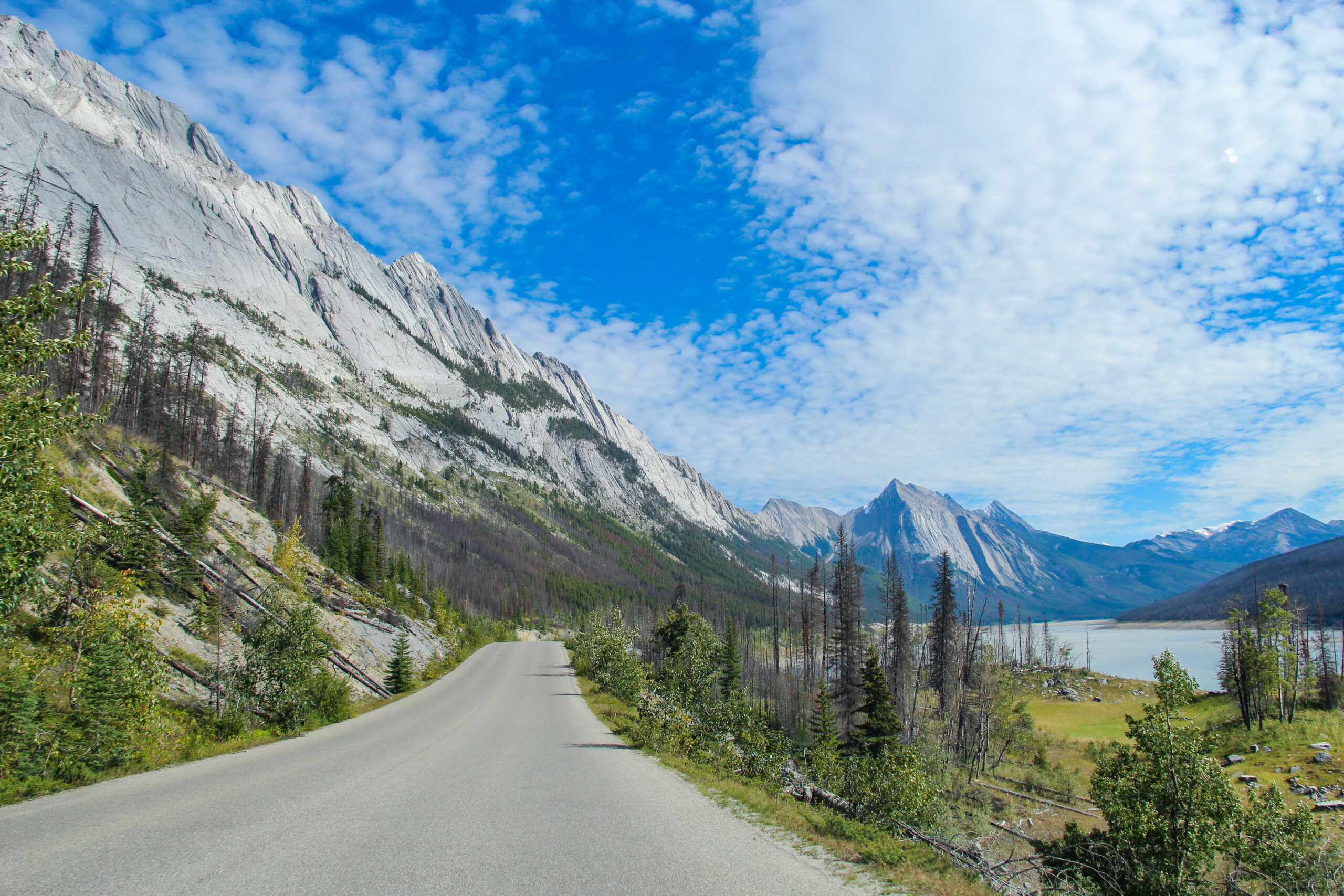
Currency & Costs?
The currency in Canada is the Canadian dollar, known as CAD. Be sure to take your credit card with you or make sure that your credit card is authorized for overseas purchases. Some restaurants in Banff only accept credits cards.
Talking about costs, Canada is not a cheap destination. However it all depends on your habits. It is certainly more cheap to camp than to stay in expensive hotels.
Below you will find a general idea of a route I suggest for 14 day Canada road trip itinerary. However, you are always free to extend or shorten your route.

Calgary – Banff National Park – Jasper National Park

Where to start and end your West Canada Road Trip?
Calgary was the starting point of my trip to West Canada with Banff National Park and Jasper National Park as further destinations. I spent two weeks in Canada, which is certainly not enough to discover all of its beauty. My road trip also ended in Calgary but you can always chose another starting or ending point.
Calgary – 2 nights
Calgary is the largest city in Alberta and located very close to the Canadian Rocky Mountains. Even if it will be your starting point for your adventures in Banff and Jasper National Park, be sure to plan at least one day in your itinerary to explore this city.
Read next: 5 thing to do in Calgary.
Calgary Tower
The Calgary Tower is a 190,8 meter free standing tower in Downtown Calgary. The tower opened in 1968 as the tallest building in Calgary and was firstly known as the Husky Tower. It changed its name quickly into Calgary Tower, as a tribute to all the citizens of Calgary.
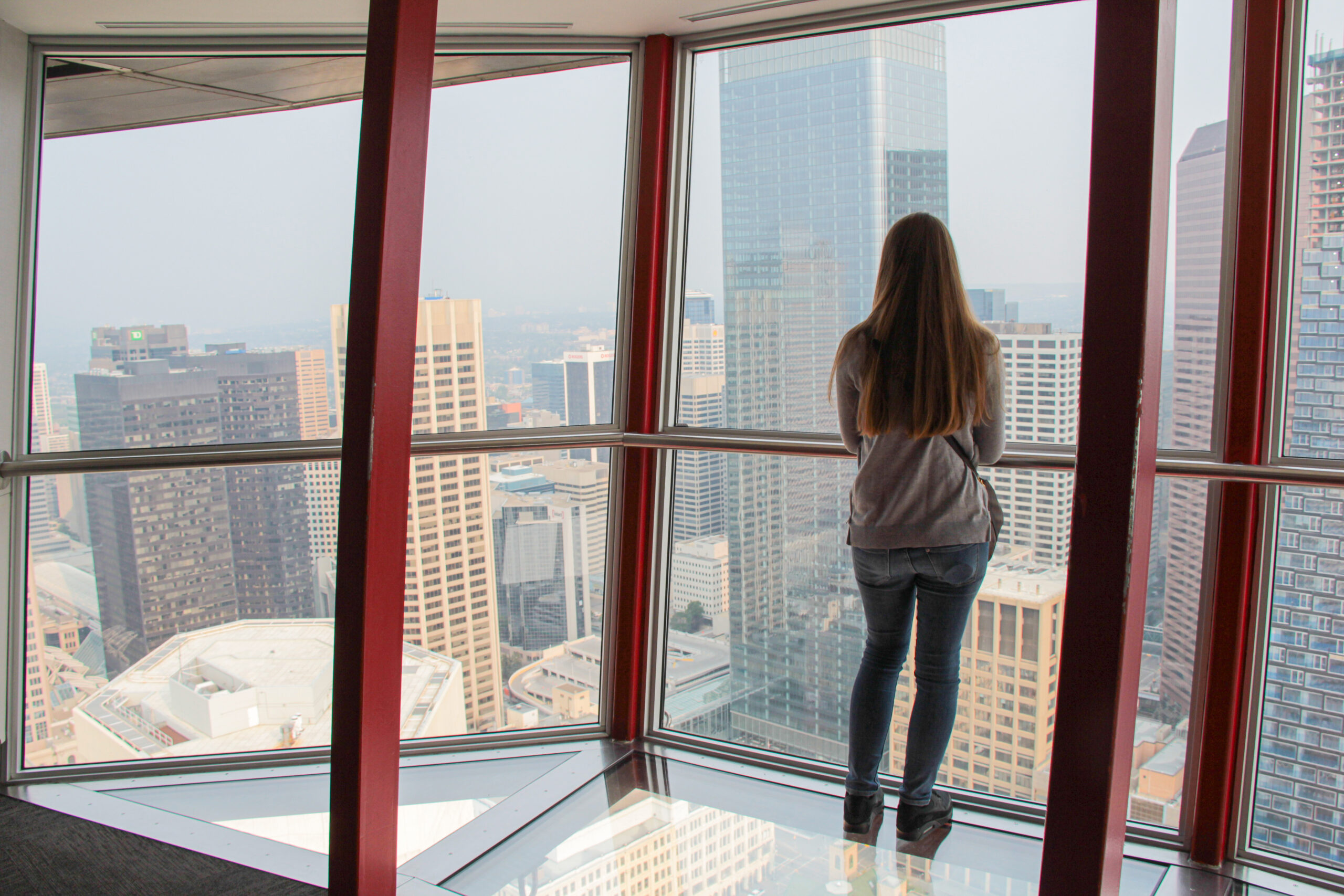
The highlight of the tower is certainly the glass floor extension on the observation deck. Most people are standing on the glass floor so if you want to get a picture without people, it is recommandable to visit the tower early in the morning. If the weather is very good, you can even see the starting of the rocky mountains from the tower.
Fort Calgary
Fort Calgary is a kind of interactive museum, which I highly recommend to visit. Basically, the fort was established in 1875 as Fort Brisebois by the Police. The fort was built firstly to control the illegal American whisky trade, secondly to prepare everything for the coming of the Canadian Pacific Railway and thirdly to create better relations with the Indigenous people to which the territory actually belongs.
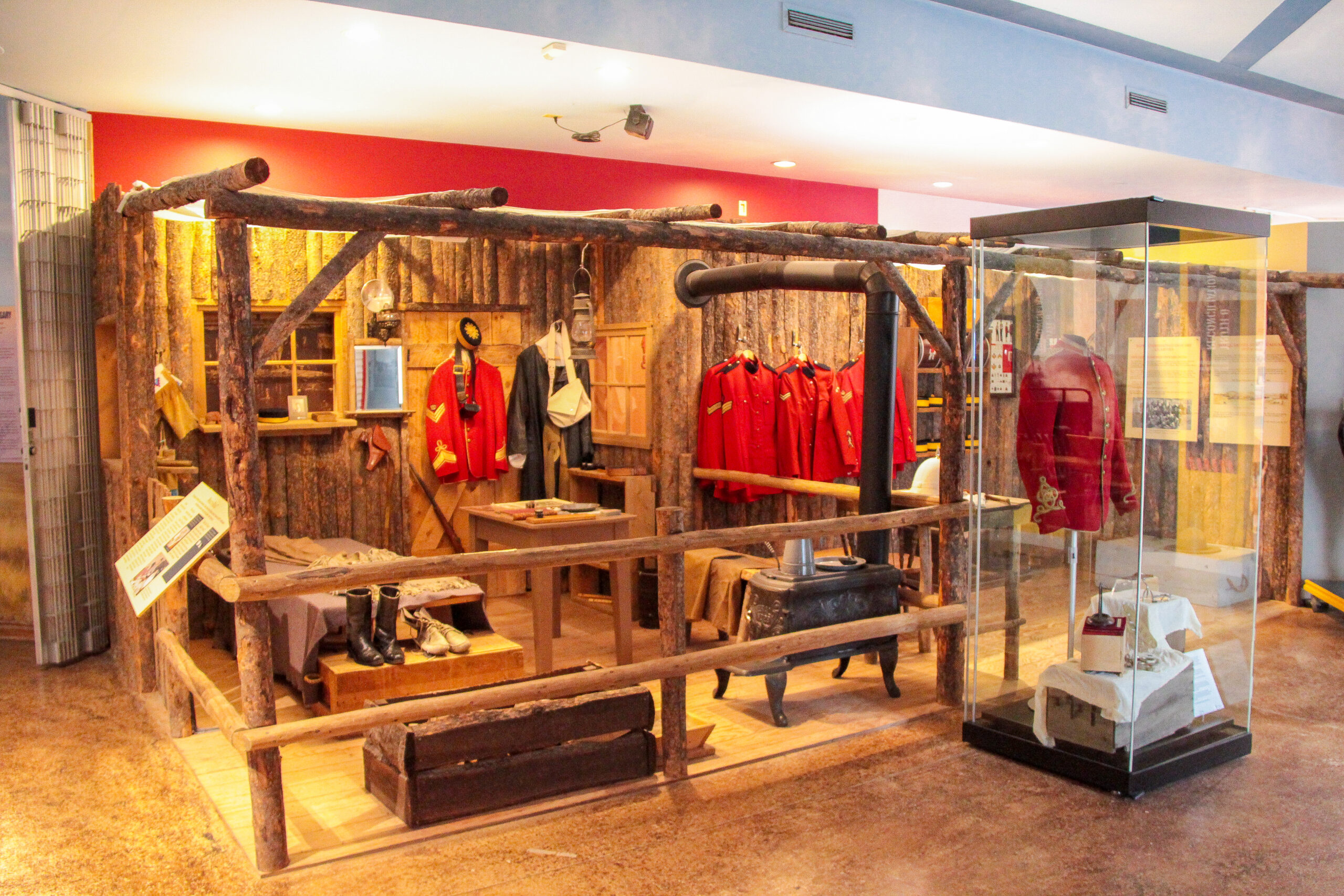
As the fort is located on the traditional territory of the Indigenous people, their culture and history also plays a major role in the exhibition of the historic site. You can simply walk through the history of Fort Calgary.
Big Rock Brewery
The Big Rock Brewery is a Canadian public beer company with head office and also the largest brewery in Calgary. Additionnaly, they also brew in Vancouver, Etobicoke and Toronto. The brewery was created in 1985 in Calgary and gained one brewmaster after the other.
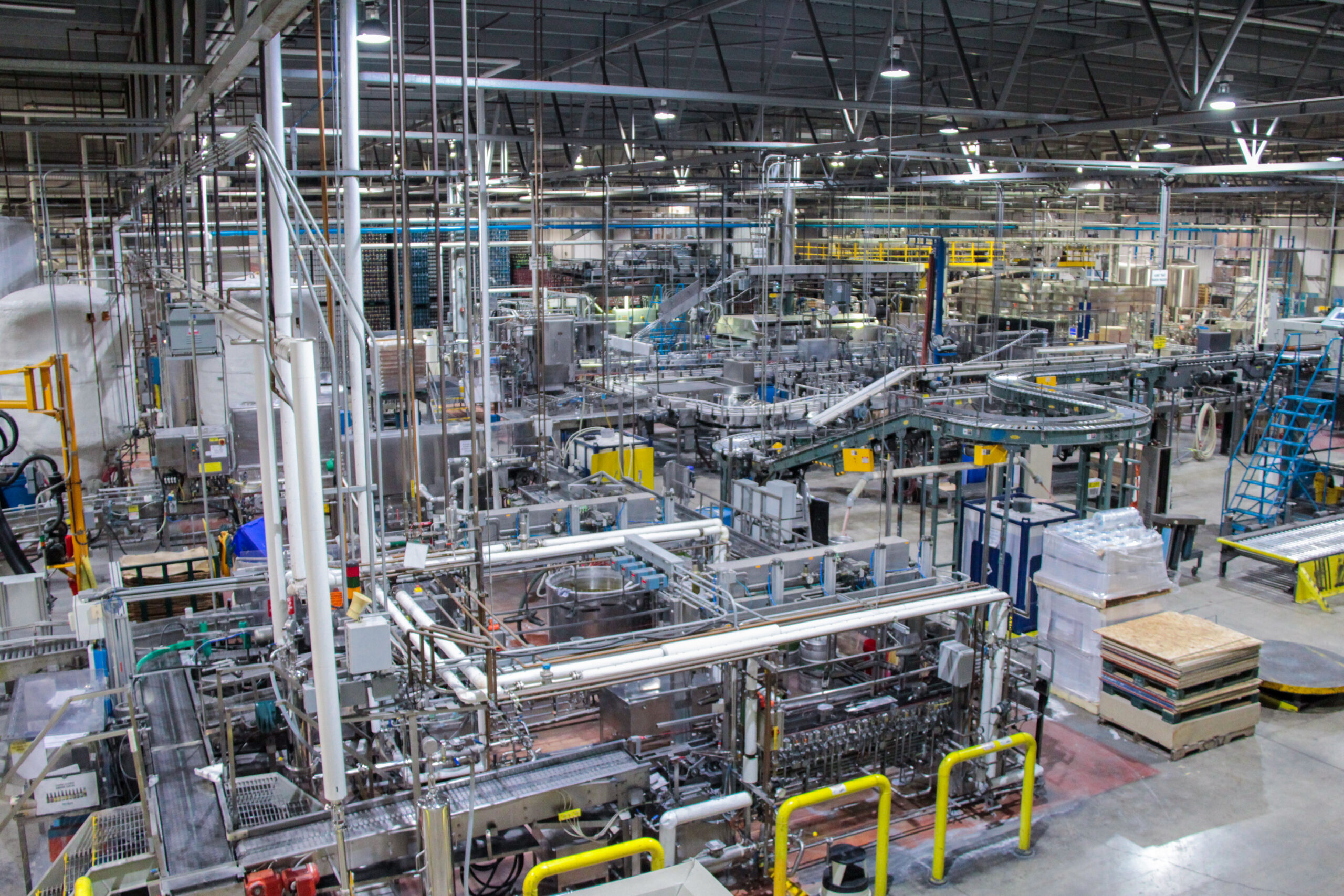
If you’re interested in beer, you have to do a tour of the brewery. It is interesting how the whole process of making beer works. Of course, after the tour, you’ll get some beer and ciders to try.
Hotel
Le Germain Calgary
The Hotel Le Germain Calgary is located in the heart of Calgary just at the foot of the Calgary Tower. It is a perfect starting point of your adventures as it is located only an hour’s drive from the Rockies.
Driving time: Calgary to Banff: 1 hour 30 minutes
Banff – 4 nights
Mount Norquay
Via Ferreta is an italian word for “iron road”, which is a protected climbing route where a steel cable, which is fixed into the rock, runs all along the route. It allows people to get to more difficult peaks, which were normally only accessible by experienced mountaineer. You can climb ladders and cross suspension bidges.
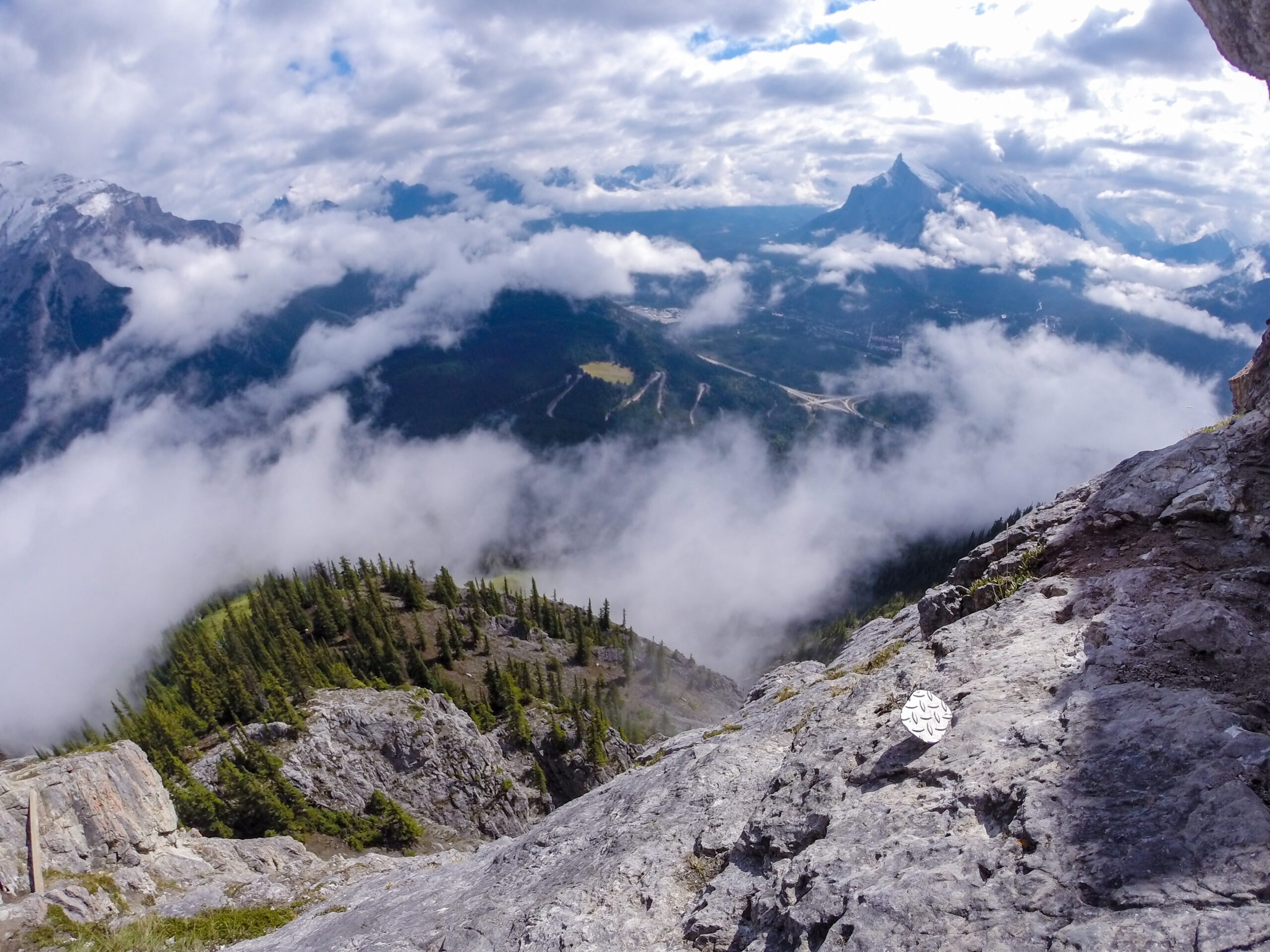
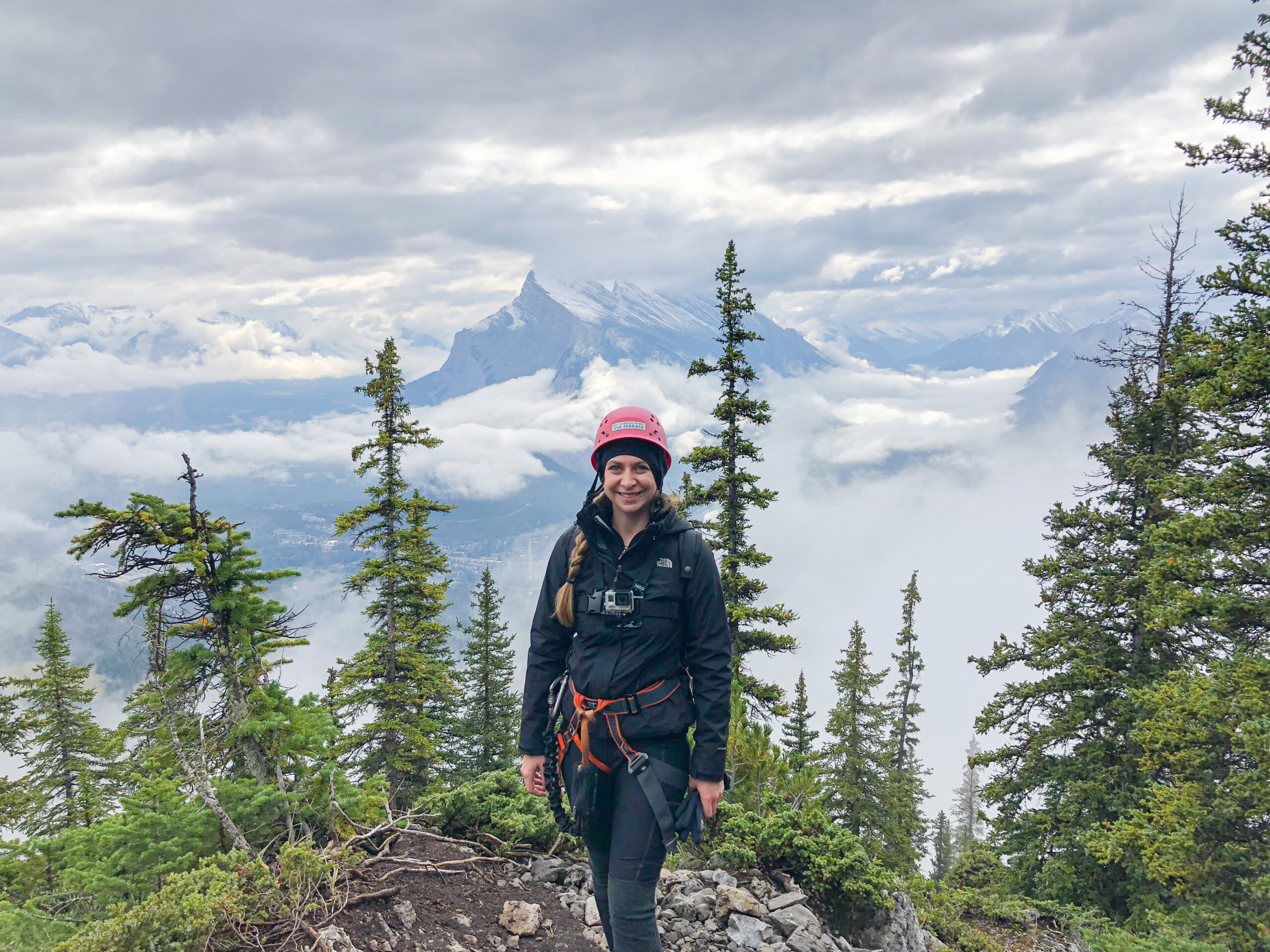
Since 2014, the Via Ferreta is possible on Mount Norquay and it is the only one in Banff National Park.
You can chose between four (4) different routes, which all have another degree of difficulty. You can chose between those 4:
- Explorer: 2 – 2.5 hour round trip | 1km distance | 2235m above sea level | 145m elevation gain | $175
- Ridgewalker: 3.5 – 4 hour round trip | 1.4km distance | 2300m above sea level | 260m elevation gain | $225
- Skyline: 4.5 – 5 hour round trip | 2.5km distance | 2380m above sea level | 290m elevation gain | $290
- Summiteer: 5 – 6 hour round trip | 3.2km distance | 2450m above sea level |360m elevation gain | $365
For everyone who will try it, but is unsure about the route, I can recommend the Ridgewalker route, which is not that difficult but will give you the feeling of climbing up a mountain.
Read next: Via Ferreta on Mount Norquay.
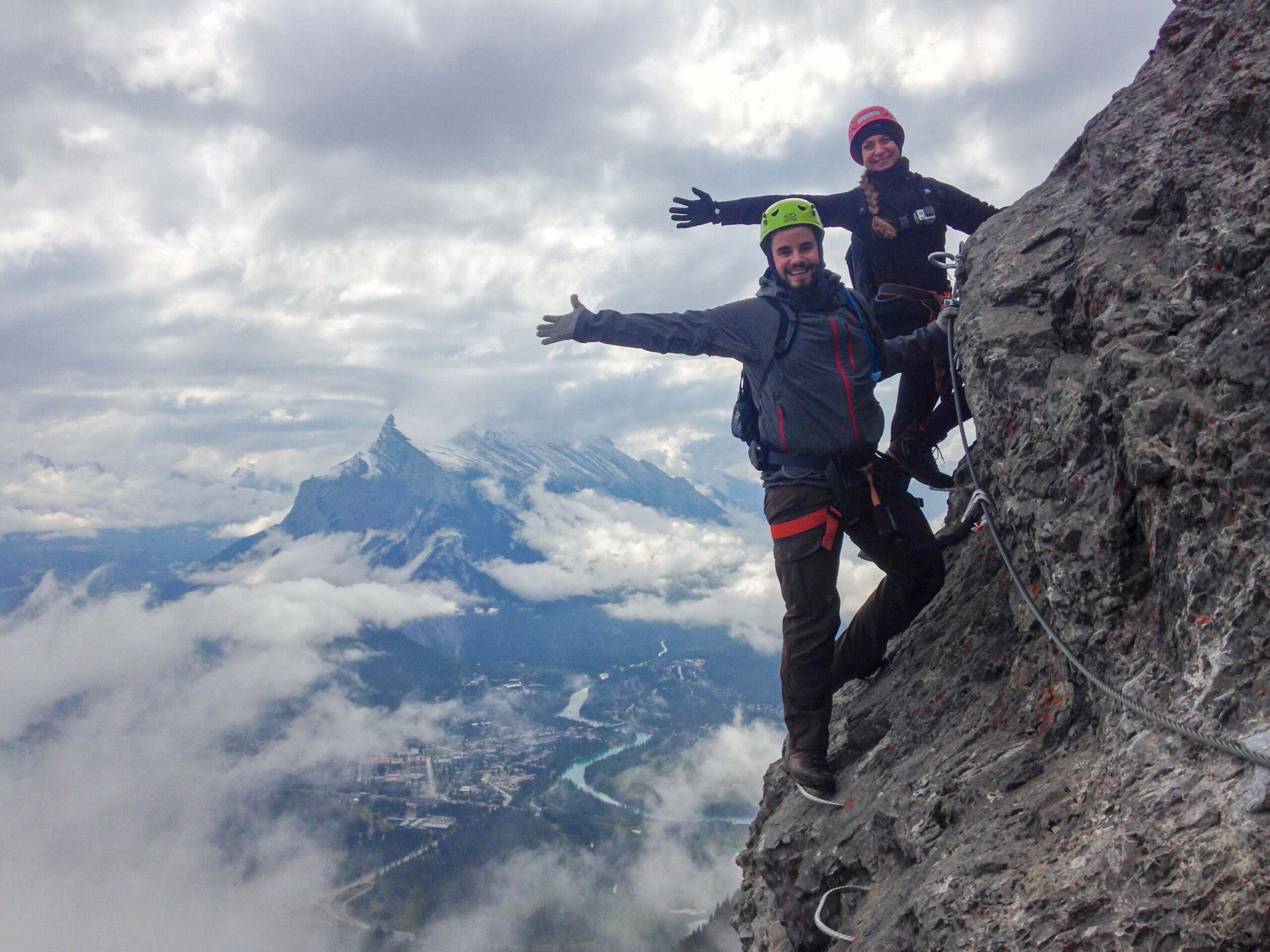
Sulphur Mountain
The Banff Gondola is a must do during your stay at Banff National Park. It will take you op to Sulphur Mountain, which is 2.292 m high. It has become such a famous place because of its spectacular view over the Town of Banff. Beside the amazing view over the Town of Banff, you’ll also see six Mountain Peaks at once.
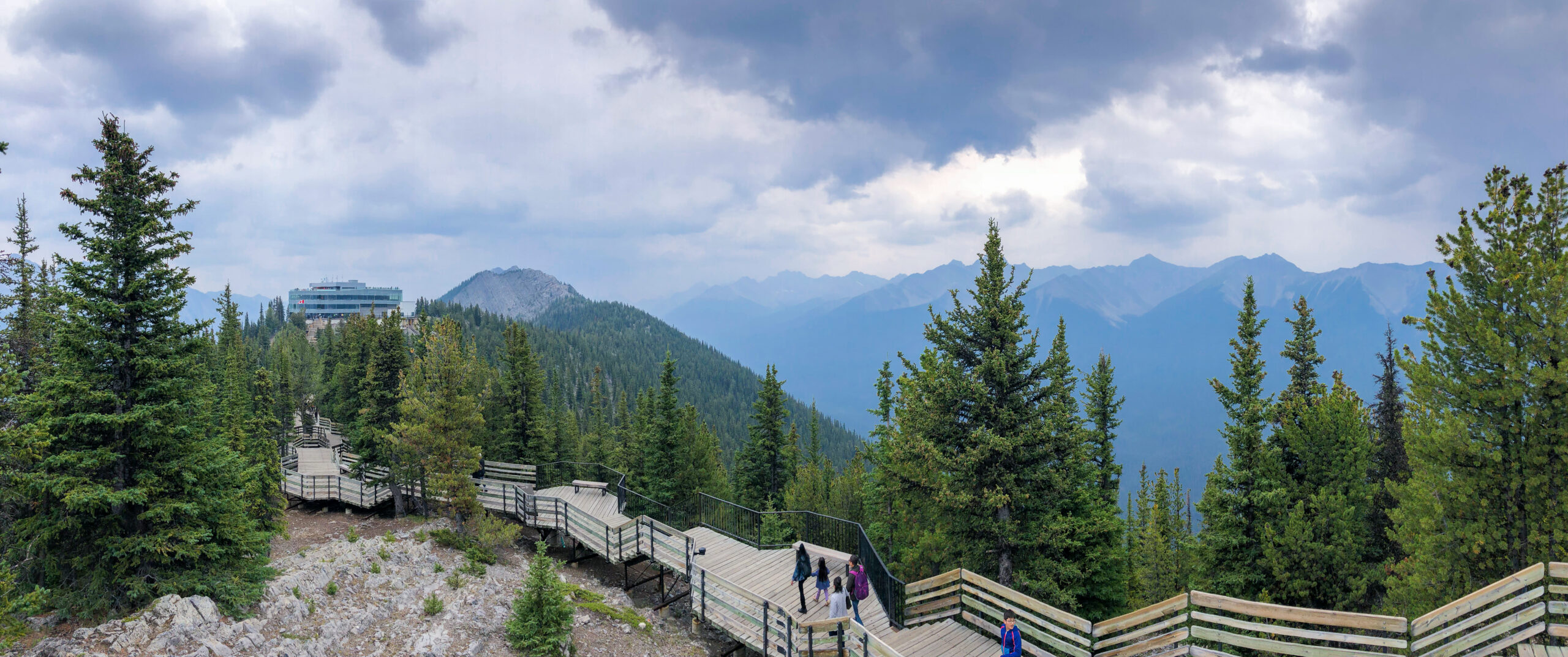
Sulphur Mountain is also the home of two hot sulphurous springs. The lower one if the Cave and Basin National Historic Site an the higher one is the Banff Upper Hot Springs. Last one is very popular among visitors and often overcrowded! As both attractions, Banff Gondola and the Upper Hot Springs, are located close to each other, you can easily combine those two. The other warm water spring, which can be visited at the Cave and Basin National Historic Site was discovered by three railway workers in 1883. But those hot spring are no longer open to the public for taking a bath.
Read next: Banff Gondola and Sulphur Mountain.
Banff Upper Hot Springs
In 1883, Canadian Pacific Railway workers discovered hot water and steam flowing out of a cave, which is known today as the Cave and Basin Hot Springs at the foot of Sulphur Mountain. Only in 1932, the Upper Hot Springs bathhouse opened complete with sulphur water and all the facilities as known today.
Already indigenous people knew the power of the hot springs. Back in time they were meant to cure illness and maintain health and were therefore sacred waters.
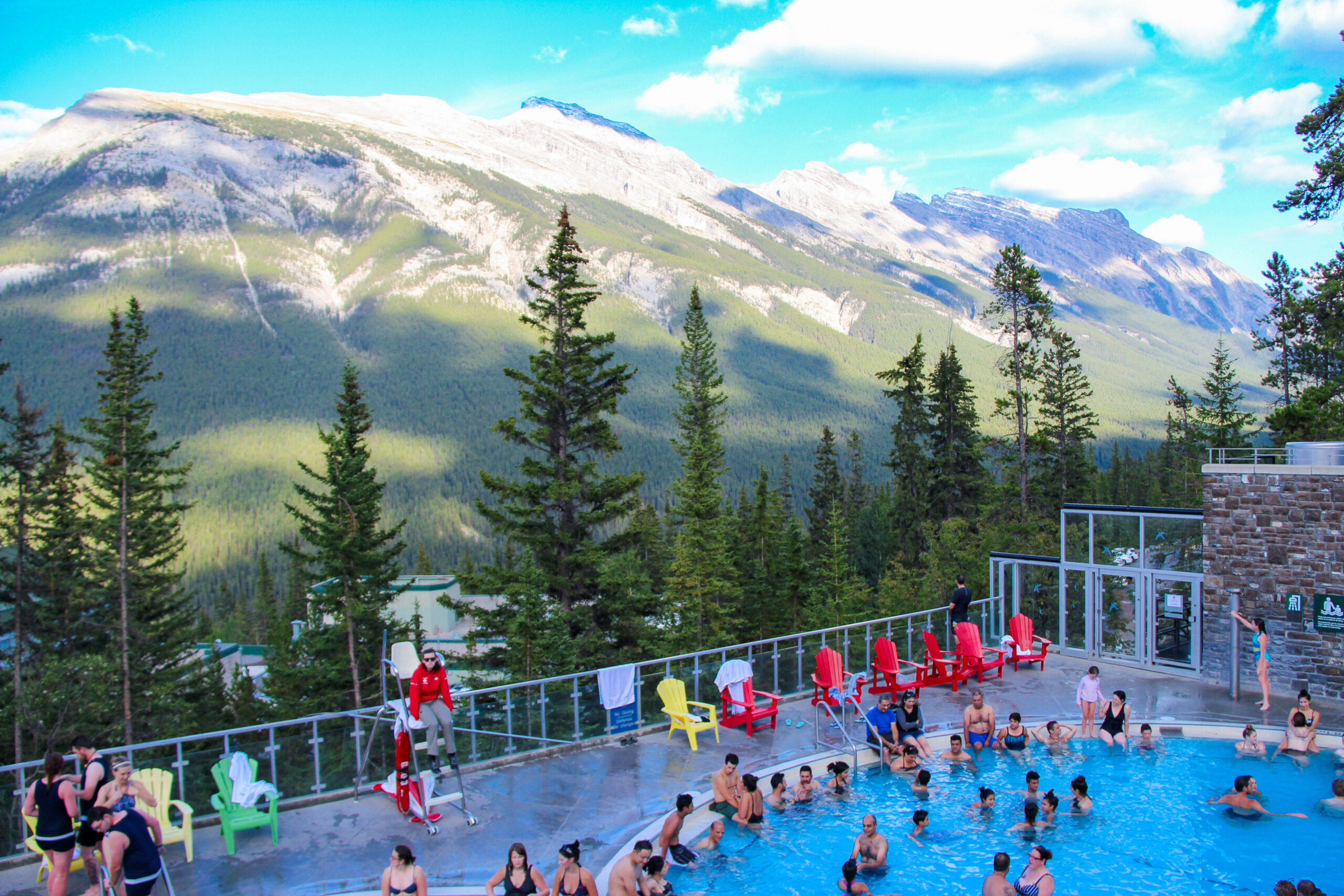
The Banff Upper Hot Springs are the last ones to be open for public for bathing, which has the side effect that it is always very crowded. For me, you cannot enjoy a calm bath if there are plenty of people around you.
Bow Falls and Bow River
Bow River is a river in Alberta Canada, which runs also through Calgary. It is a perfect place to try fishing.
Bow Falls is a rather small waterfall on the Bow River. It is located near the Banff Springs Hotel. As it is easily reachable by foot, Bow Falls are a big tourist attraction.
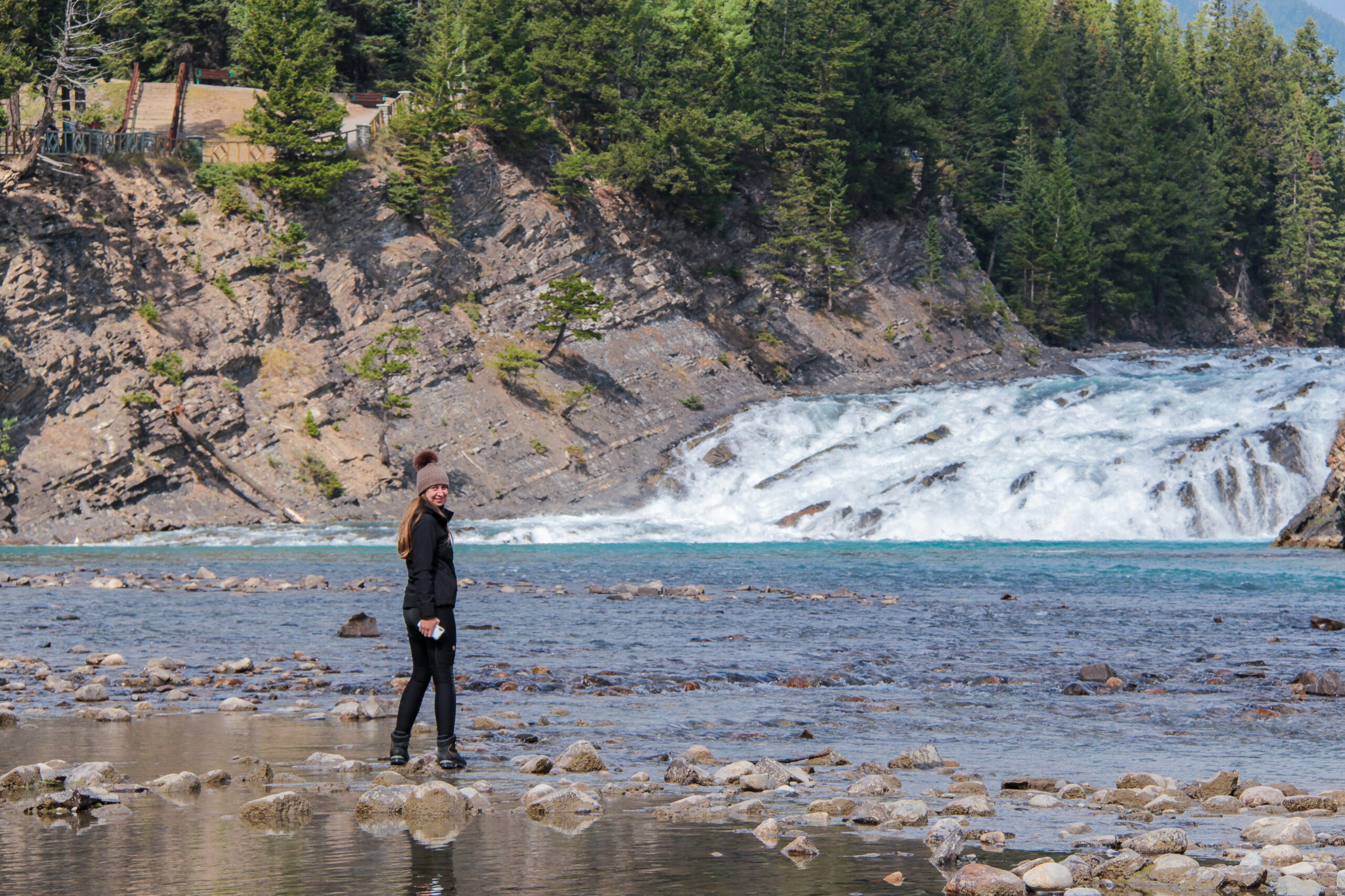
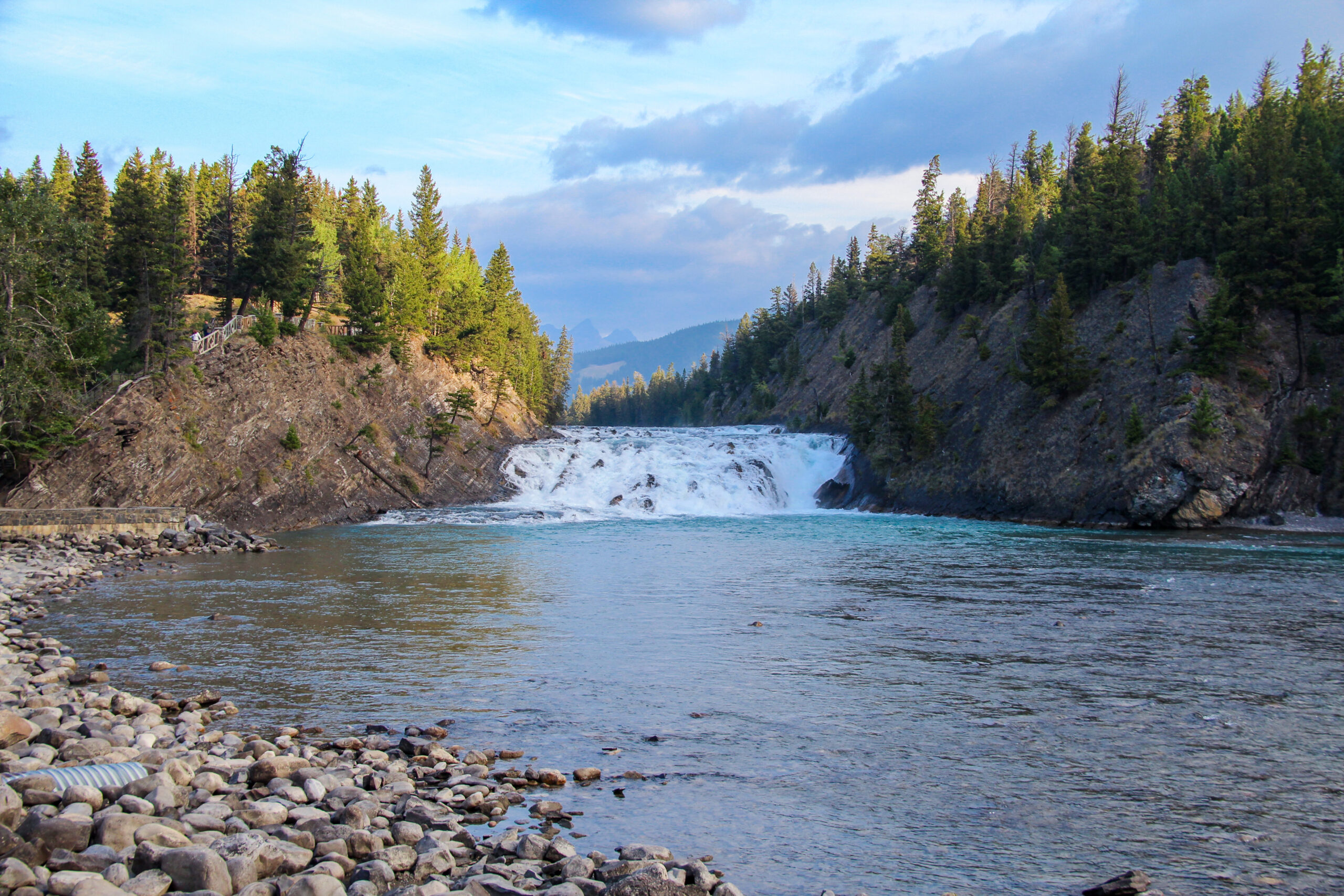
Cave and Basin National Historic Site
Cave and Basin Hot Springs were the first hot springs discovered in Banff National Park and therefore also the birthplace of Canada’s first national park. It all started with hot water coming out from a crack in the rocks of a mountain. Indigenous people already knew about the hot water but the railway workers saw their chance to make money with that hot water. They were denied the ownership and the Government of Canada took the chance to create a national park.
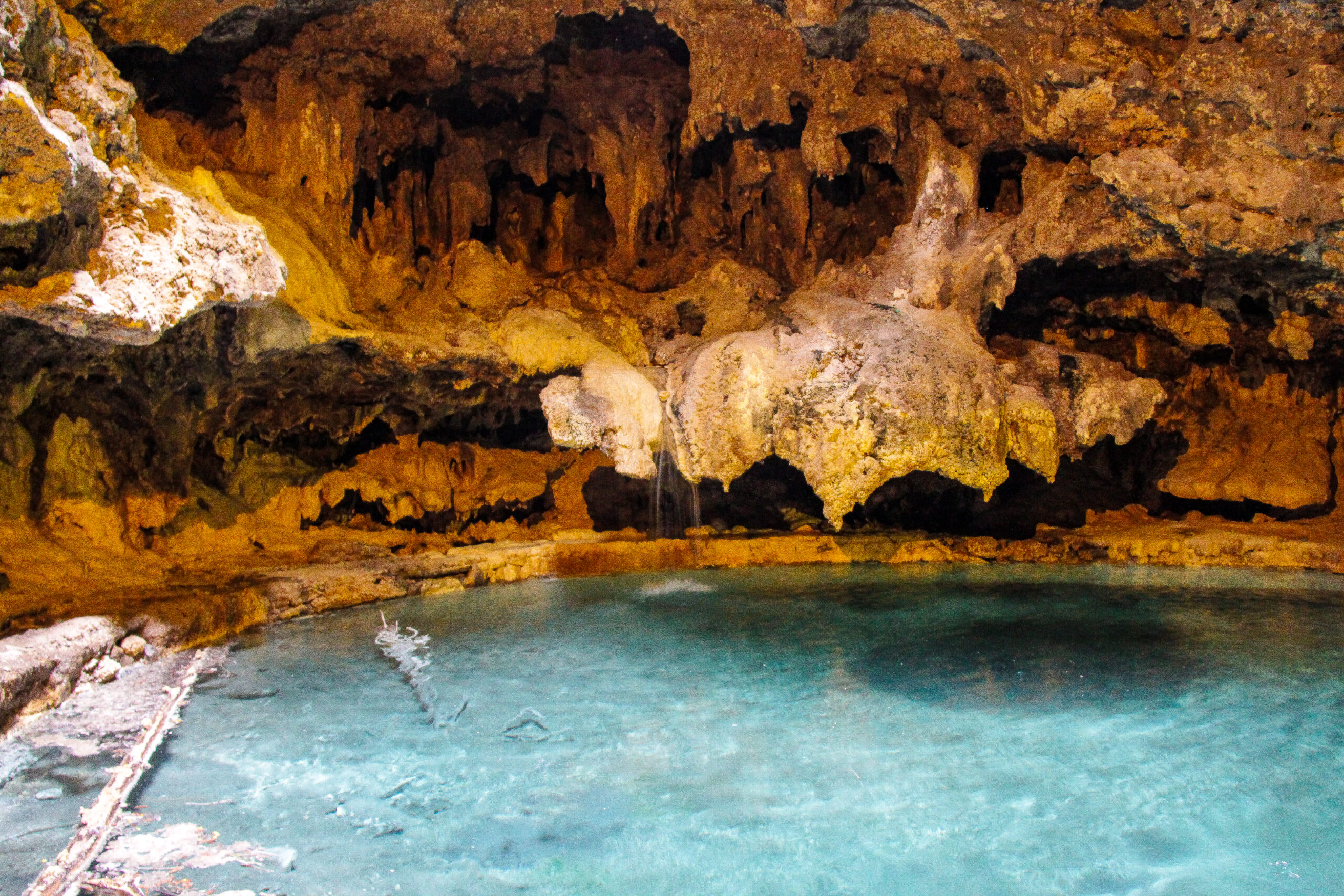
This historical starting point of Banff National Park is therefore the perfect starting point for a museum. Cave and Basin National Historic Site is a small but very informative museum located in the heart of Banff National Park. Interactive exhibits and film presentations will show you how the hot springs were founded but the most exciting is definitely the hot springs itself.
Whyte Museum of the Canadian Rockies
The Whyte Museum of the Canadian Rockies is the fourth largest cultural and historical museum in Alberta. It opened in 1968 and collects, preserves and exhibits the cultural heritage of the Canadian Rockies. It contains even a library and archives. The founder or rather the initiators of the museum were Peter and Catharine Whyte. During summer you can even visit two homes and four cabins, which show the lifestyle of Banff’s earlier pioneers.
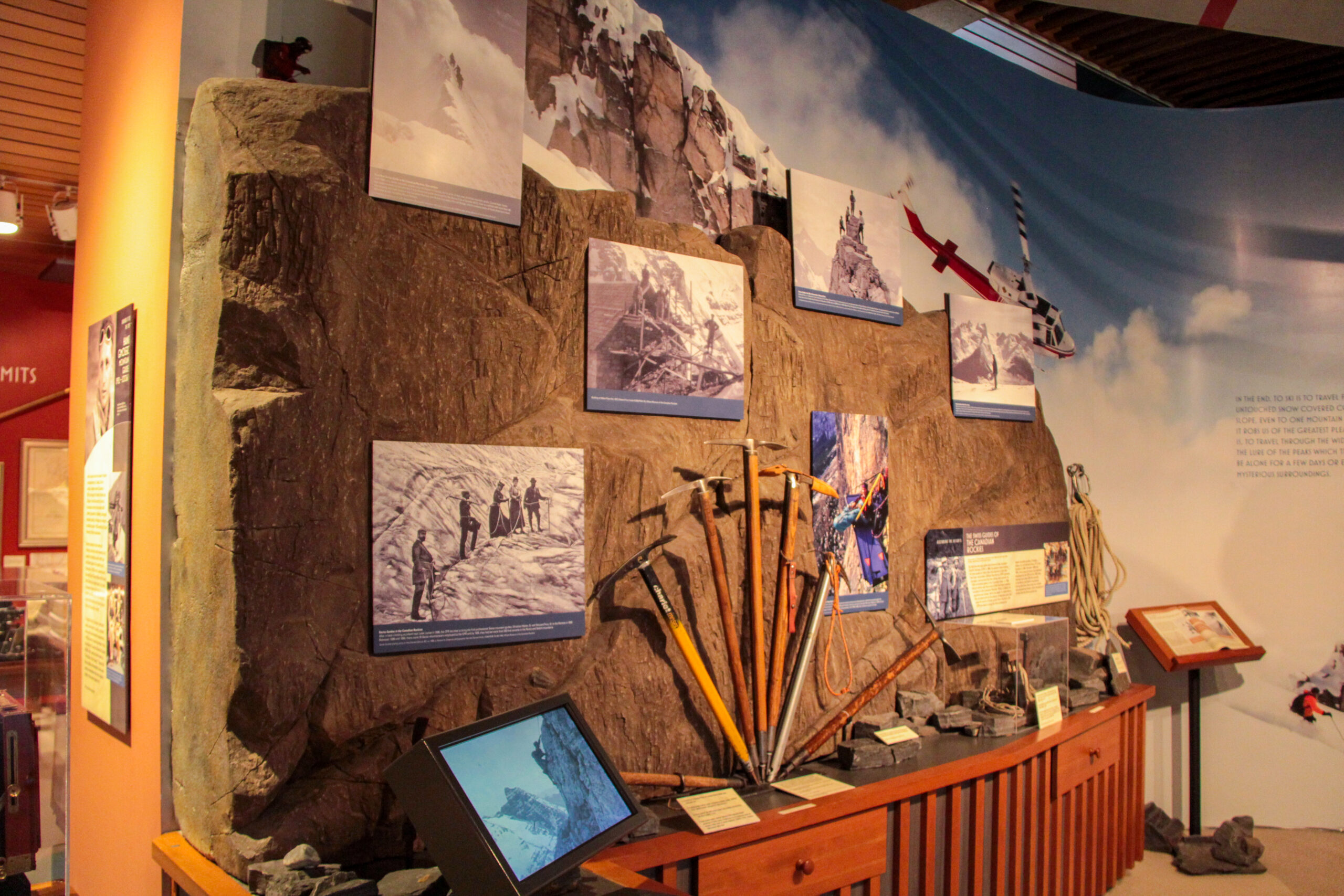
Hotel
Hidden Ridge Resort
I can only recommend the Hidden Ridge Resort for your stay in Banff. It is not located on the main street in Banff but a little bit away from the downtown area. Basically it is not a typical hotel but rather a vacation rental with a fully equipped kitchen and even a wood burning fireplace. Unfortunately it was not allowed to make a fire in the flat because of the bushfires.
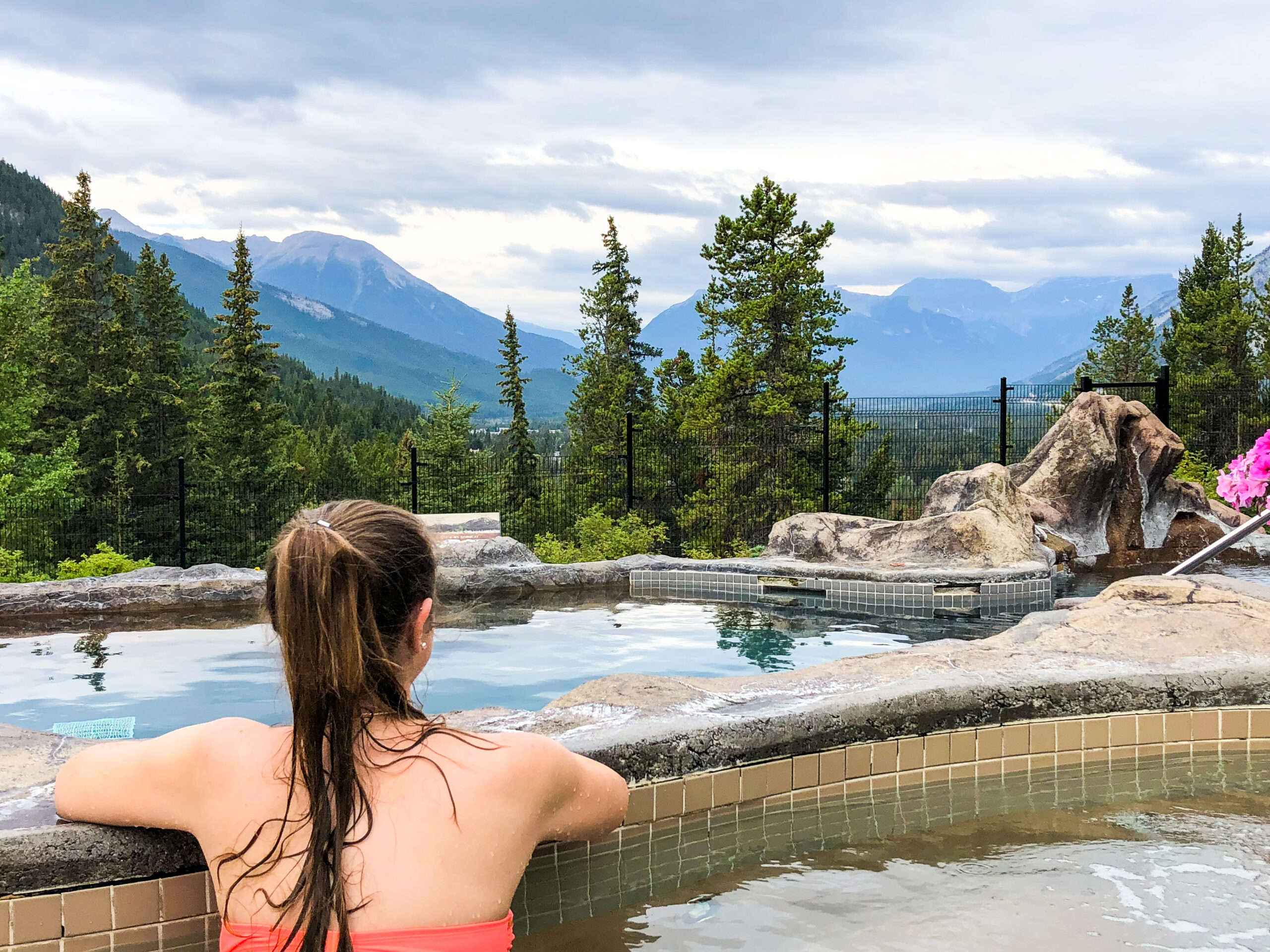
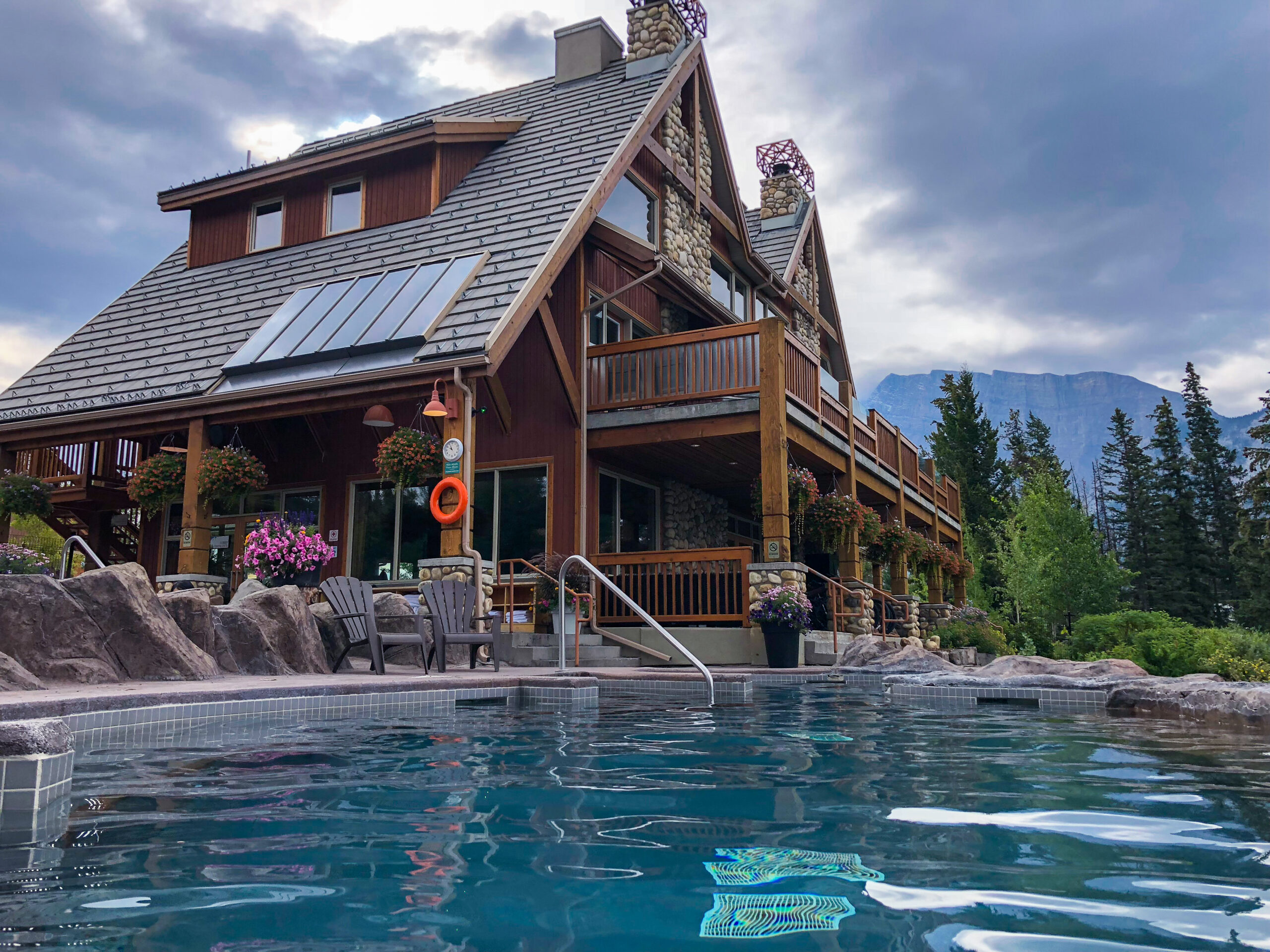
The Hidden Ridge Resort also have an upper outdoor hot tub and a lower outdoor wading pool and even a sauna. There is nothing better than to jump into a hot tub after a long day of hiking or in the morning right after waking up.
Bow Valley Parkway
Johnston Canyon
Johnston Canyon is basically a really easy hike in Banff National Park. There are Lower and Upper Falls with on both ways many viewpoints which will give you a view over the canyon down to the deep blue creek below. With overhanging canyons walls, waterfalls and the deep pools of Johnston Creek, Johnston Canyon is a breathtaking natural attraction in Banff National Park.
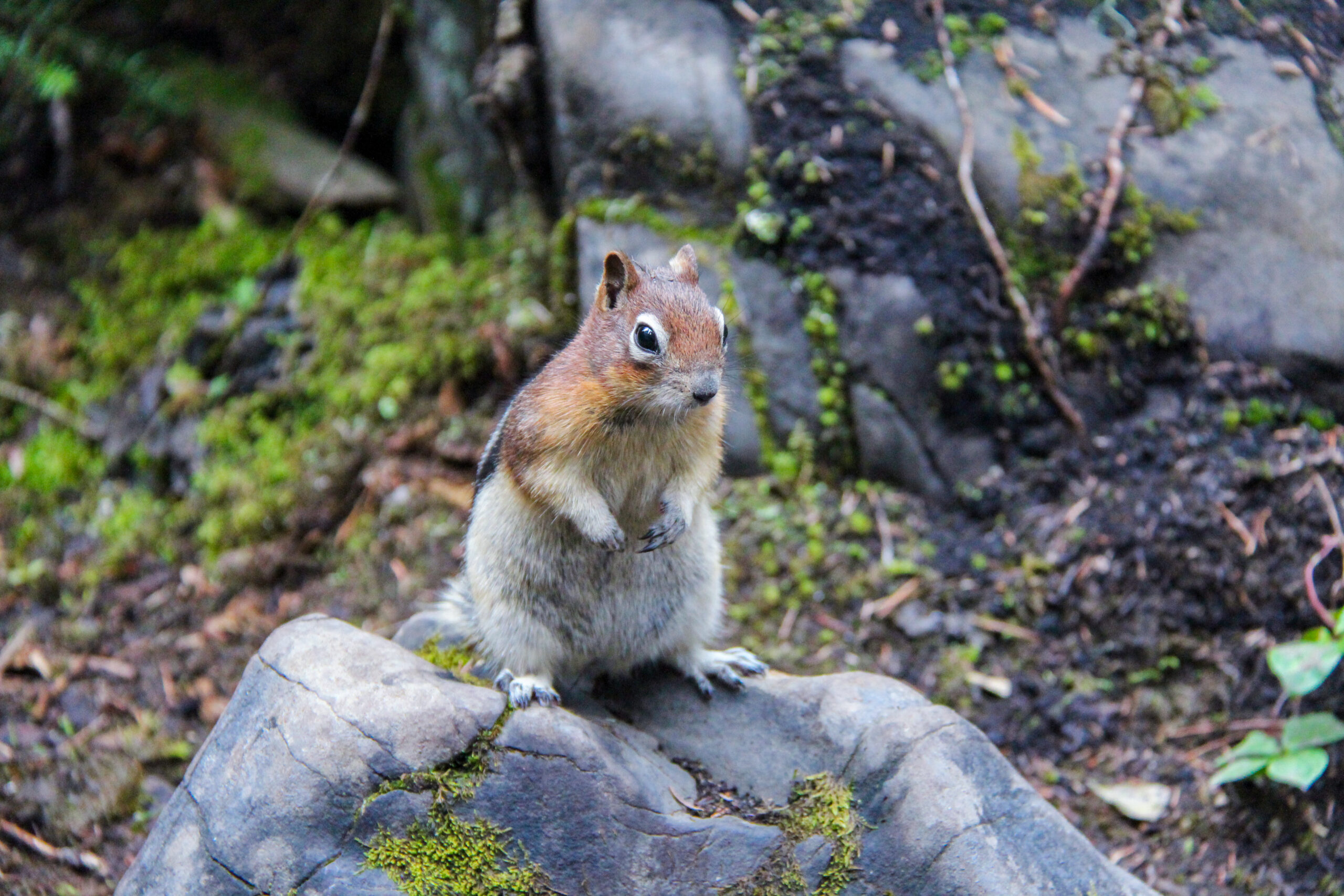
The trail to the Lower Falls goes firstly through the forest and then on catwalks just beside Johnston Creek. This trail is about 1,1 km and rather flat and smooth. It will take you about 30 minutes to reach the Lower Falls. In summer, it is really crowded and you need patience to finally see the Lower Falls.
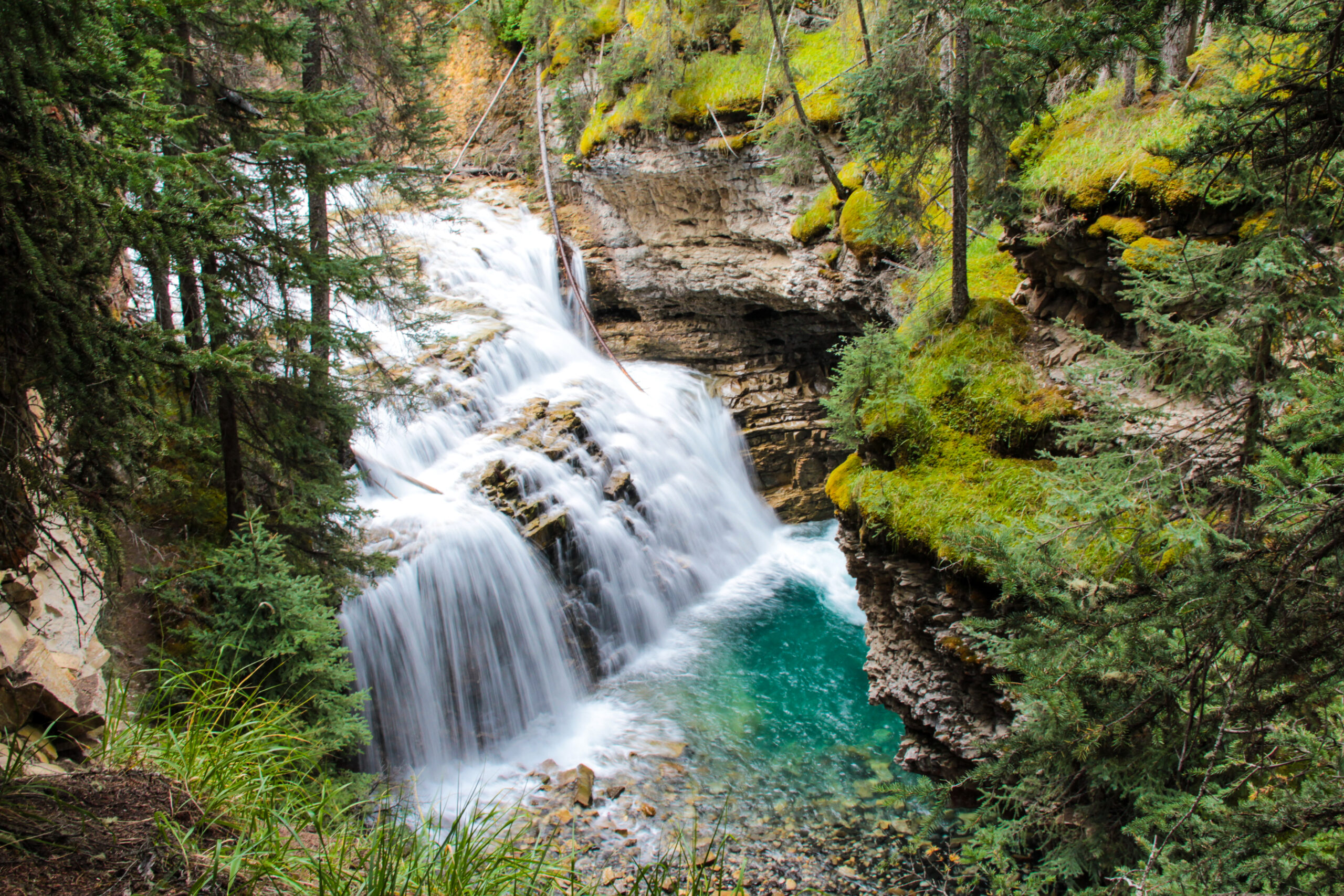
The trail to the Upper Falls is not as easy as the one to the Lower Falls. It is a little steeper and will take you one hour for one way. This trail is about 2,6 km and will take you trough the forest. Basically the Upper Falls are 40 meters high and fall into a deep pool below.
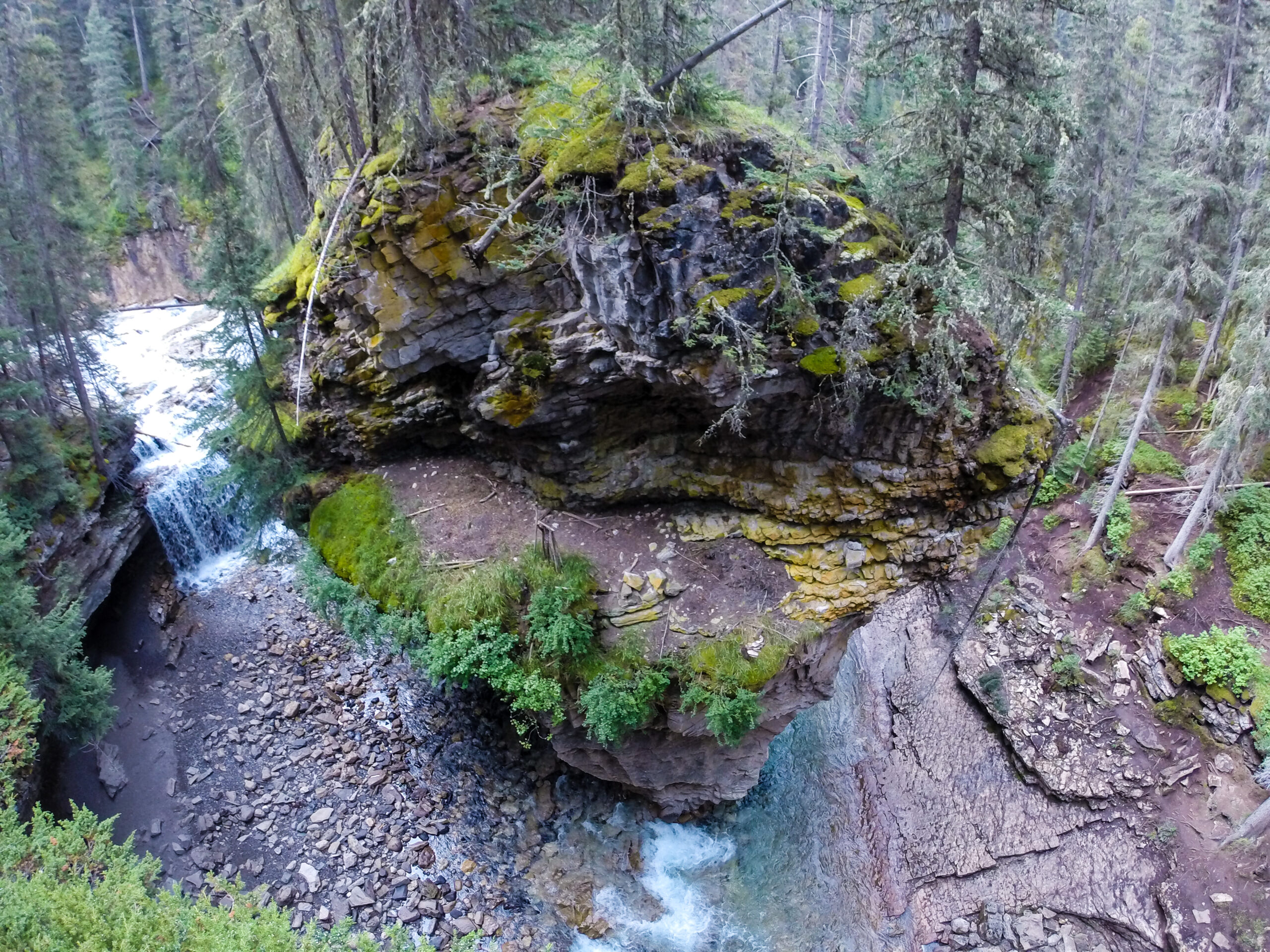
You might have seen pictures from Johnston Canyon with a view from a cave on a rock with water in the background. Don’t try to find the place. If you want to hike to that place you will disturb birds, which is really not worth the picture. Respect the nature and its habitants.
Driving time: Banff to Lake Louise: 40 minutes
Lake Louise – 3 nights
Moraine Lake
Moraine Lake is one of the most known lakes in the world. It is a glacially-fed lake in Banff National Park situated in the Valley of the Ten Peaks. As the lake is glacially fed, it only reaches it crest middle to late June. The unique colour of a distinctive shade of azure blue, is due to the refraction of light of the rock flour deposited in the lake.

The area around Moraine Lake offers also several walking/hiking trails. Certainly the most common one is the Rockpile Trail, which is along the actual moraine and leads you to the most photographed view in all of Canada. This trail is approximately 300 meters long with an elevation of 24 meters. The view from the Rockpile is called the „Twenty Dollar View“ because it is on the reverse side of the Canadian twenty dollar bills from 1969 and 1979.
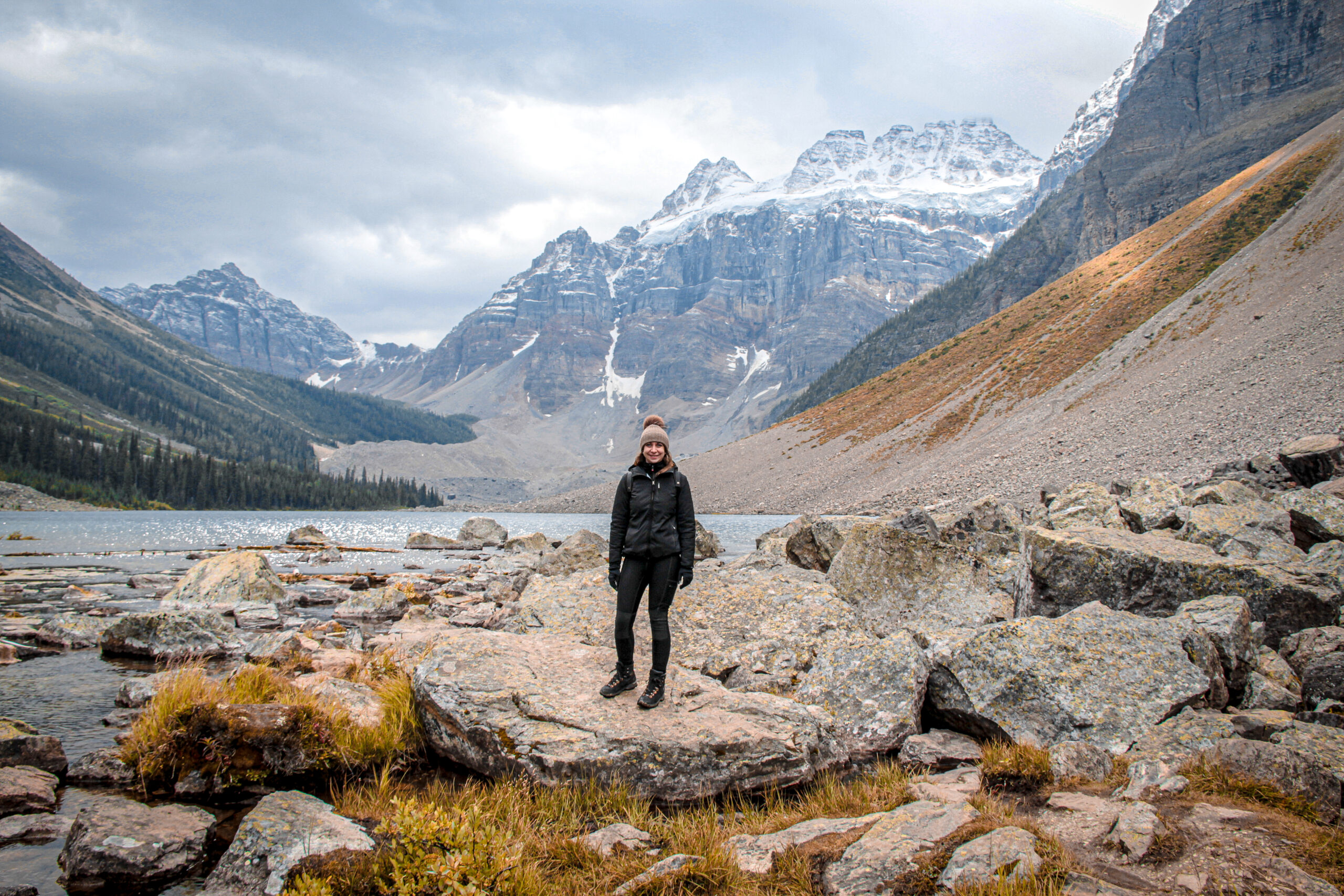
Another popular hike in that area is the Consolation Lakes Trail, which is about 5,8 km and rather an easy hike.
Whenever you want to visit Moraine Lake be sure to be there as early as possible and if I write early, I mean really early. I was there at 7 in the morning and the one parking lot was already full. Moraine Lake is one of the most visited tourist attractions in Banff National Park and therefore also always crowded.
Read next: Top 10 things to do in Banff National Park, Canada
Lake Louise
Beside Moraine Lake, Lake Louise is one of the most famous lakes in Banff National Park. It is a glacial lake, which get its turquoise colour of the water coming from rock flour carried into the lake by melt walter from the glaciers around the lake.
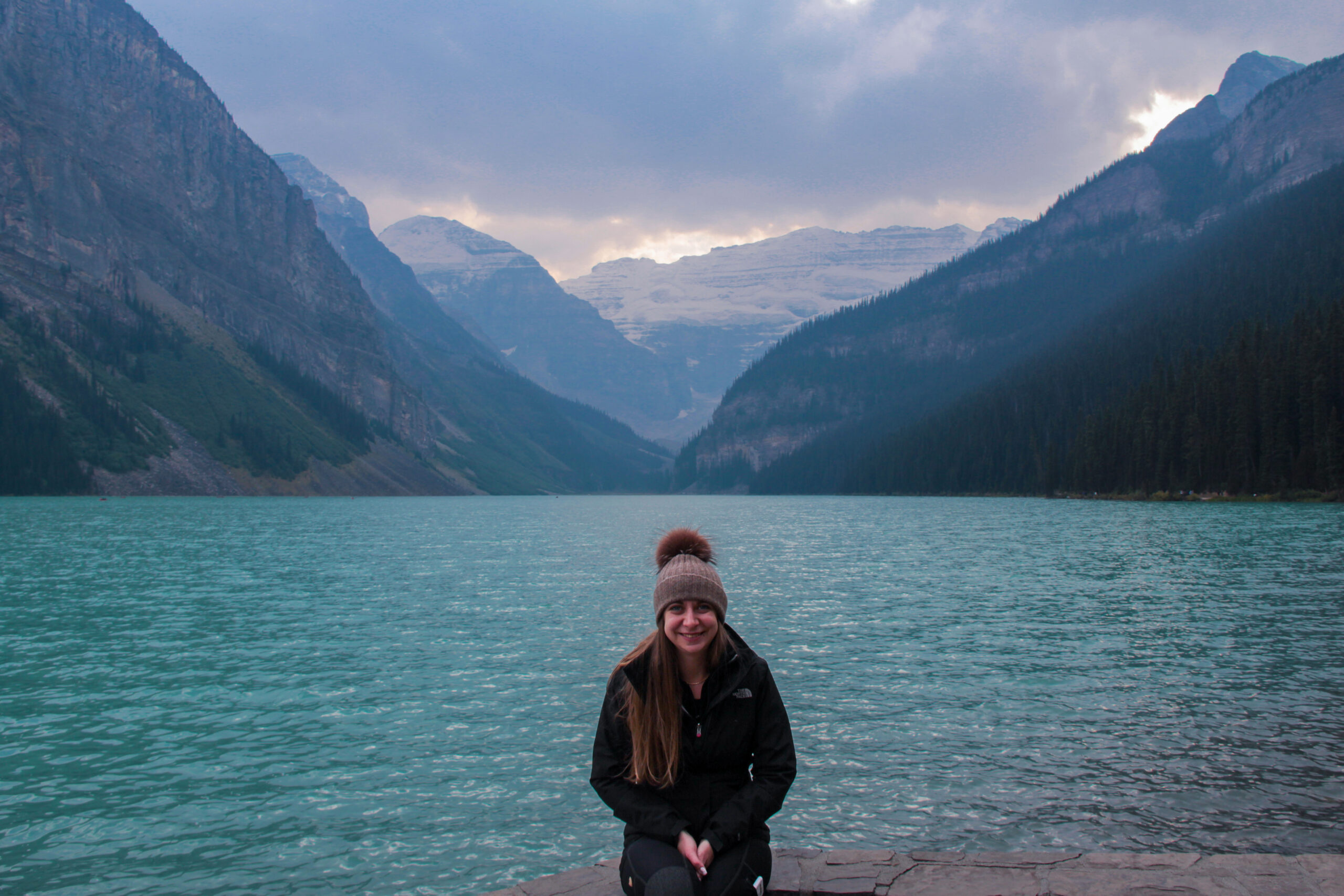
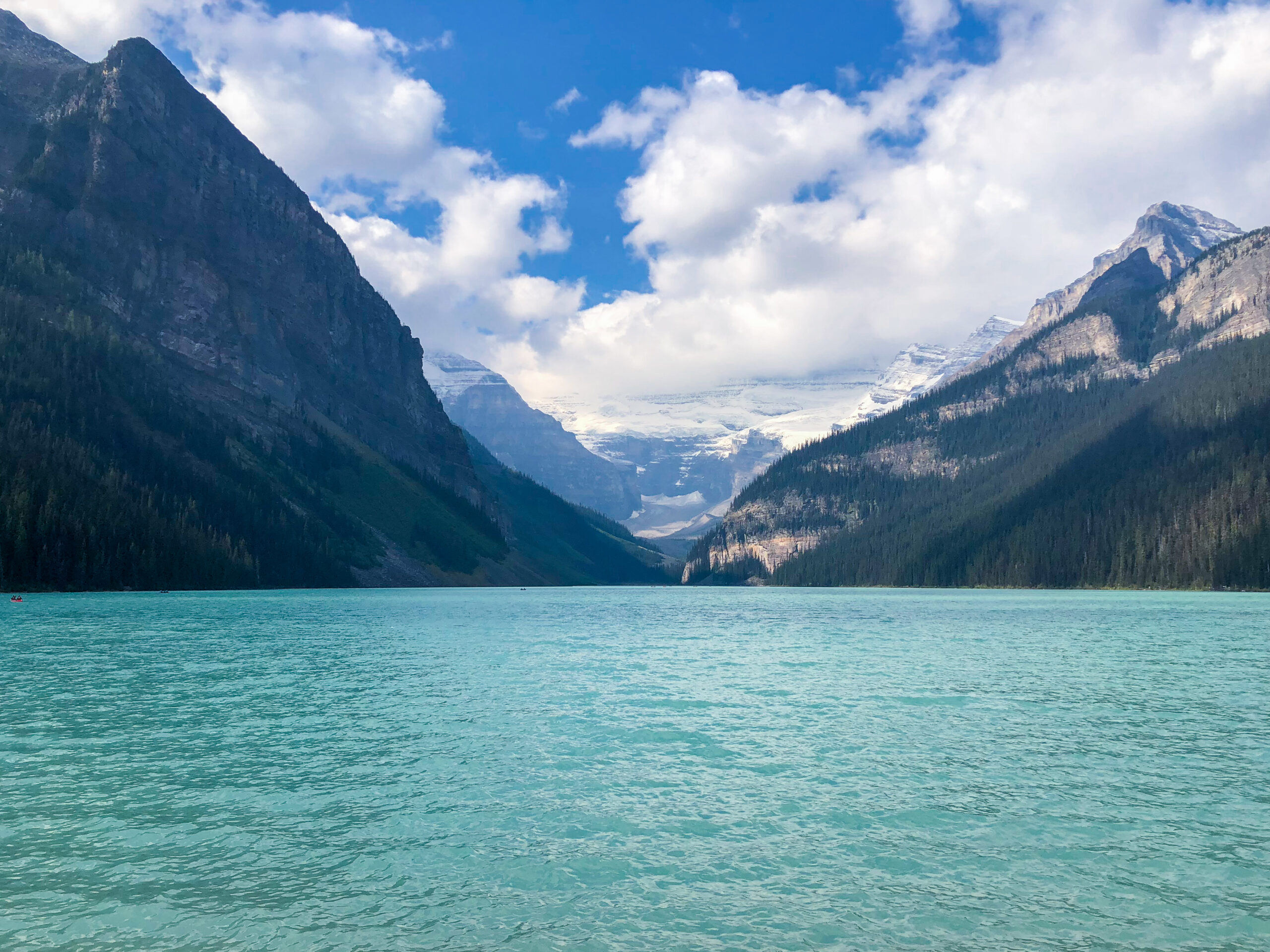
As it is one of the most famous places in the Canadian rockies, it is busy all year round. In summer you have a lot of hiking trails and you can rent a canoe on Lake Louise and in winter the lake is a big ice skating pist.
The most famous hike is the one which leads you to Lake Agnes with its Tea House. The trail is approximately 7 km and it takes you about 2 hours do get there (one way). As it is a well-known stop for hikers, it is very crowded up there and it is not that easy to get a table inside the Tea House.
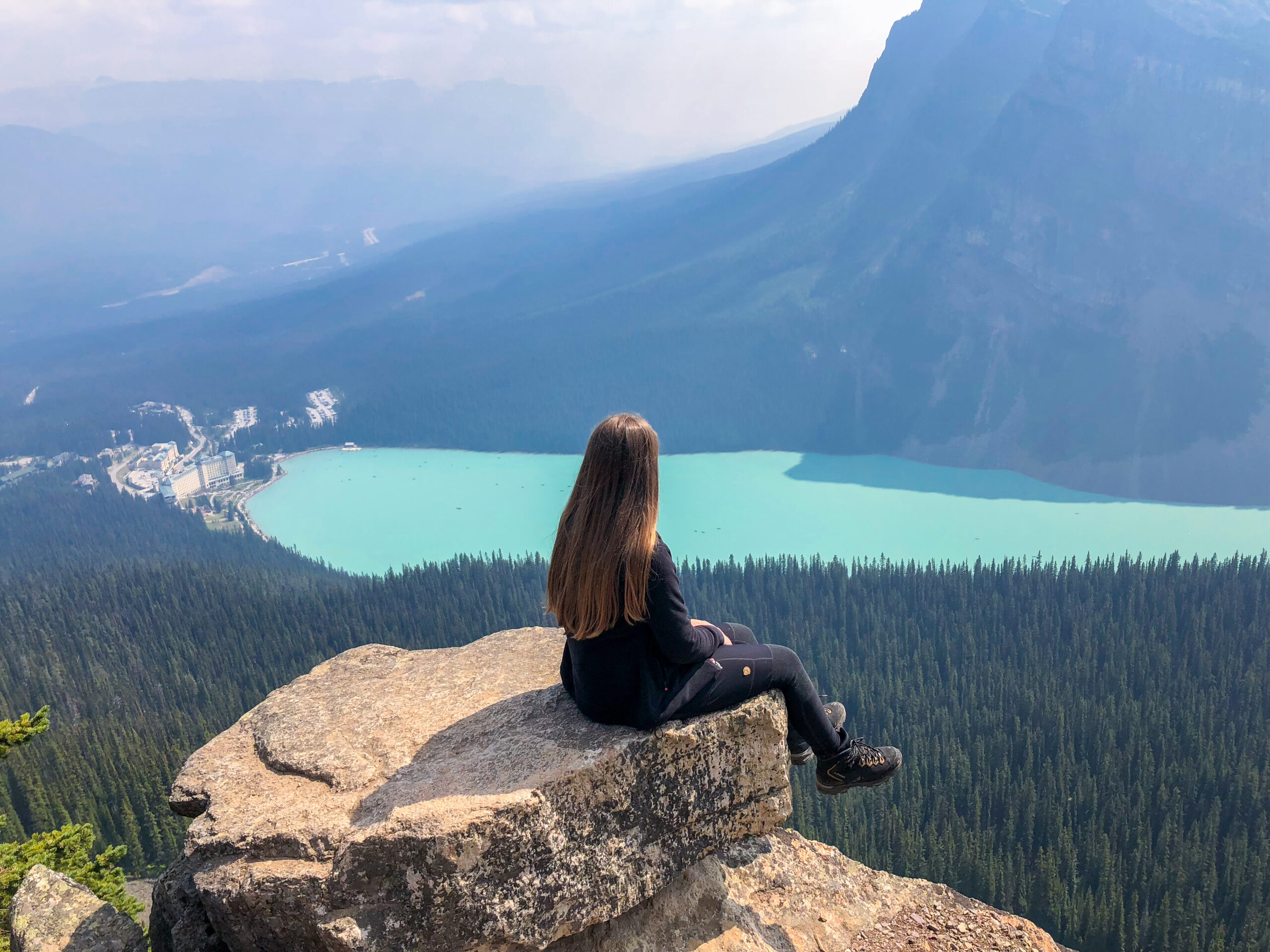
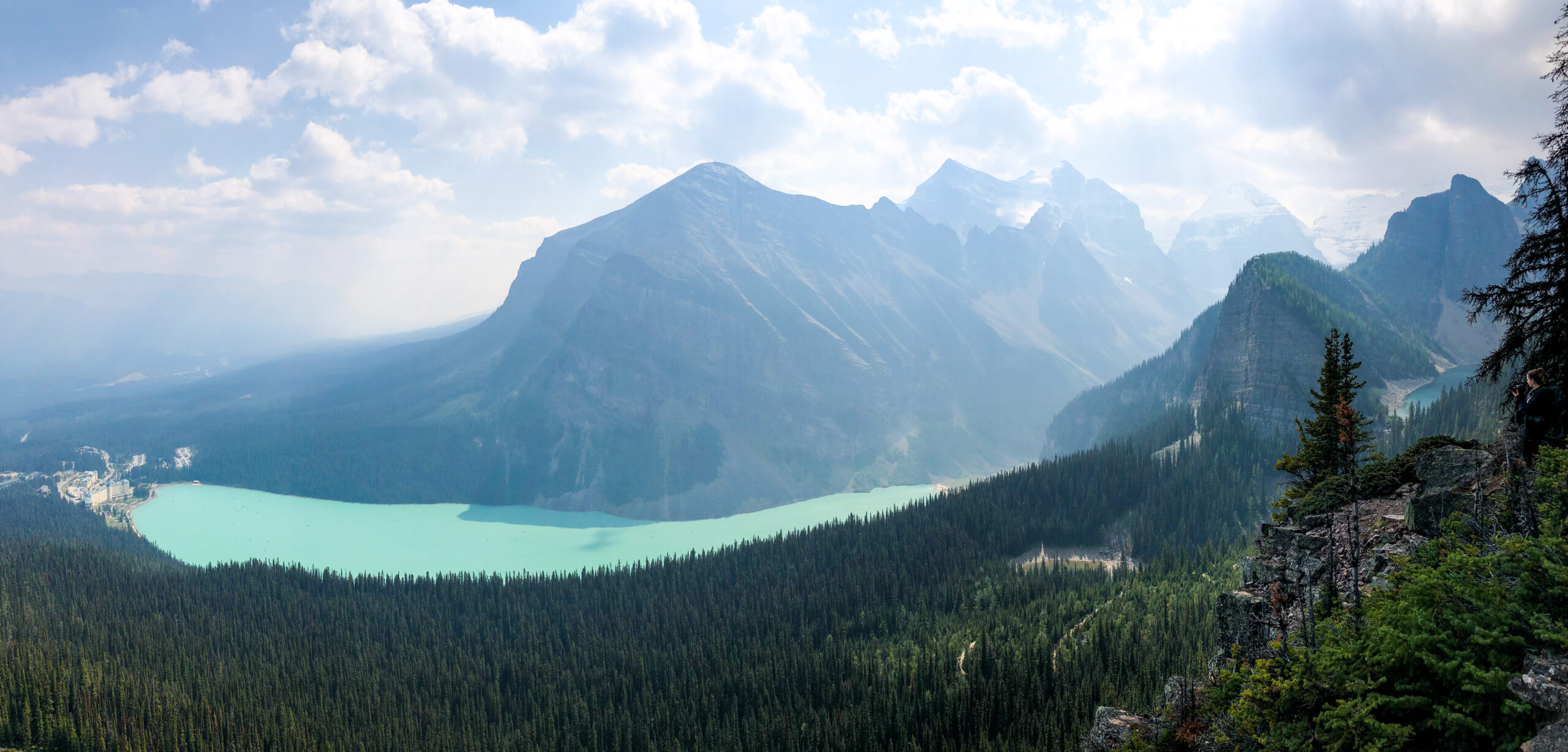
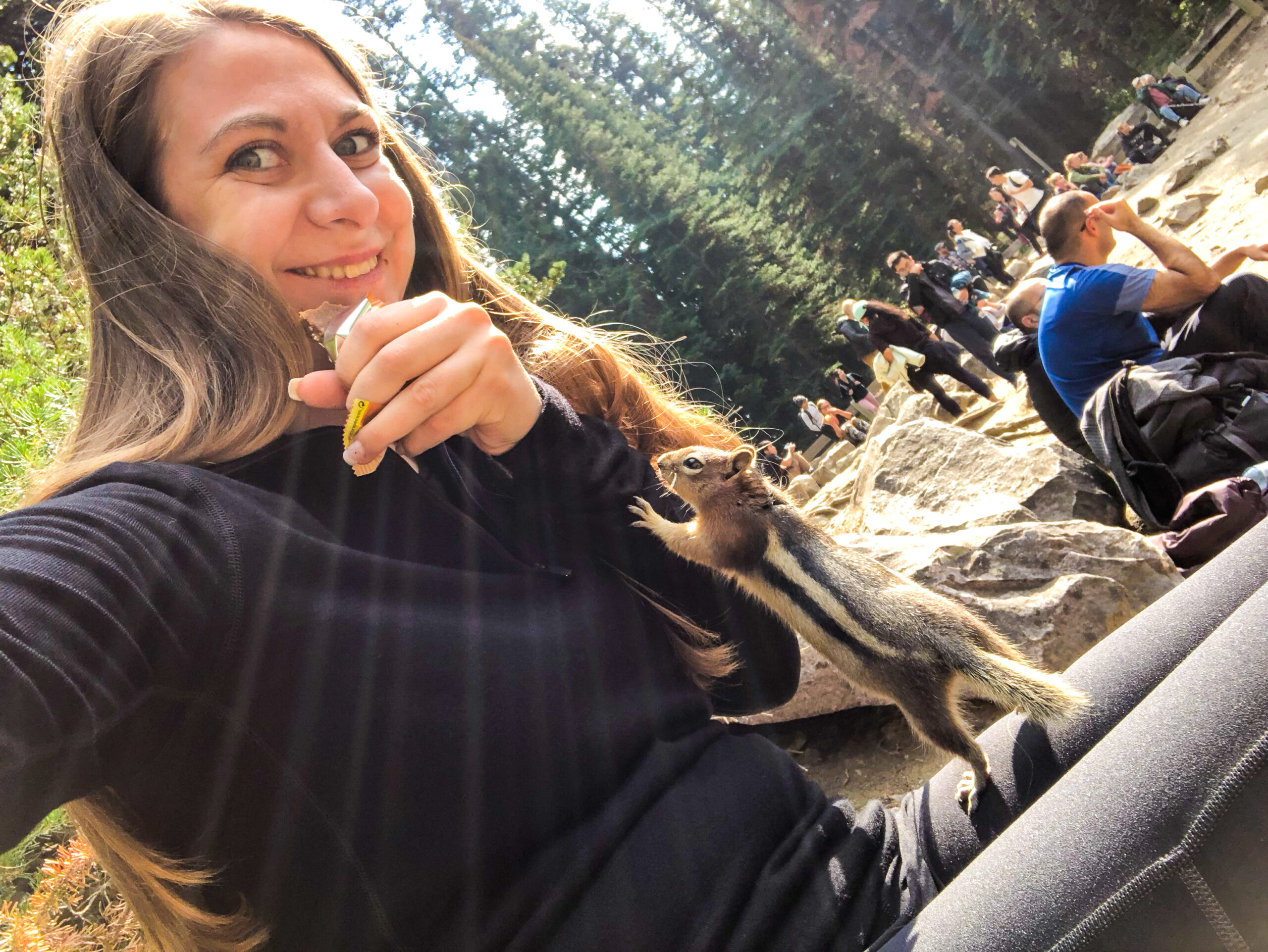
You can complete your trail with either the Little Beehive or with the Big Beehive. Those two hikes will lead you further up and reward you with amazing views over Lake Louise.
Read next: Lake Louise in Banff National Park.
Hotel
Paradise Lodge and Bungalow
Paradise Lodge and Bungalows is the perfect place to stay during your stay in Banff National Park Canada. It is located very close to Lake Louise and Moraine Lake. You can even reach Lake Louise by foot, which is really good as you don’t have to look for a parking space. The cabins and suites are also fully equipped with a kitchen and an electric fire place.
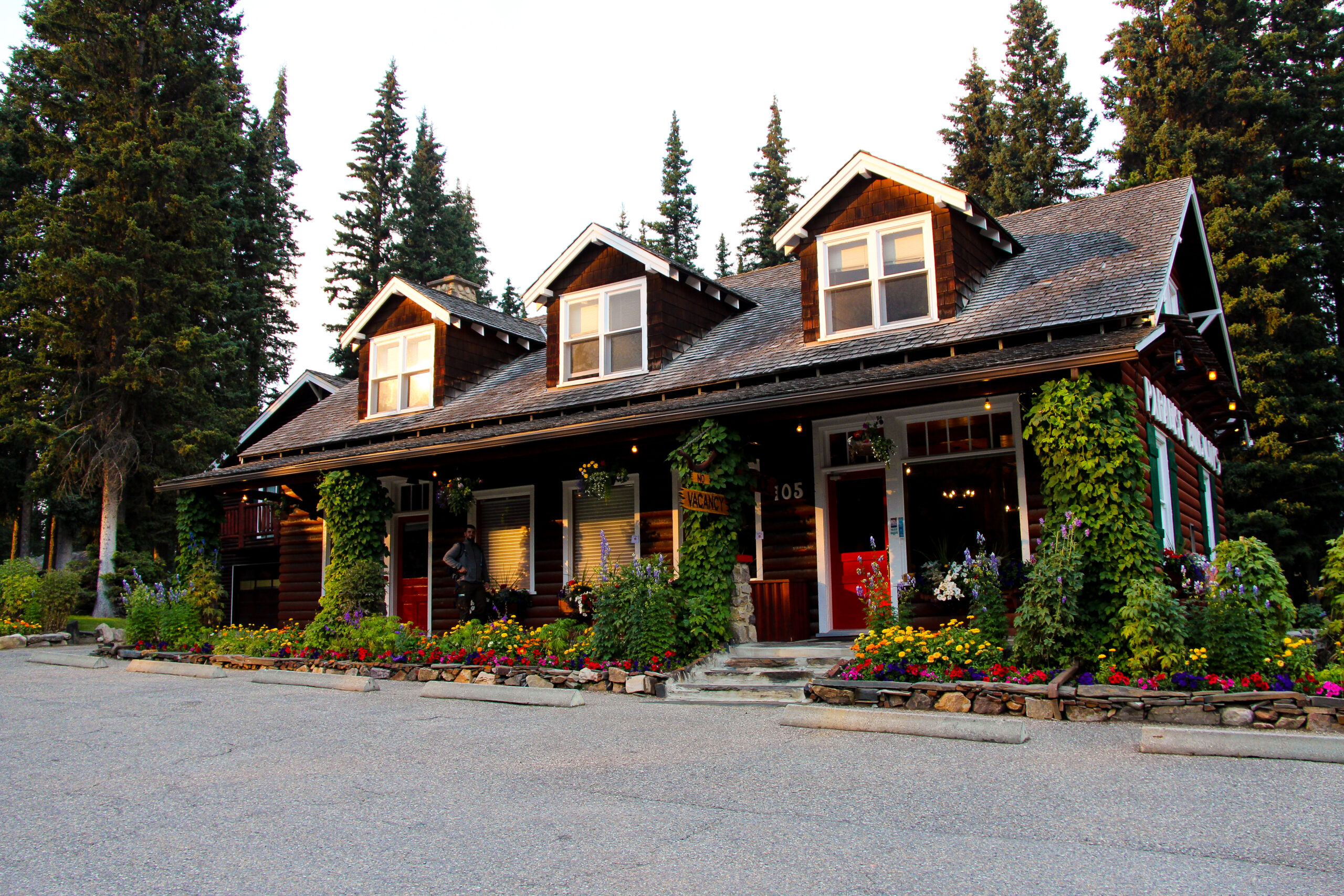
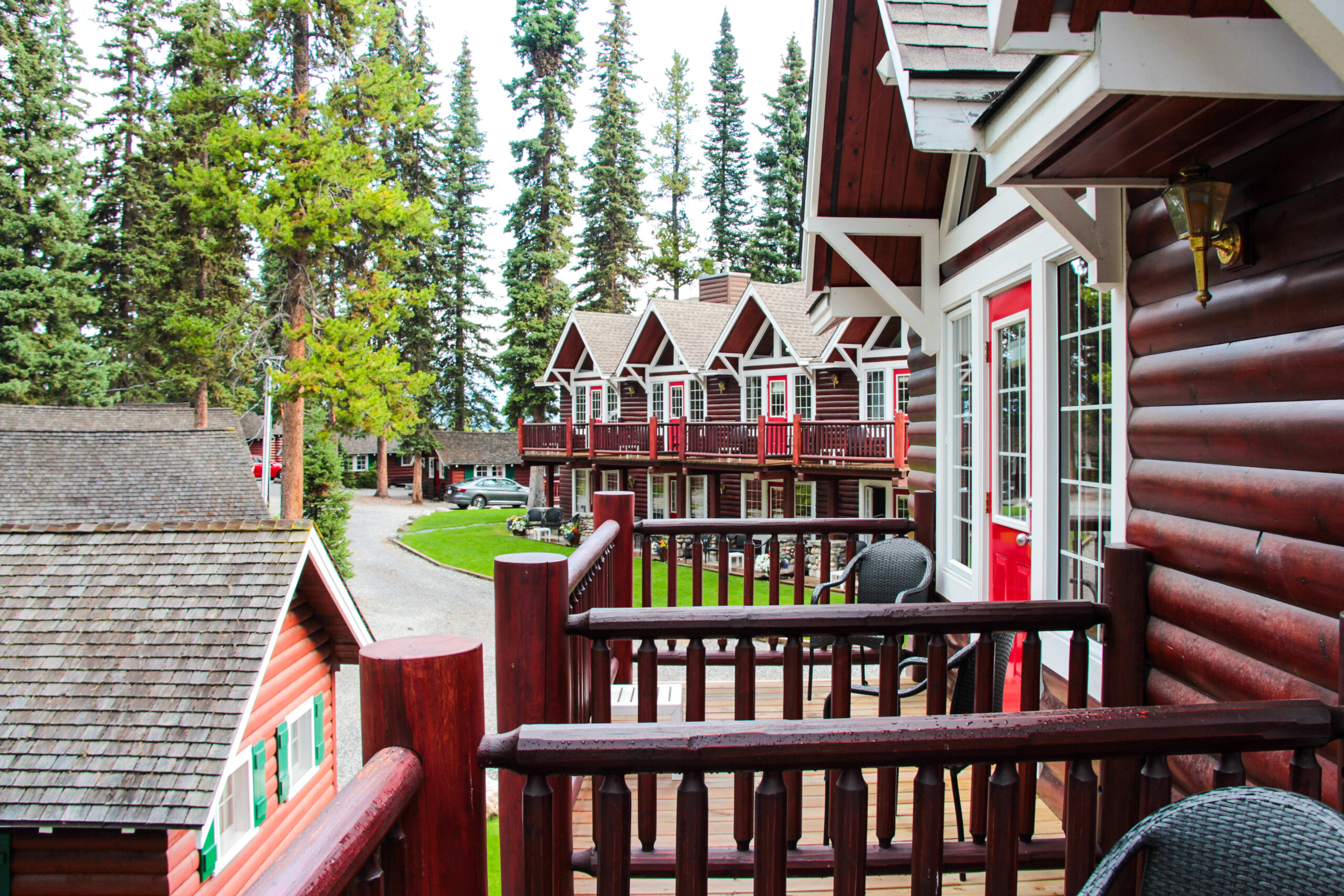
I would always return to this place to stay in.
Camping Lake Louise
It was my first time camping but also probably my last time camping. As I already mentioned in the beginning, temperatures dropped 10 degrees lower as they are normally on that time of the year and as the tent was not that isolated, it was very cold during the night.
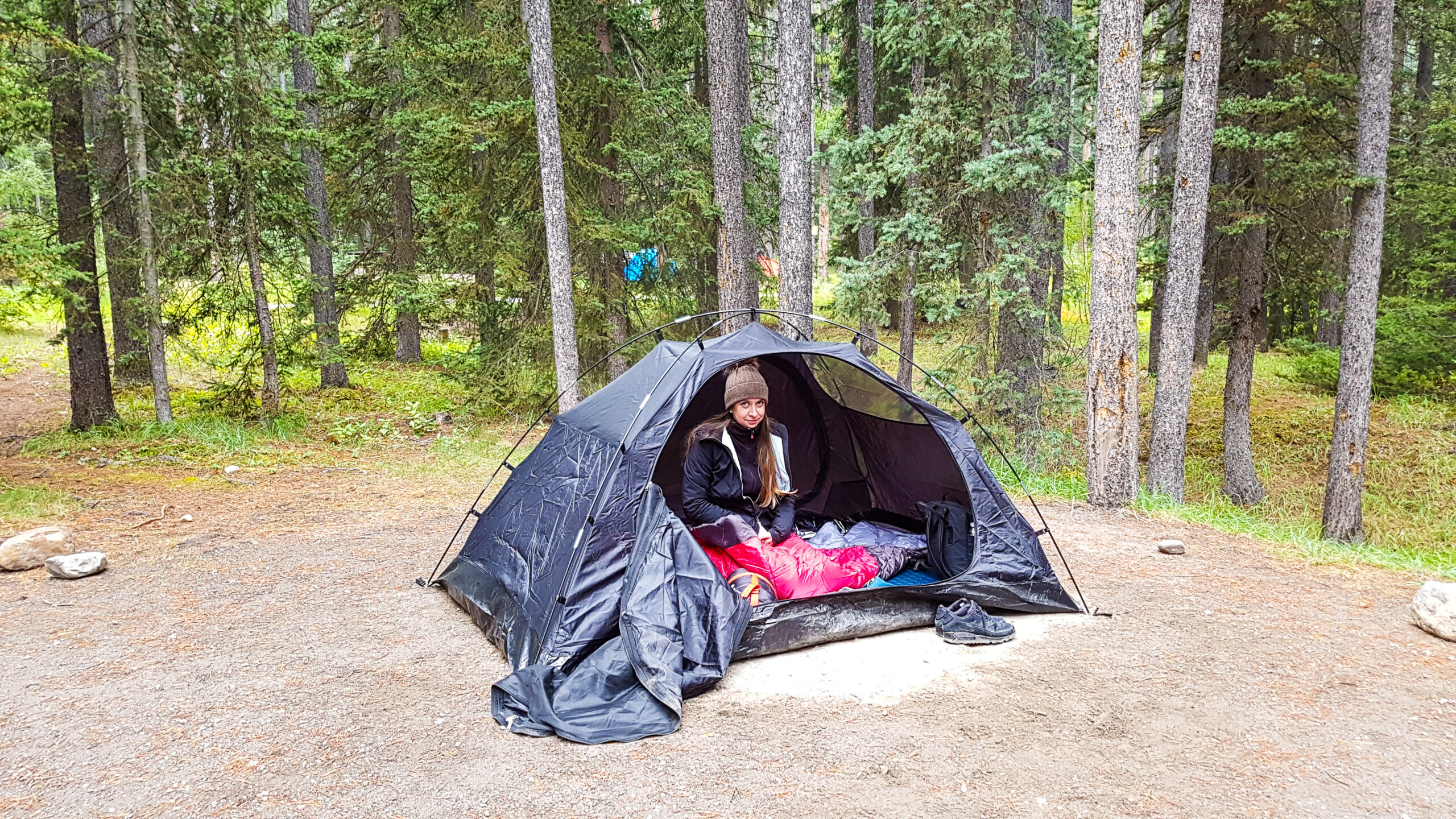
I felt so bad that I cancelled the second night at the camping and booked a room in an hotel instead.
Beside the night, the campground was really nice because it is just a few meters from the Bow River. As soon as you get up, you can take a bath in the river. The whole campground is surrounded by electric fence to avoid bears and other wildlife from entering the campground.
Driving time: Lake Louise to Athabasca Glacier: 1 hour 50 minutes
Icefields Parkway – 1 night
Athabasca Glacier
Located in the Canadian Rocky Mountains, the Columbia Icefield is the largest icefield in the Rocky Mountains of North America. With its 325 m2 in area, it is located partly in Banff National Park, but also partly in Jasper National Park.
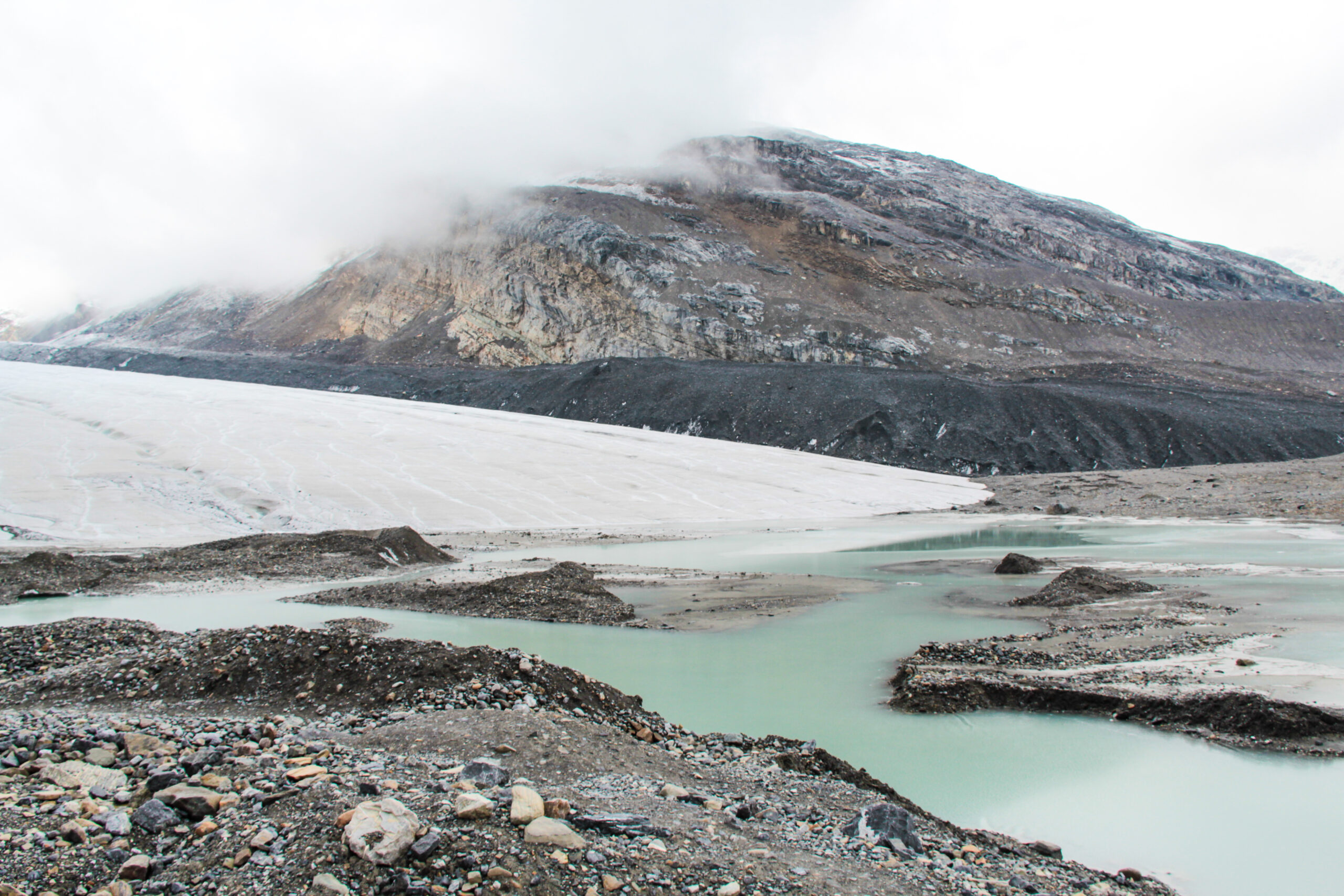
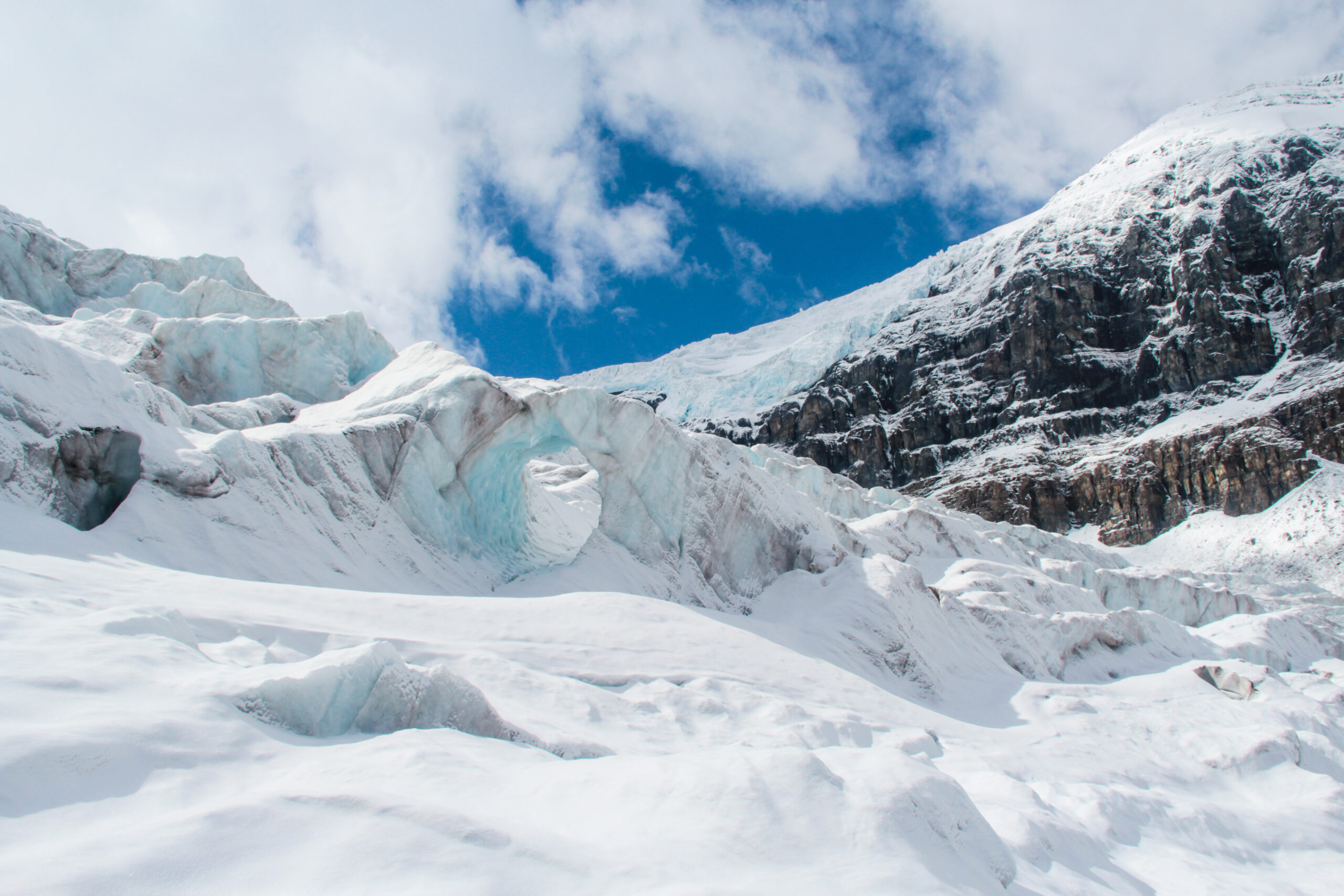
The most known and also most visited glacier is the Athabasca Glacier. Although it is easy accessible, it is absolutely not recommended to hike by yourself on the glacier. There are guided tours to explore the toe of the glacier and also buses, called „Ice Explorer“ who will bring you up there. I chose the „Full Day Deluxe Tours“ Athabasca Glacier IceWalks, which was a really good decision, because you will go further as the normal tours.
Read next: Athabasca Glacier Icewalks in Jasper National Park Canada
Peyto Lake & Bow Summit
Peyto Lake is located near the Icefield Parkway and basically it is also a glacier-fed lake in Banff National Park. The lake, with an elevation of 1.860 meters, is formed in a valley of the Waputik Range between Peyto Peak, Mount Jimmy Simpson and Caldron Peak.
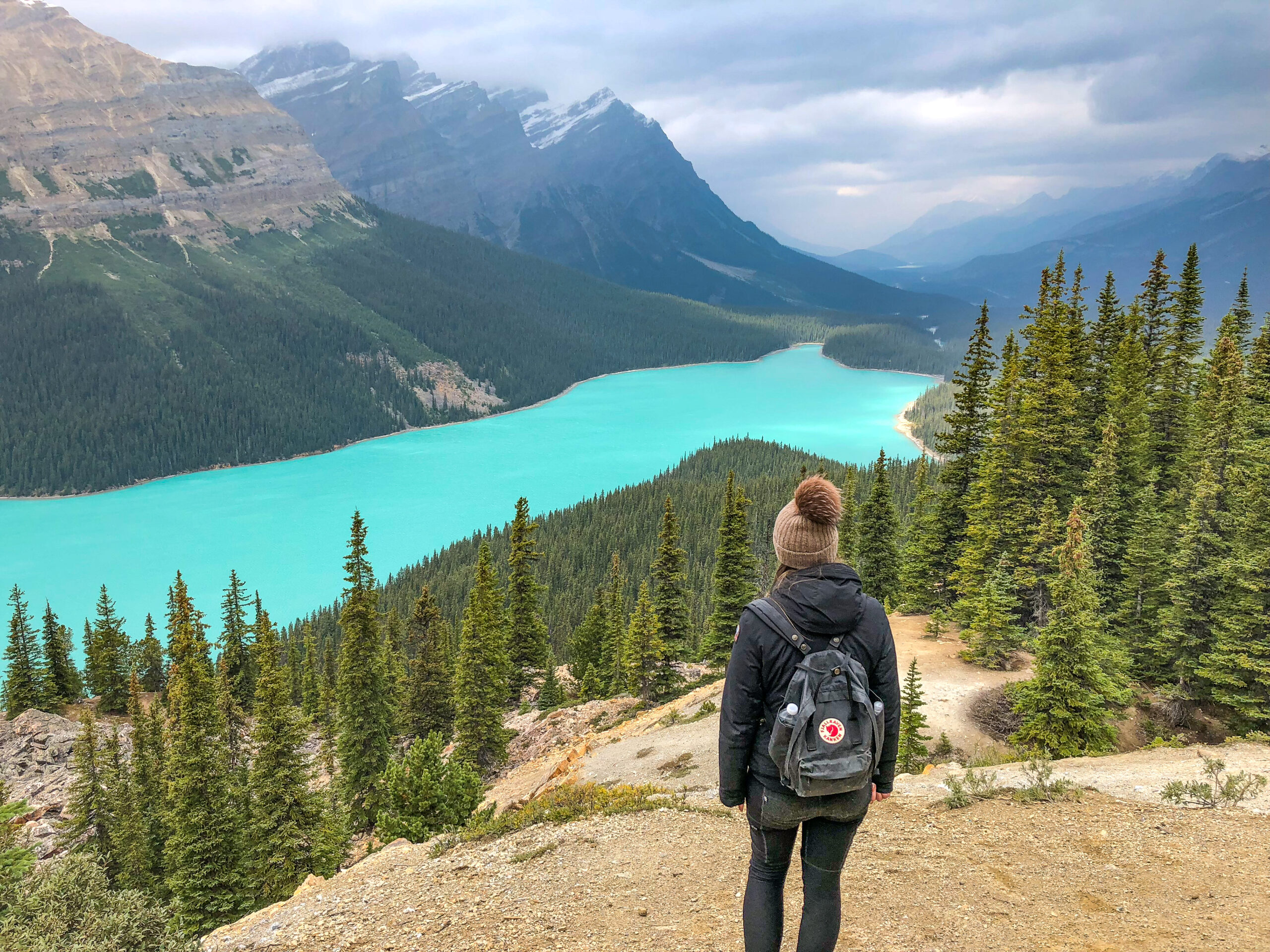
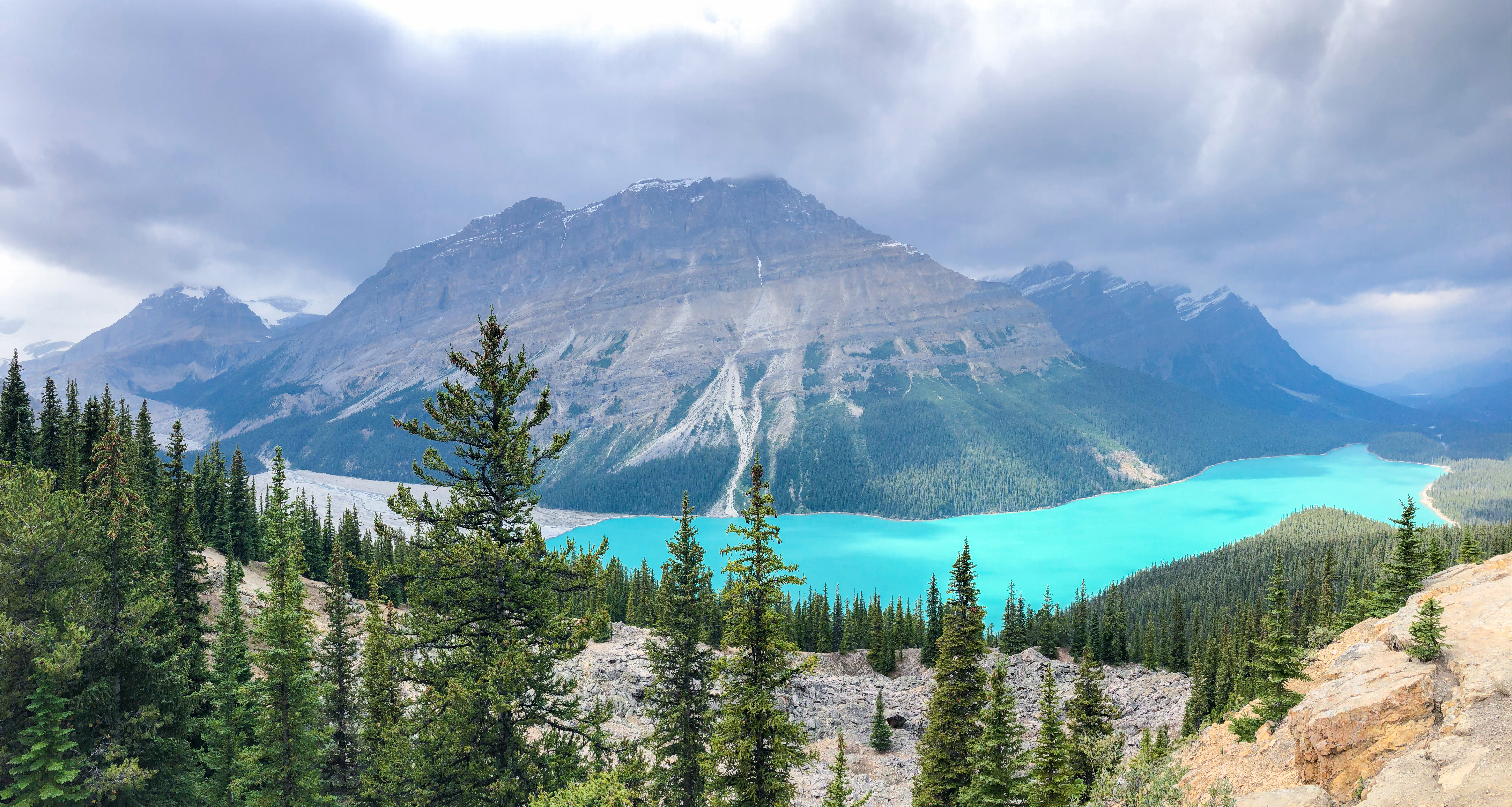
The viewpoint over Peyto Lake is one of the most spectacular ones in Banff National Park and therefore also a popular spot for photographers. With its unique bright and turquoise color, it is, beside Moraine Lake and Lake Louise one of the most beautiful places in Banff National Park.
Hotel
Glacier View Lodge Sunwapta
Whenever you plan to do a tour to Athabasca Glacier, be sure to stay close to it because you have to be there by 9.30. I opt for the Glacier View Lodge Sunwapta, which was a really good decision. It is a small hotel with not that many rooms but it serves the purpose.
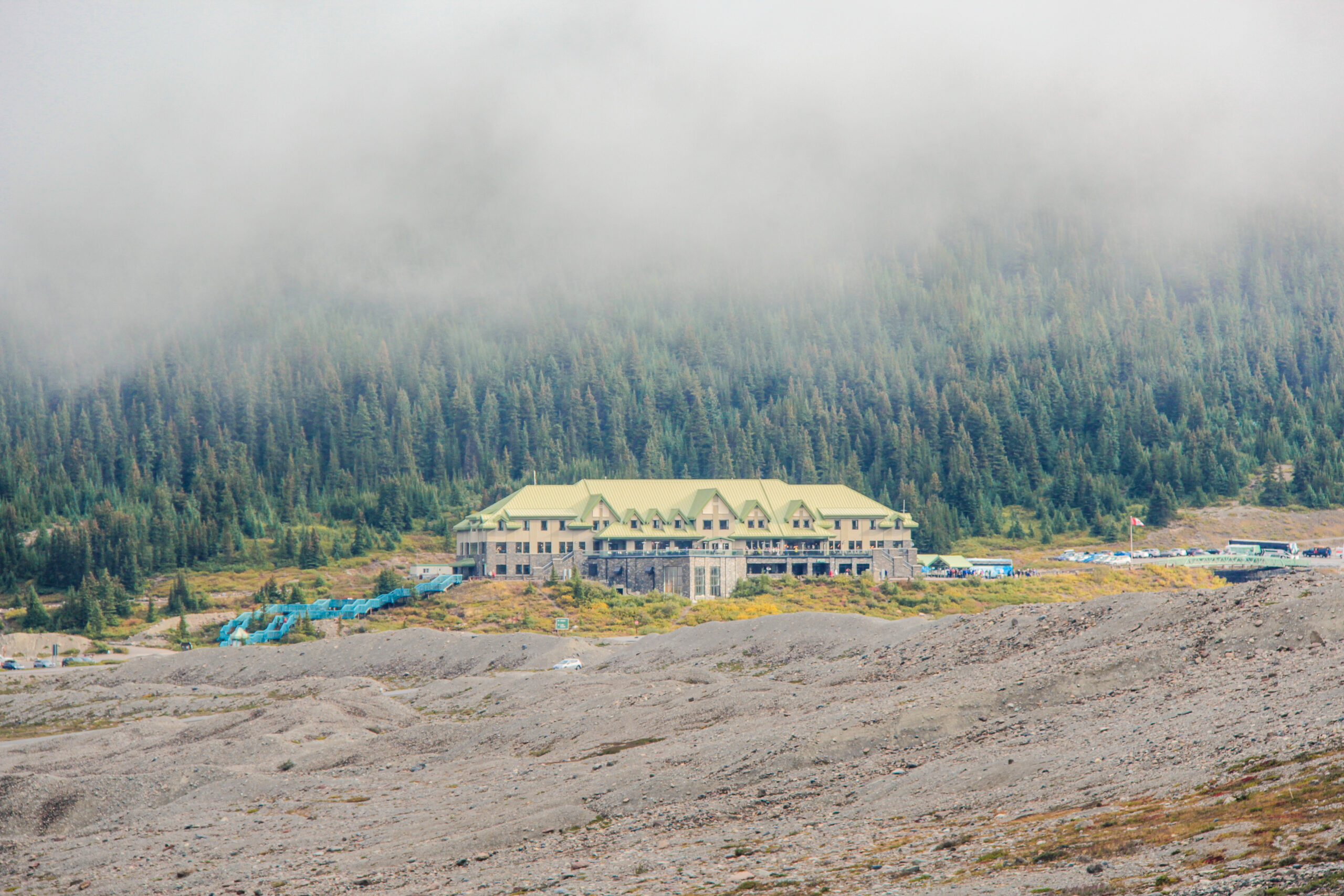
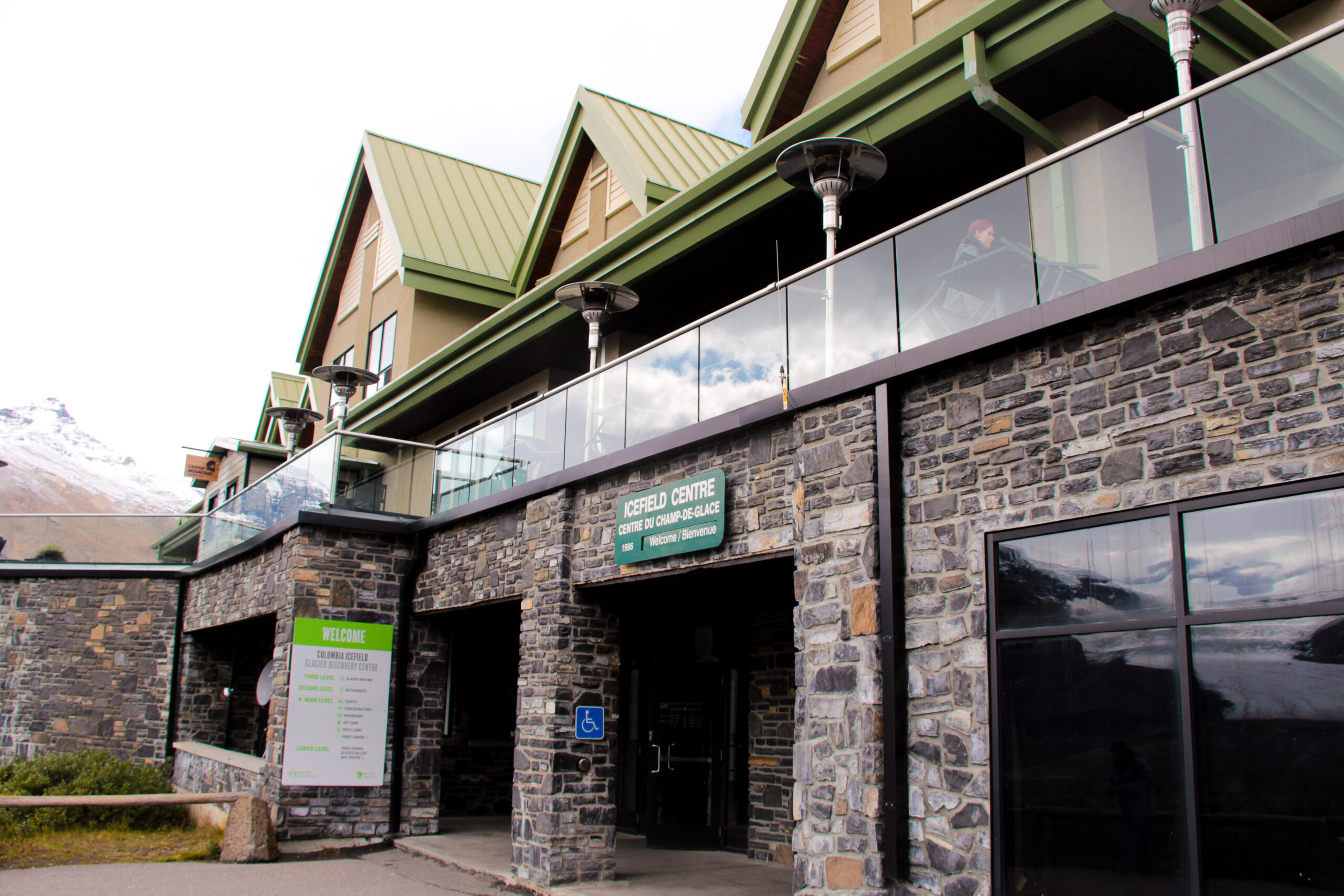
Driving time: Athabasca Glacier to Jasper: 1 hour 15 minutes
Jasper – 3 nights
Mount Edith Cavell
Mount Edith Cavell is an impressive 3,300 meter peak in Jasper National Park. The first name of the mountain was „La Montagne de la Grande Traverse“ because French-Canadian voyageurs used the nearby Athabasca Pass as a trade route for fur. It got its actuel name from a British nurse. She helped Allied prisoners escaping occupied Brussels during World War I.
Unfortunately the route to Mount Edith Cavell was closed during spring and summer 2019. If you have the chance to hike some trails around Mount Edith Cavell, go for it.
Mount Robson
Mount Robson isn’t located in Jasper National Park, even not in Alberta, but in British Columbia. It is the most popular mountain in the North American Rocky Mountains and also the highest point, with 3,954 meters, in the Canadian Rocky Mountains.
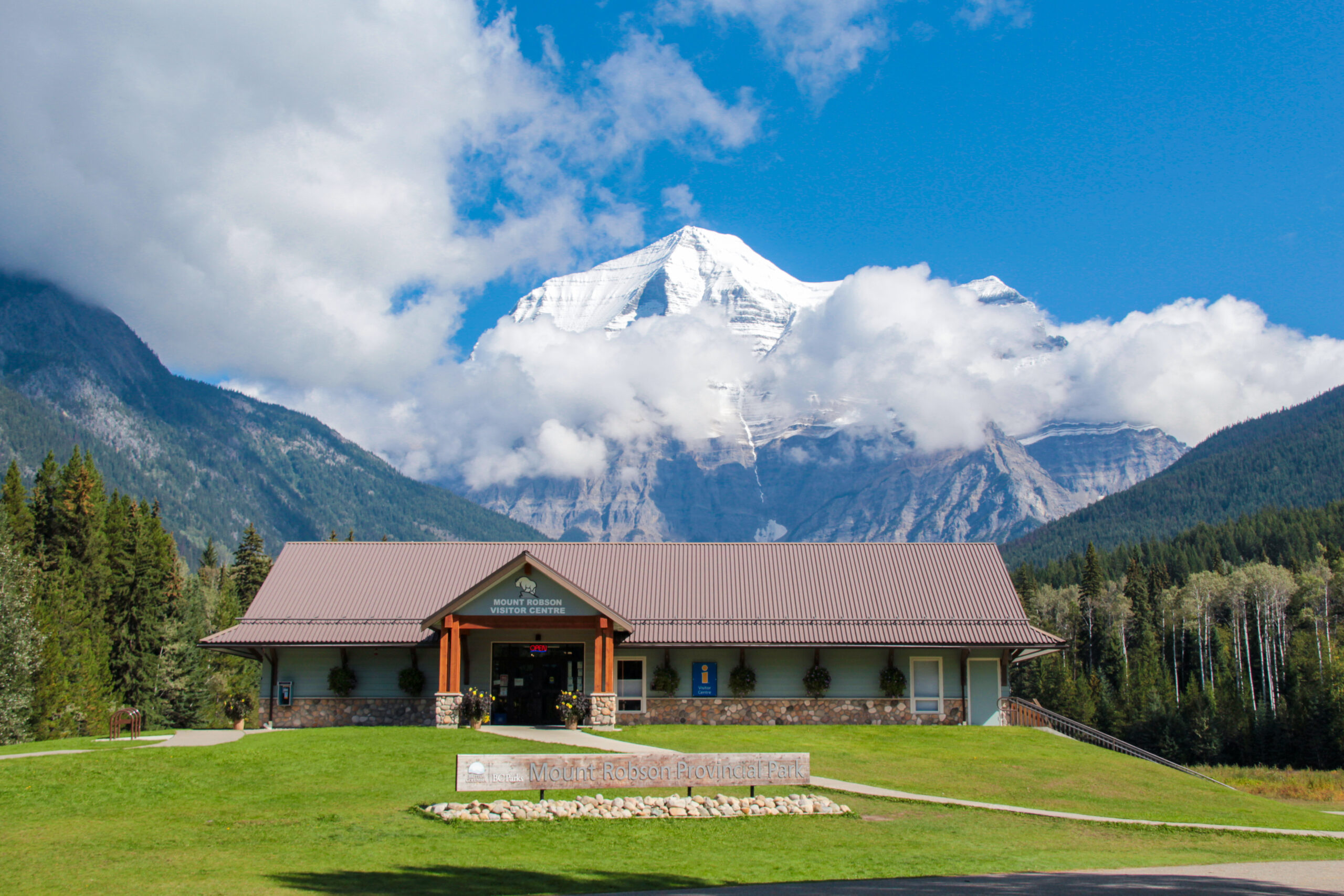
As Mount Robson Provicial Park is located next to Jasper National Park, it is perfect for a day trip to explore Mount Robson.
The most famous trail is certainly the 42 km (return) trail to Lake Berg. There are seven campgrounds along the trail, which allows you to take your time while hiking to Lake Berg. Don’t forget to register at Mount Robson Visitor Center.
When you follow the Lake Berg trail for about 4,5 km (one way), you will reach Kinney Lake, which is also very stunning. Be sure to take some snacks with you to enjoy a break at the Lake.
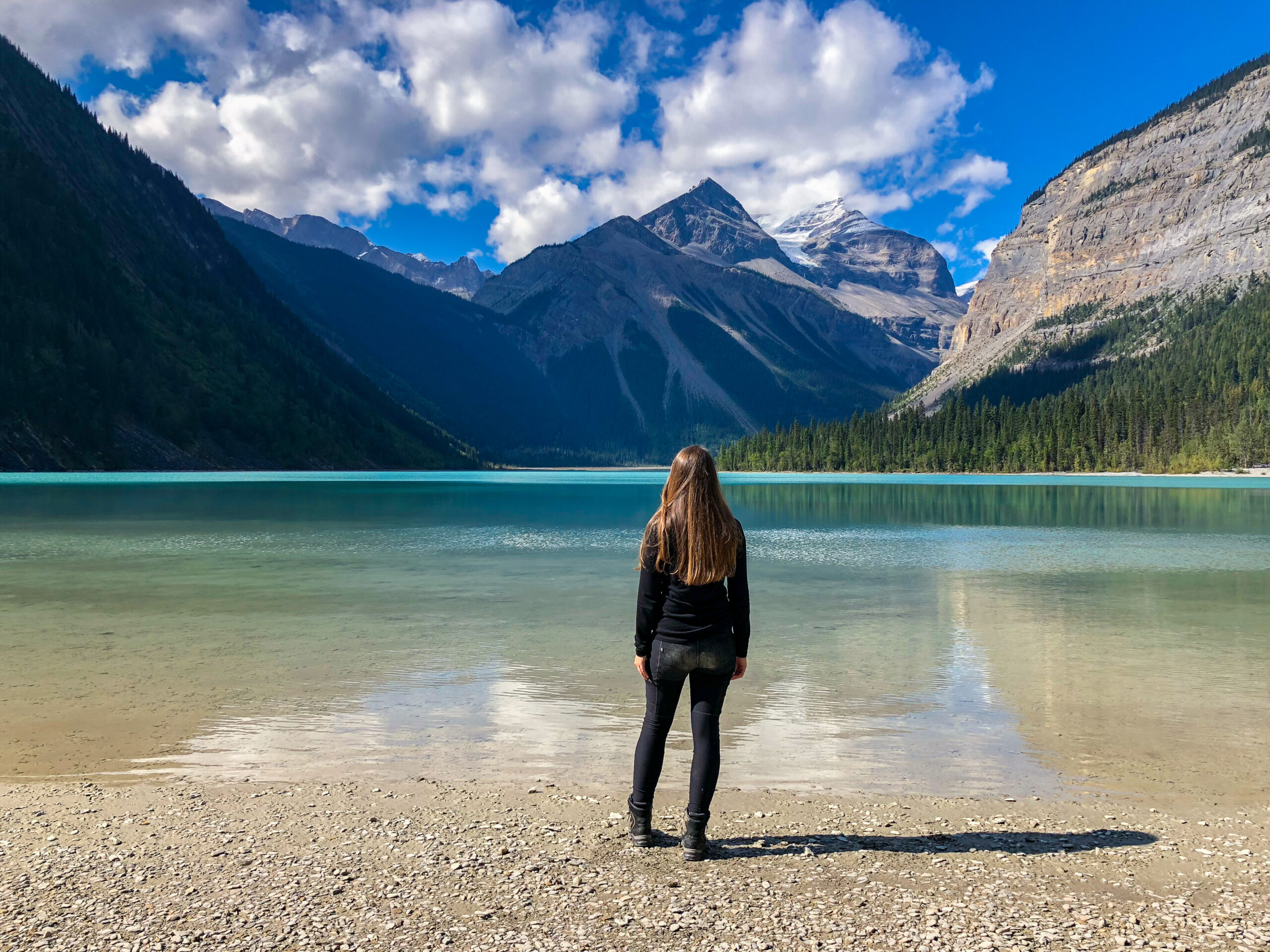
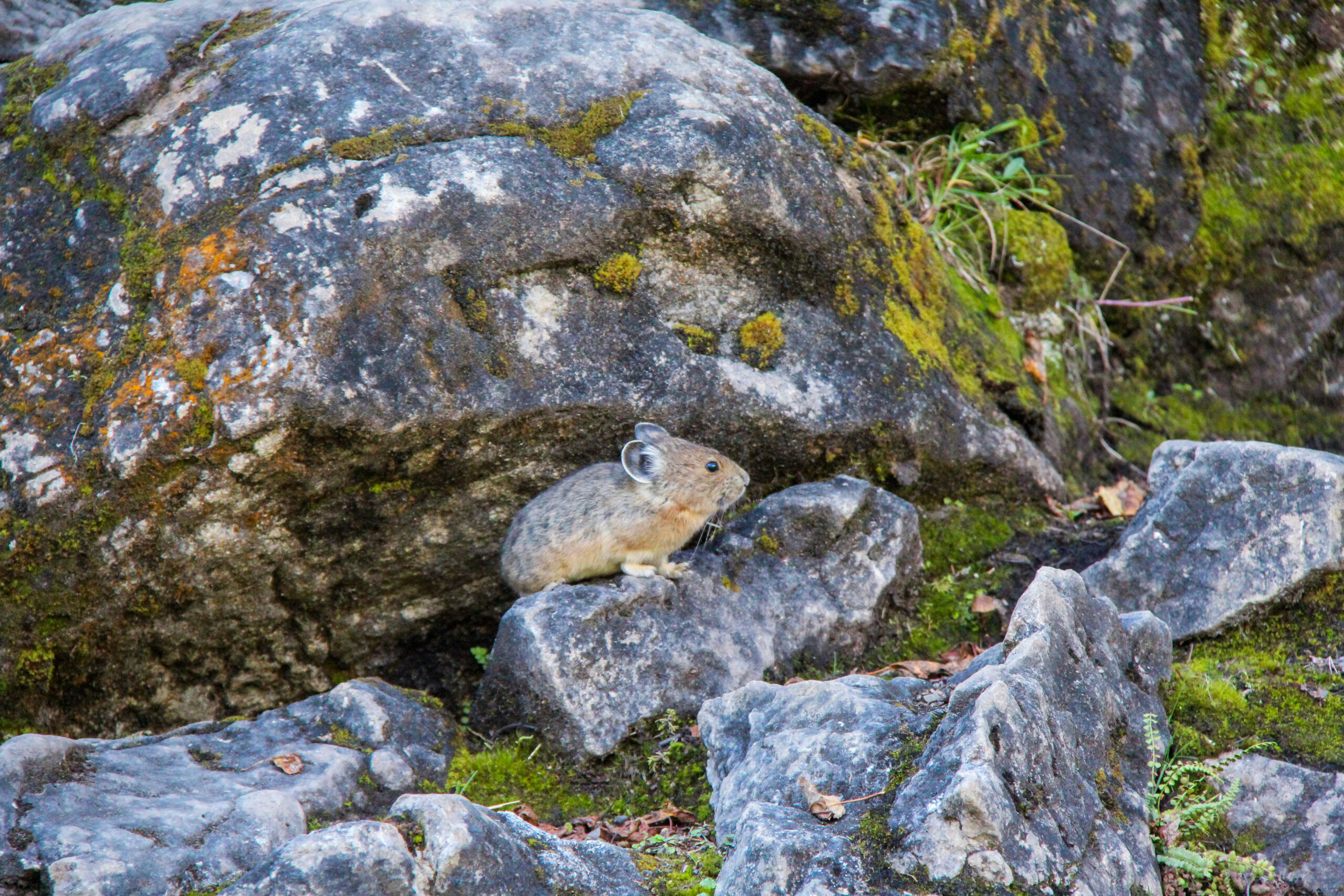
Miette Hot Springs
Another of the three hot springs in the area of Banff and Jasper National Park beside Banff Upper Hot Springs and Radium Hot Springs are Miette Hot Springs. Just like the Banff Upper Hot Springs, Miette Hot Springs were already discovered by First Nations people who introduced in the 1800’s members of the Hudson’s Bay and North West Companies to three hot springs located on Sulphur Creek, a tributary of Fiddle River. In 1910 and 1930, bathhouses were built followed by the construction of a proper road leading to the bathhouse. Facilities as known today dated from 1986.
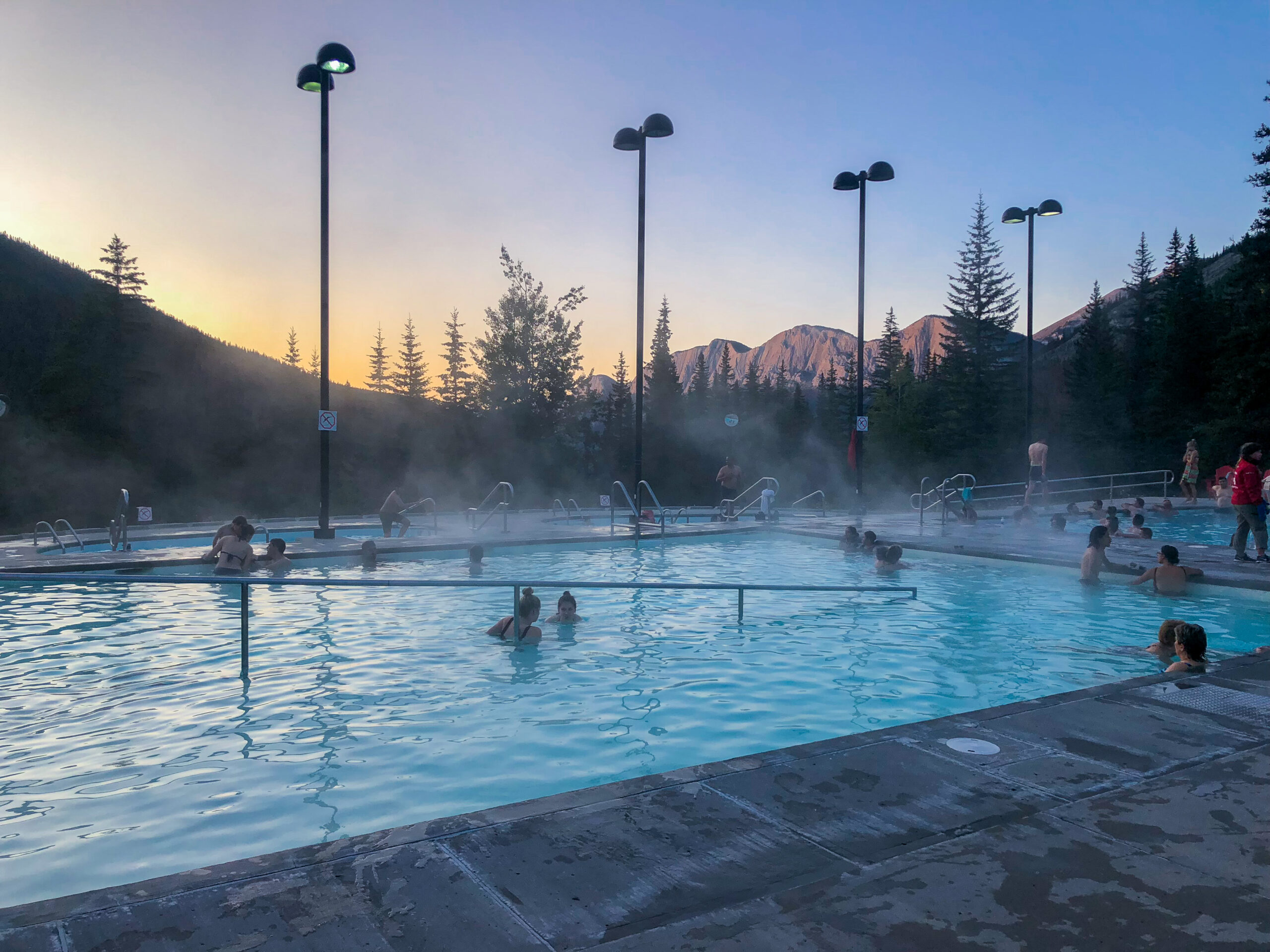
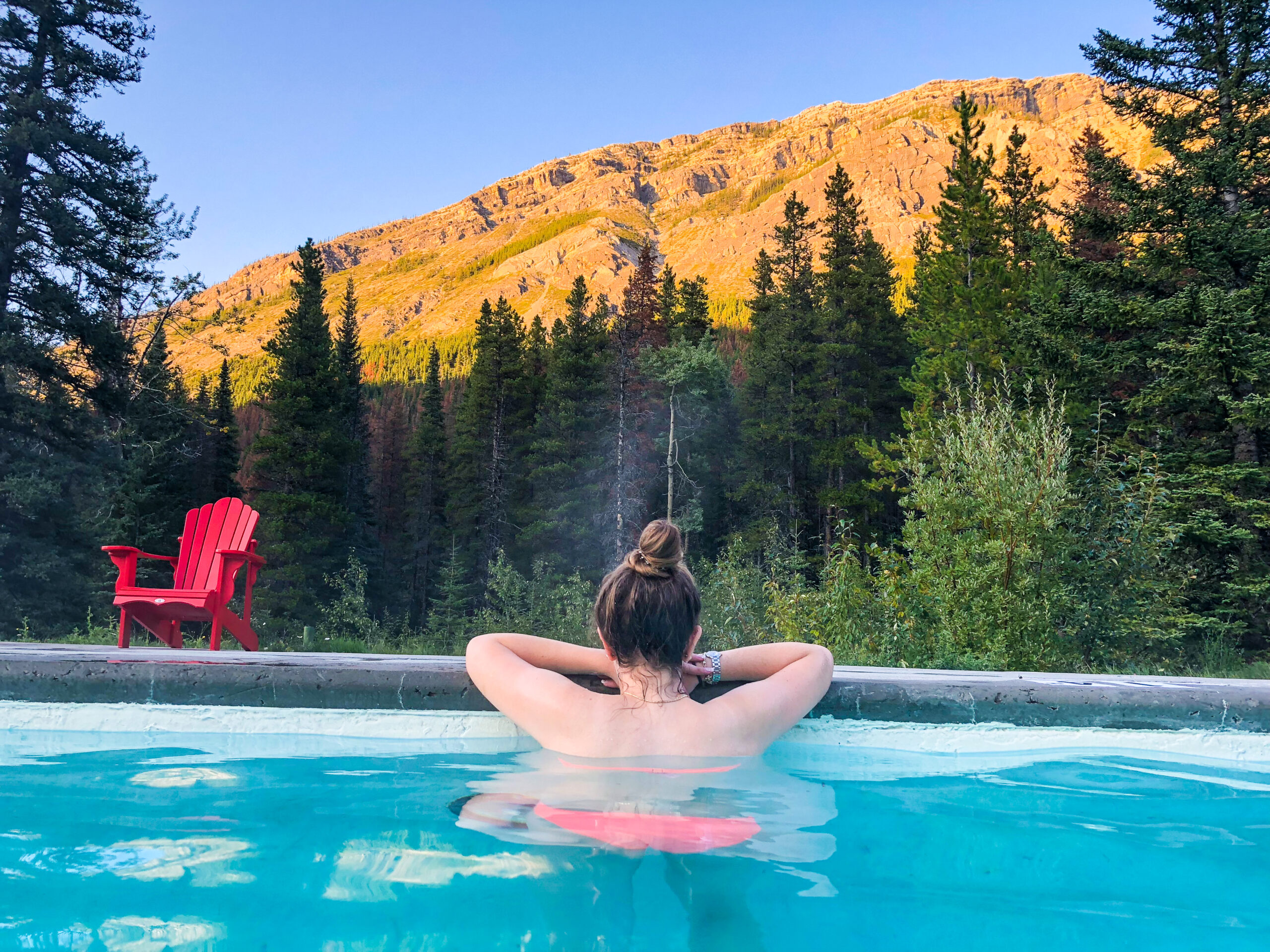
When it comes to Hot Springs, I prefer the Miette Hot Springs because the location is not as crowded as Banff Upper Hot Springs. It is a perfect way of ending a hiking day.
Pyramid Lake
Pyramid Lake is a kidney-shaped lake in Jasper National Park. It is a great place to go canoeing and swimming in summer and even ice skating in winter. The lake lies at the food of Pyramid Mountain. When the lake is calm, you’ll see extraordinary reflections of the mountains in the lake. This makes it a unique and scenery place to visit in Jasper National Park.
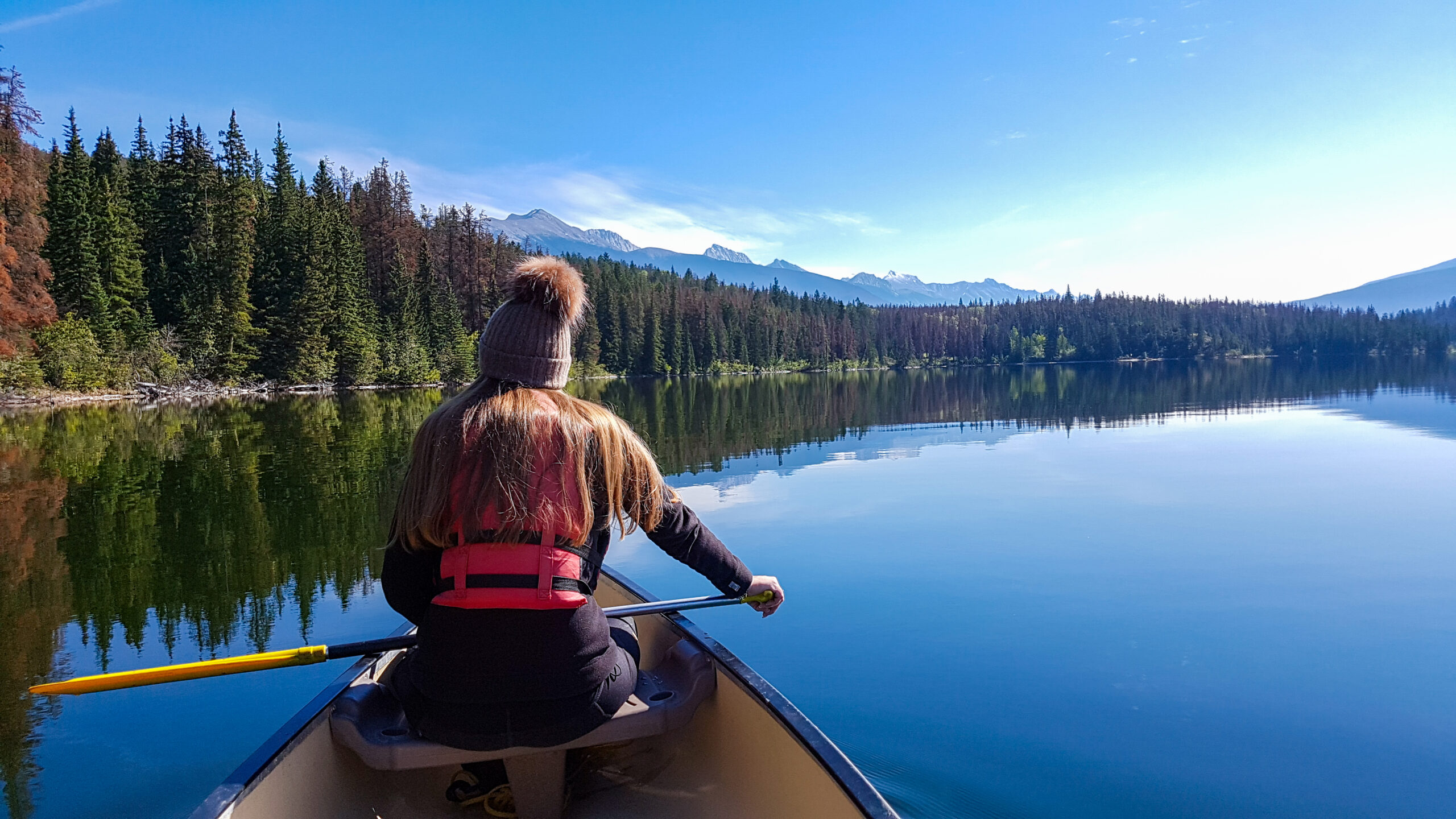
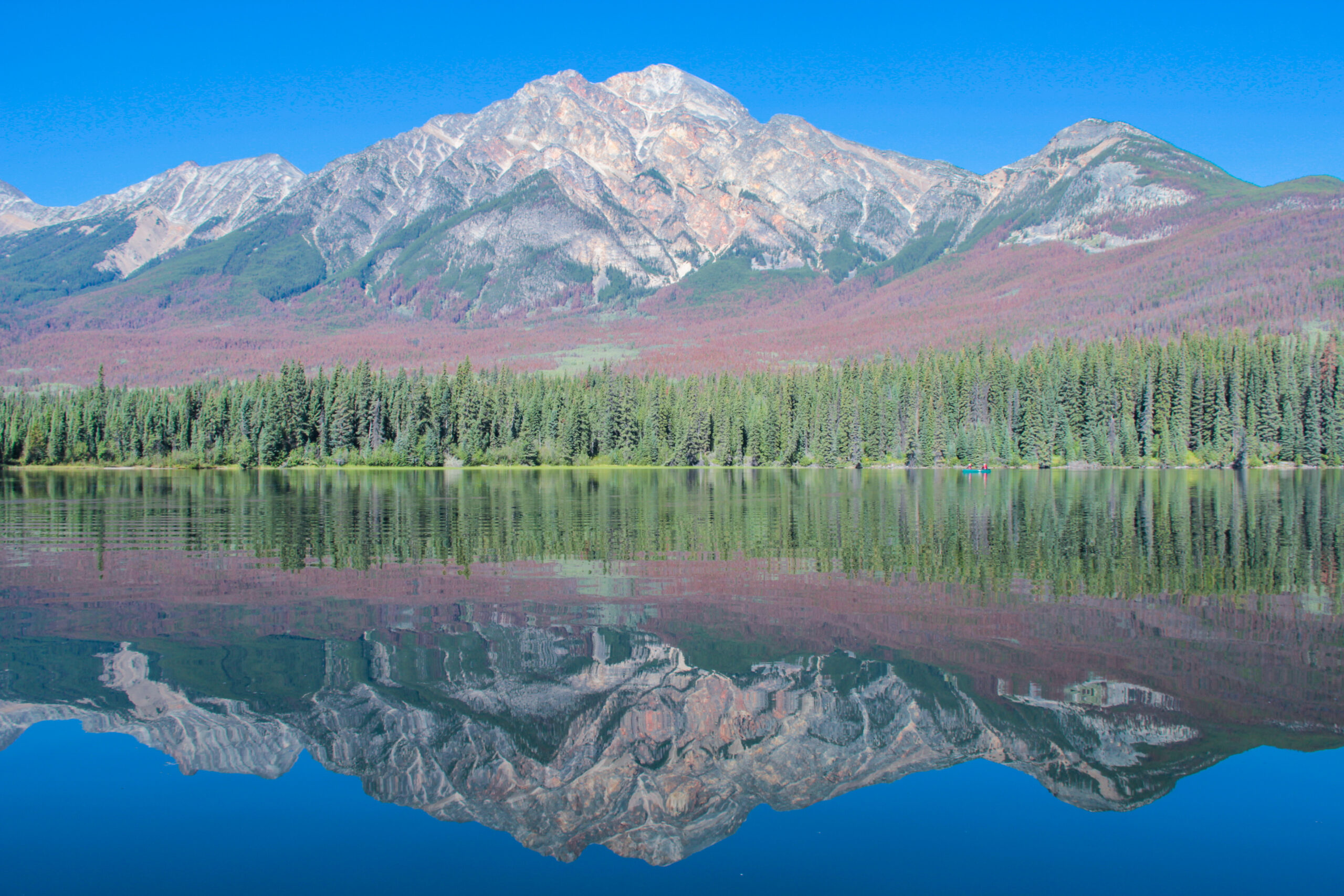
There is even a little island in the Pyramid Lake, called Pyramid Island. You can either reach it by canoe or simply by foot over the wooden bridge. The little island offers some picnic spaces, which makes it a perfect summer destination.
The best hotel to stay near Pyramid Lake is definitely Pyramid Lake Resort.
Maligne Lake
About a 40 minutes drive from Jasper, is located Maligne Lake. It is mostly famous for the azure colour of the water, the peaks and three glaciers visible from the lake. Certainly one of the most photographed views around Maligne Lake is Spirit Island. This is a tiny island located in Maligne Lake. In summer you can make the Maligne Lake Cruise, which will bring you to Spirit Island.
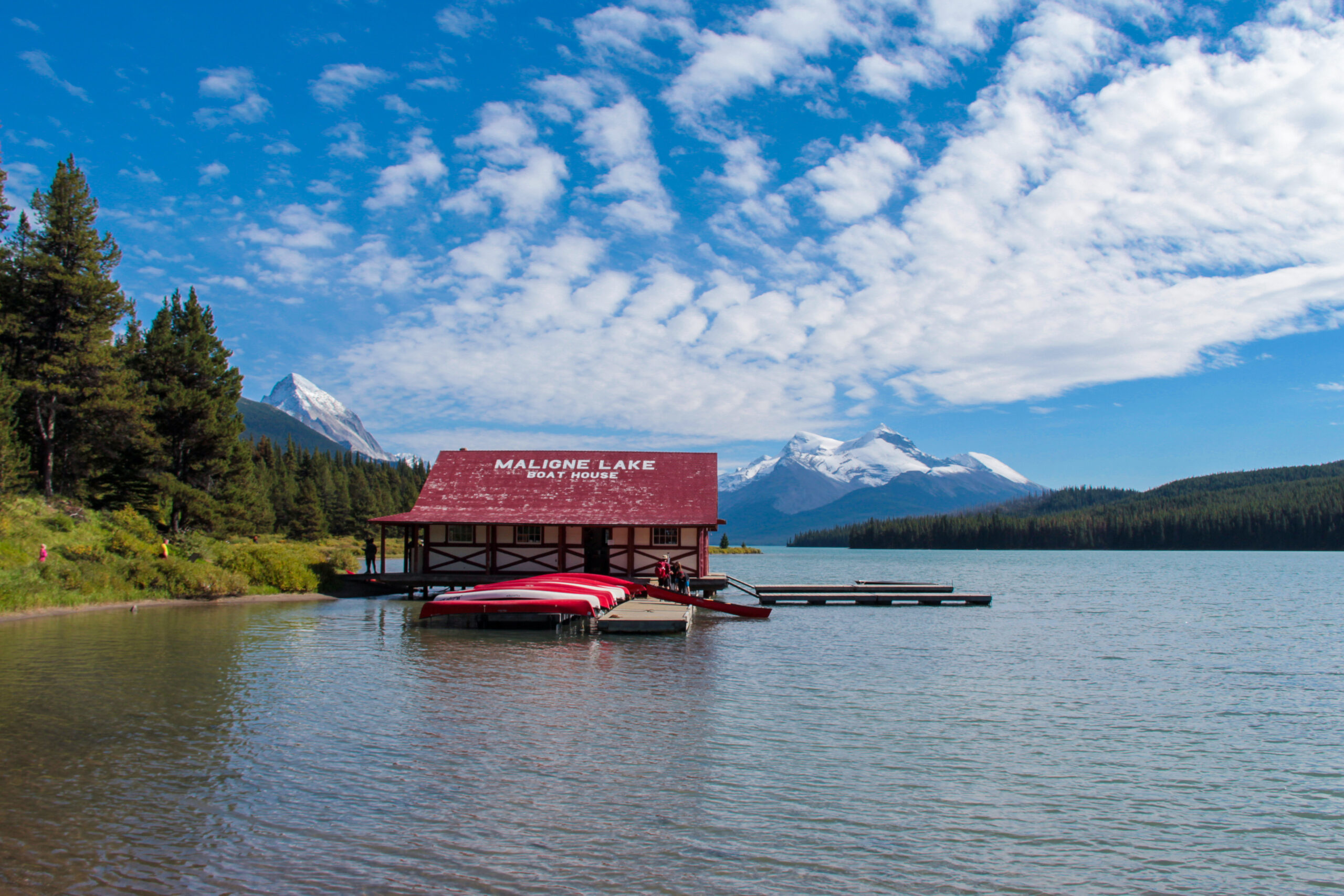
Maligne Canyon
The deepest canyon in Jasper National Park is Maligne Canyon with 50 meters deep at certain points.
In winter you can even join a guided Icewalk and walk along the canyon’s frozen floor. This is certainly more spectacular than hiking accross the six bridges in Maligne Canyon.
Unfortunately we didn’t visit Maligne Canyon, but will certainly return to do so.
Medecine Lake
On the road to Maligne Lake is located Medecine Lake. Medecine Lake is approximately 7 km long and a relatively shallow lake. It is located almost 20 km from the town of Jasper, which makes it relatively easy to visit.
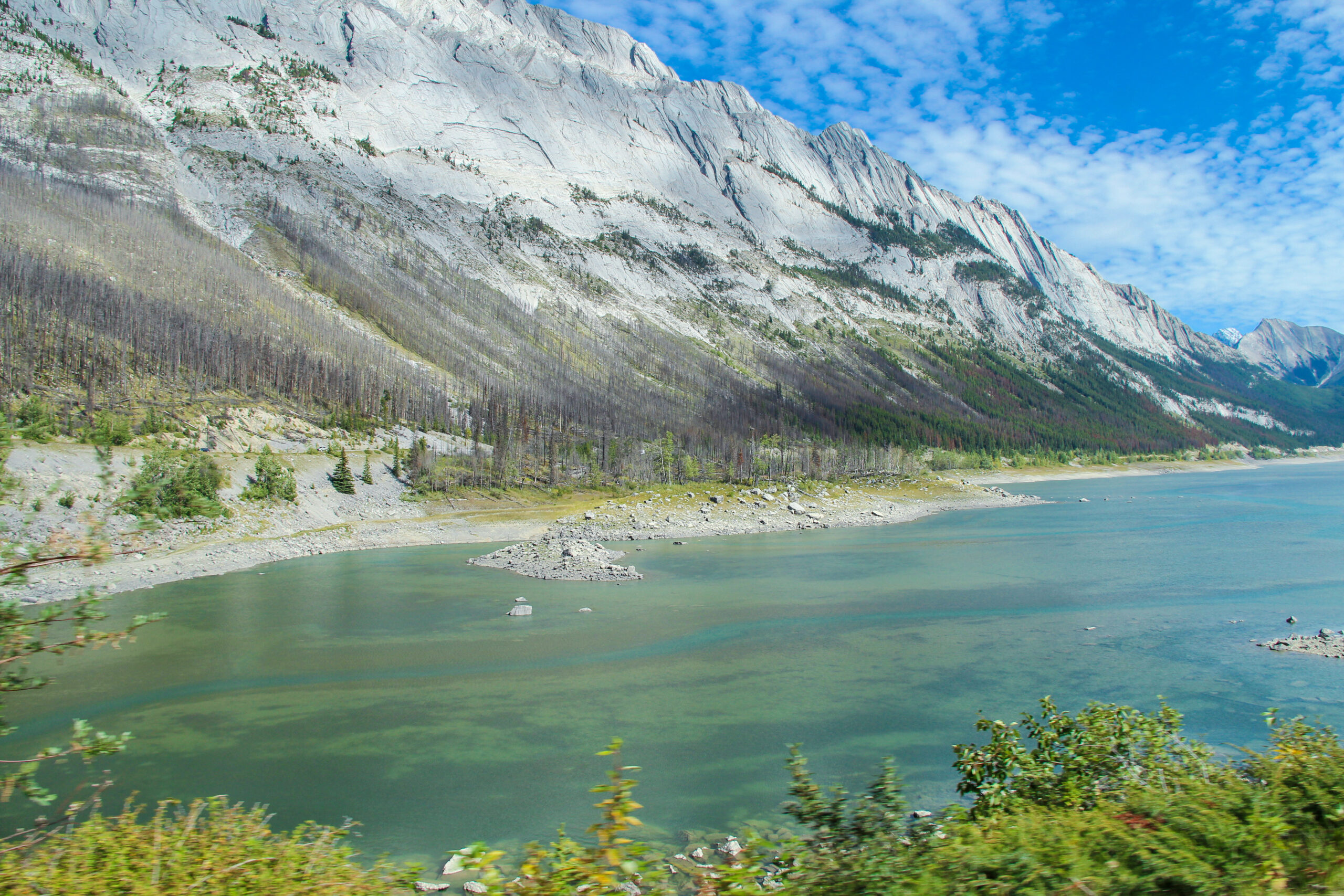
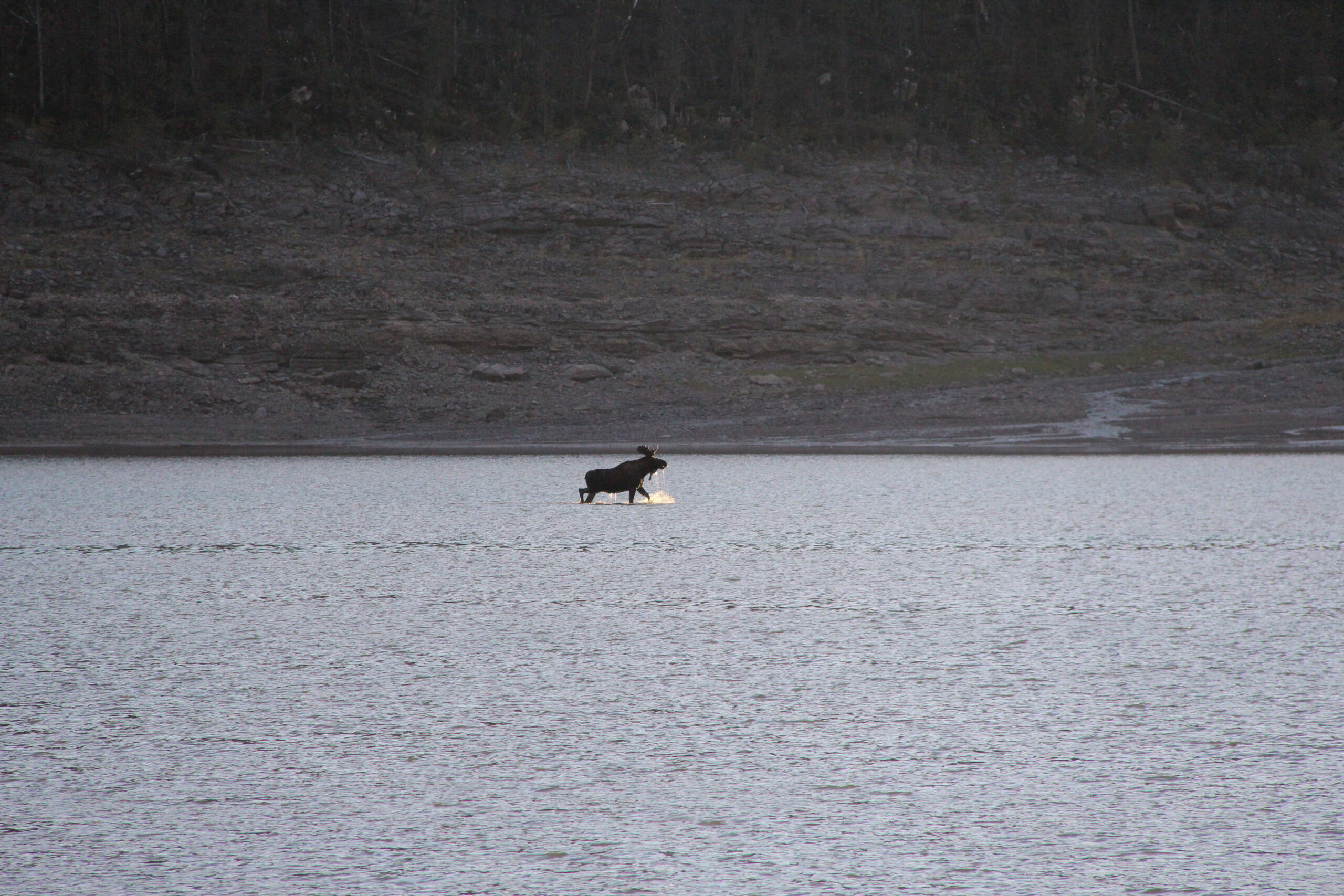
Geologically it is not a real lake but rather an area where the Maligne River backs up and which suddenly disappears as a losing stream in the underground.
Athabasca Falls
Athabasca Falls is a waterfall in Jasper National Park and approximately 30 km away from the town of Jasper. It can be visited easily because it is a stop on the Icefield Parkways.
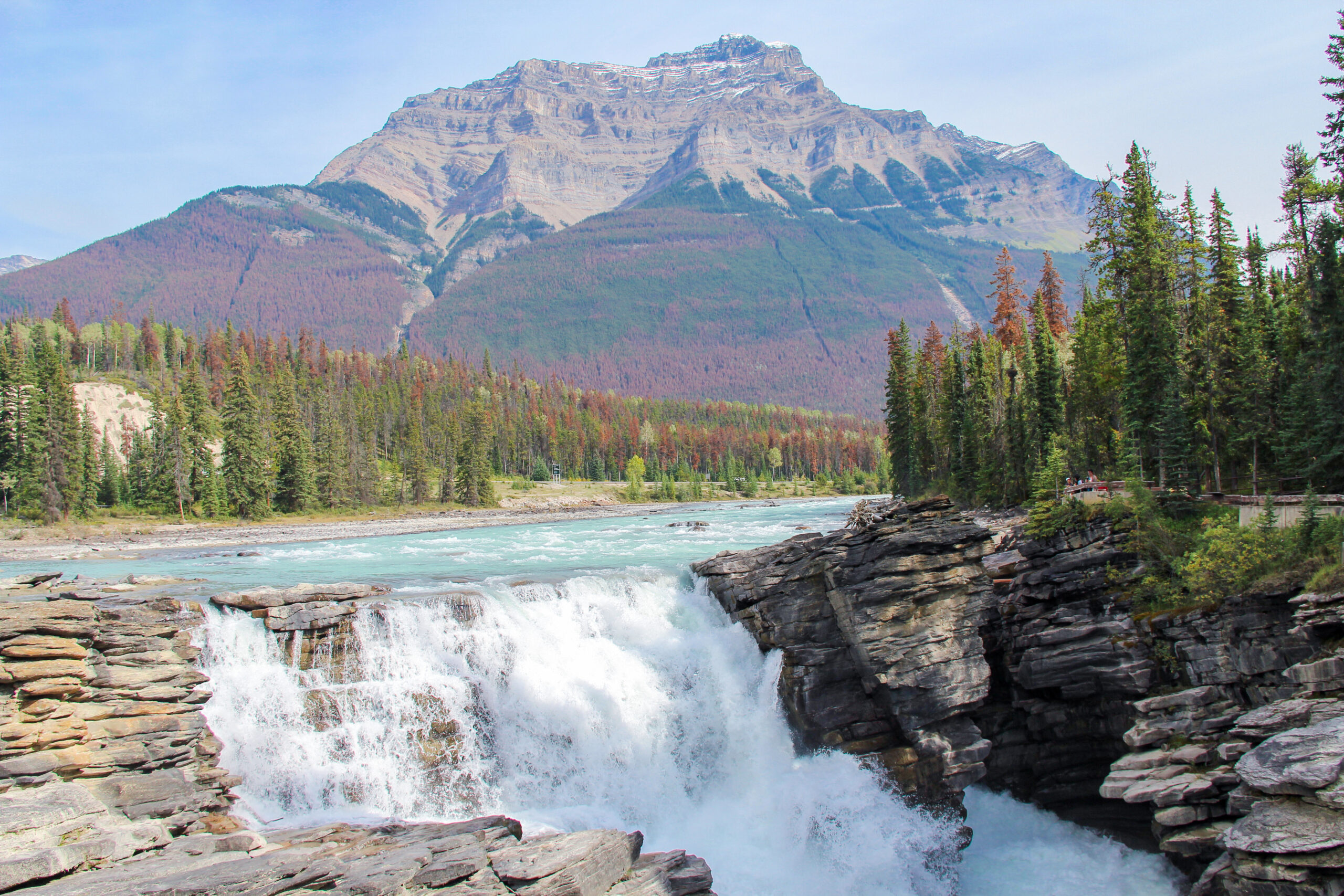
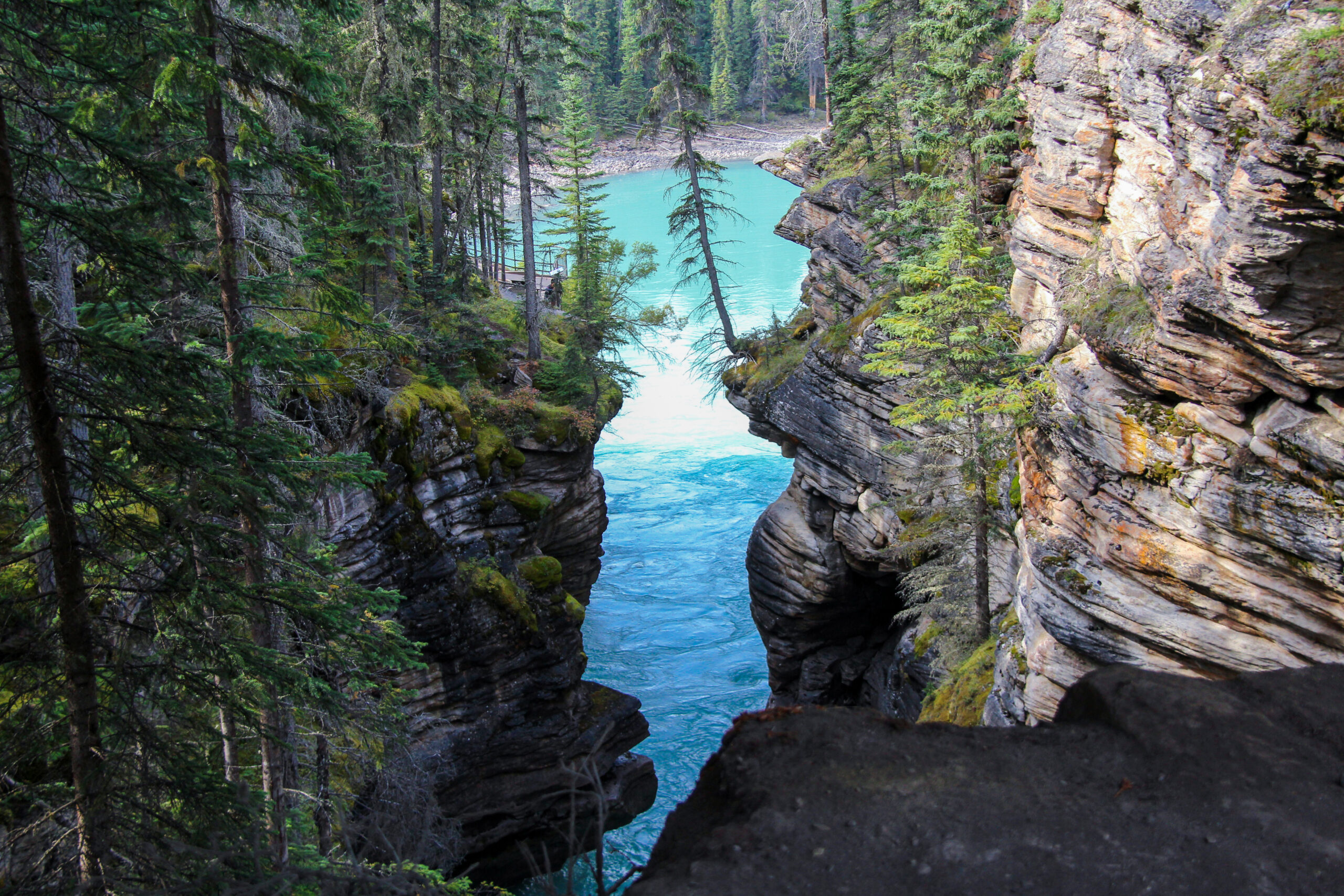
There are several viewing platforms and also walking trails around the Athabasca Falls. There is a nearby parking lot, which makes it easy it reach.
Hotel
Pyramid Lake Resort
Pyramid Lake Resort is a perfekt starting point for your adventures in Jasper National Park. It is a completely renovated chalet style alpine resort with an amazing view over the mountains.
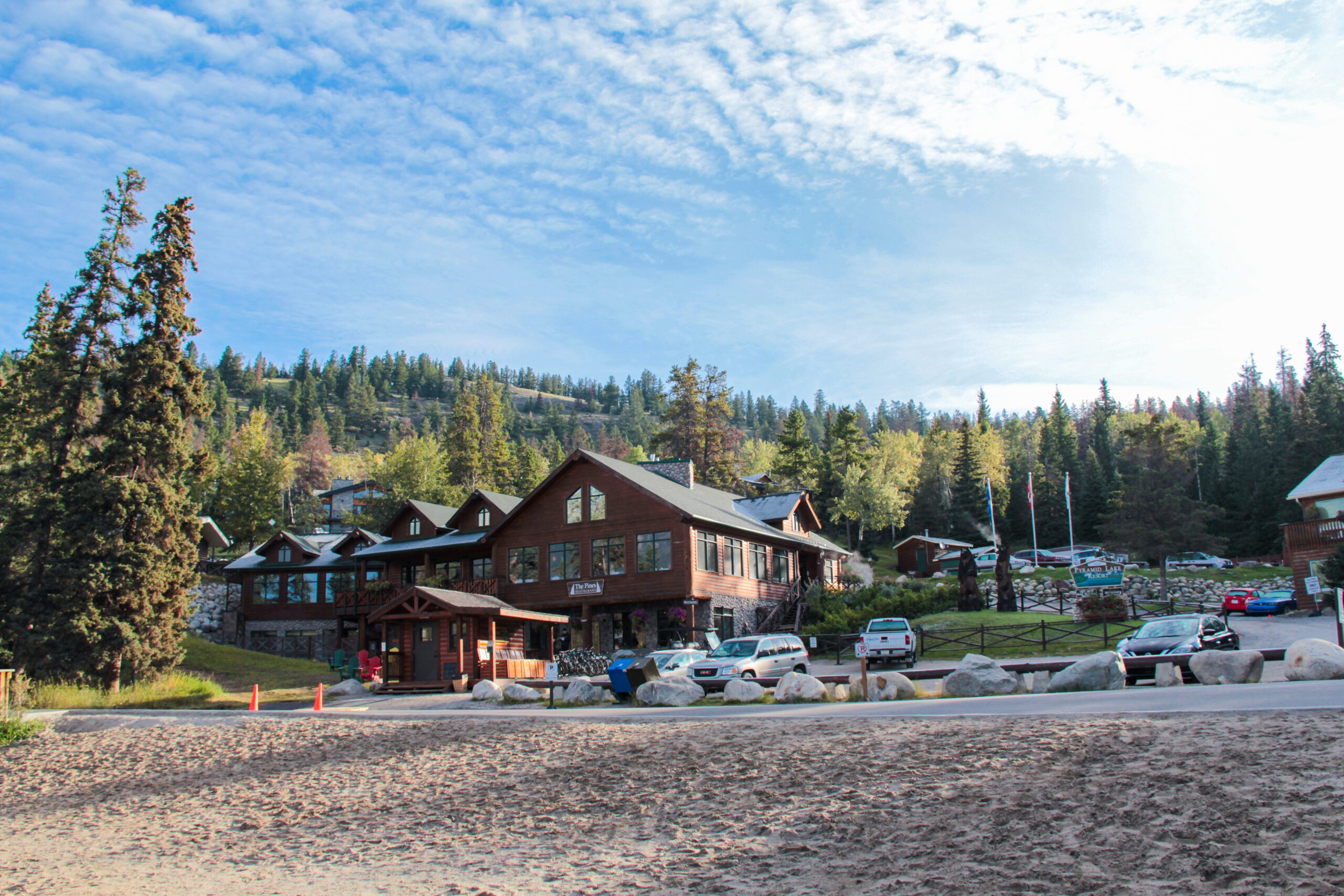
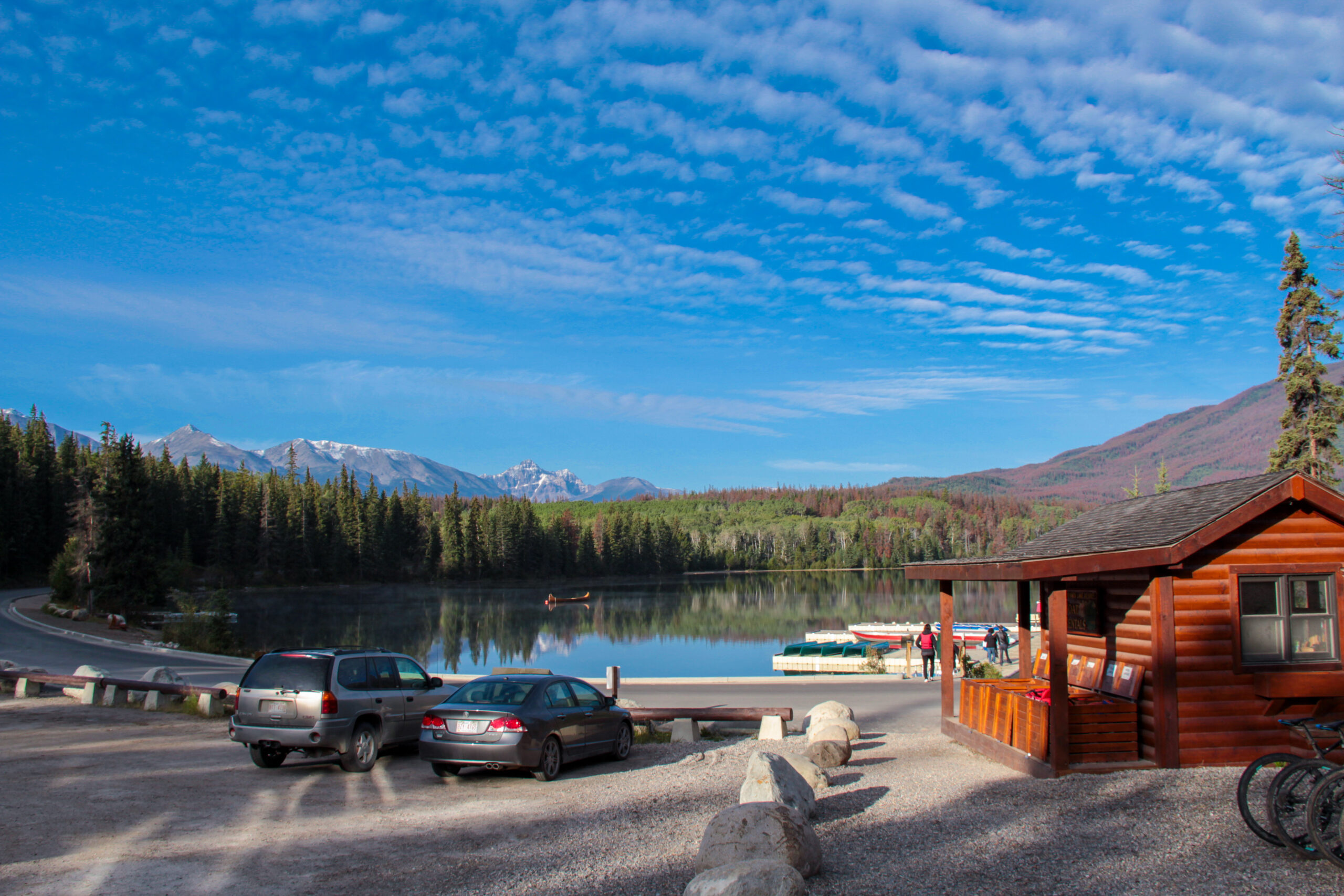
As the lake is directly in front of the Hotel, you’ll be able to run outside the hotel directly into the lake. Afterwards you can reheat yourself in their hot tub.
I can only recommend this hotel. They have a good restaurant and are completely surrounded by nature.
Fairmont Jasper Park Lodge
This is the hotel that I booked despairingly during the night in the tent in Lake Louise because I didn’t want to spend another night camping. Initially, I planned to stay on Camground Wapiti but I preferred to cancel it. However, if you like camping, go on.
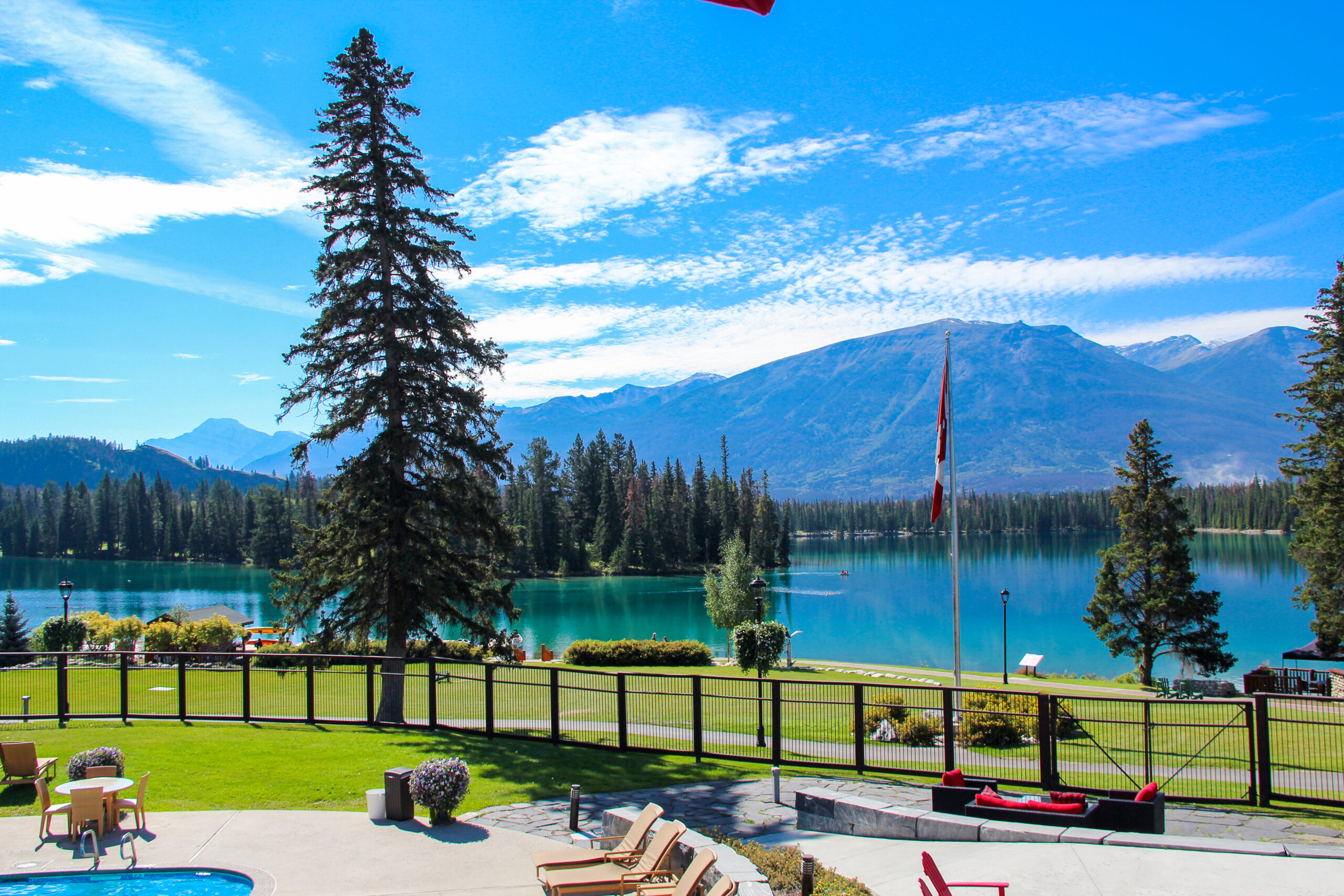
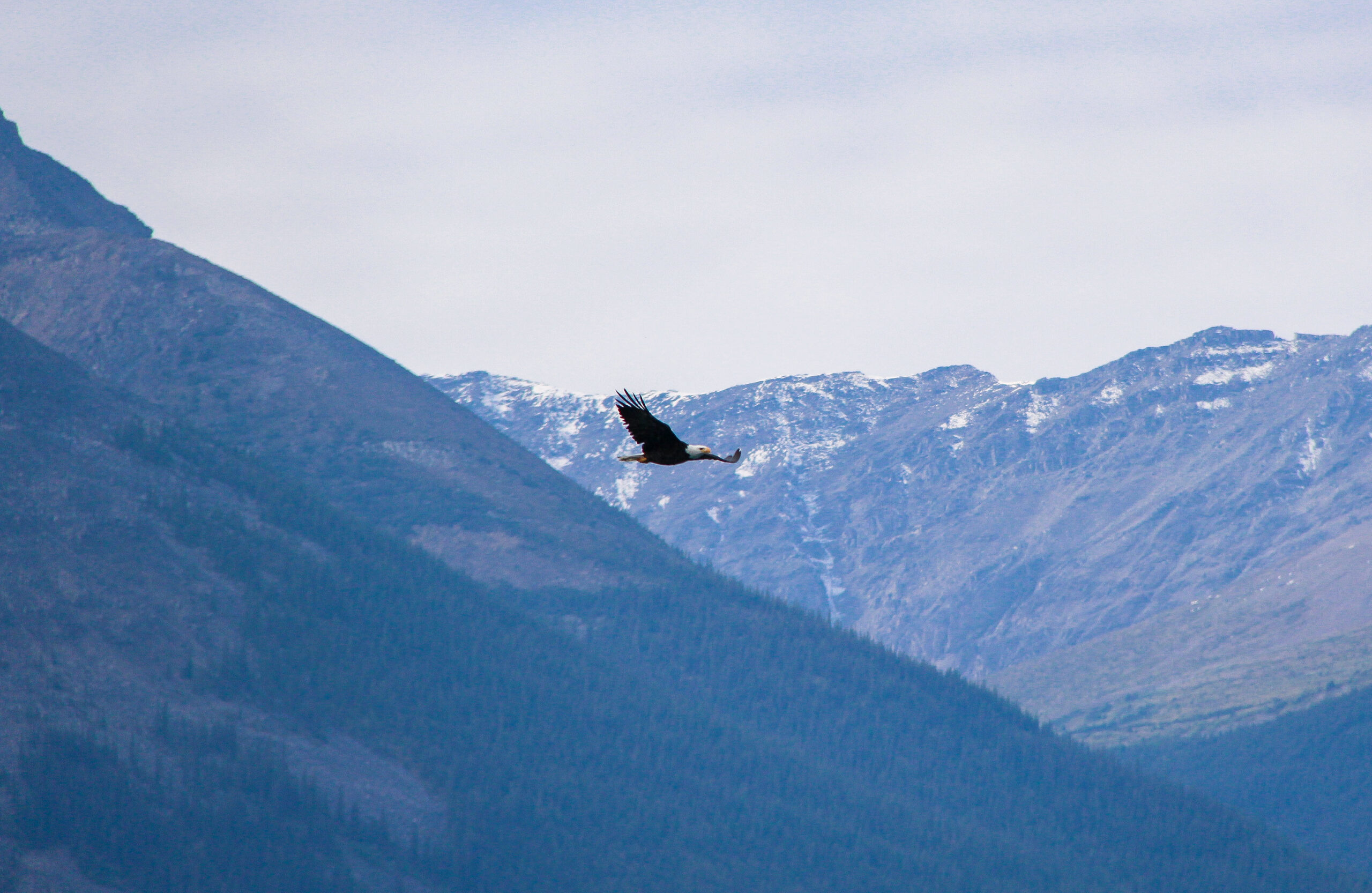
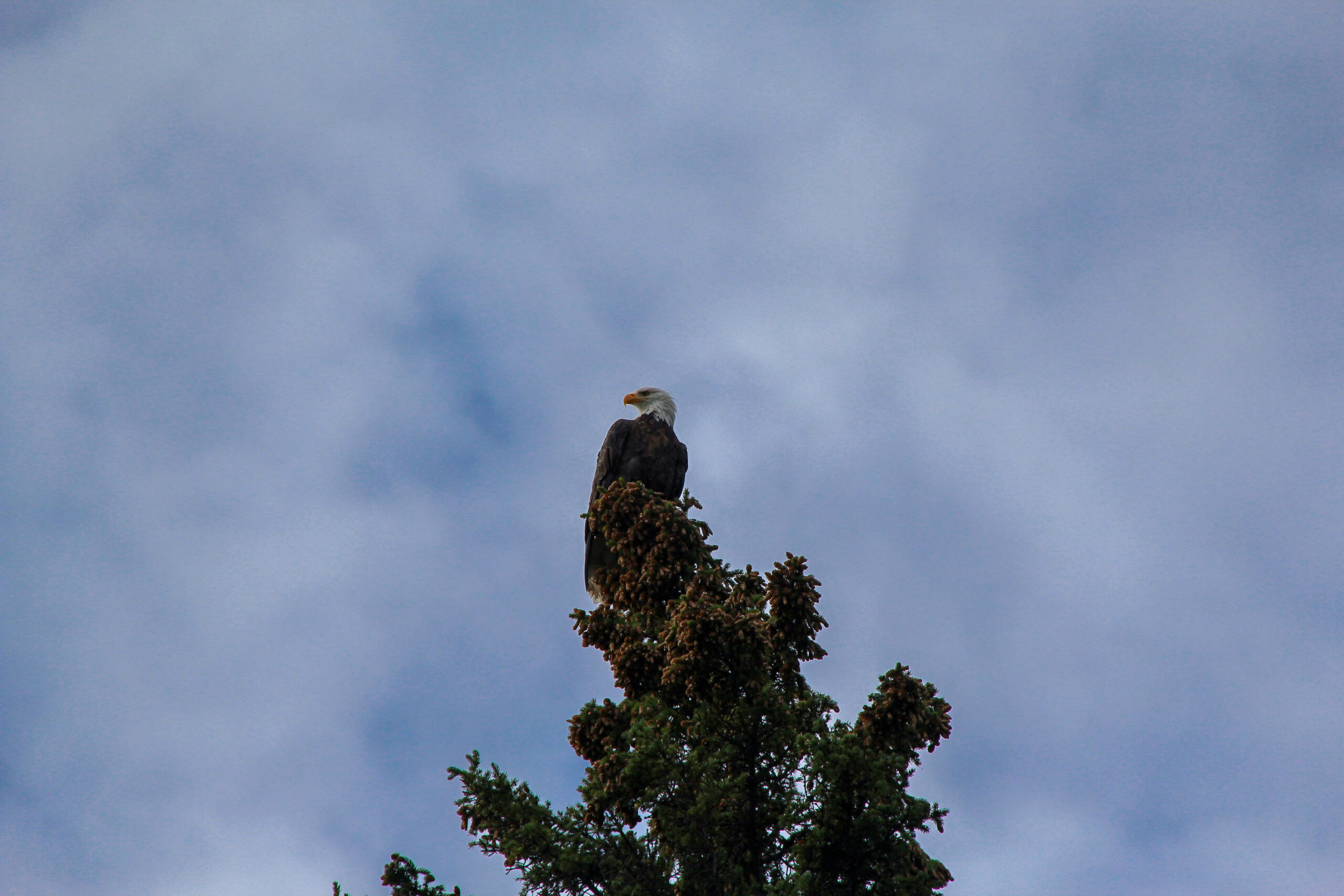
Originally it was known as „Tent City“ because it consisted of a series of tents, which were provided as temporary housing for guests interested in exploring the environs of the newly created Jasper National Park. The building itself was established in 1921 by Canadian National Railway. It was only in 1952, when the Canadian National Railway instituted a massive rehabilitation of the resort’s main building. Today Fairmont Jasper Park Lodge is owned by the Ontario Municipal Employees Retirement System, although it is still part of the Fairmont family of hotels and resorts.
I really enjoyed staying at Fairmont Jasper Park Lodge because you are completely sourrounded by nature and wildlife. A big highligh were the sight of a bald eagle flying over the resort.
Driving time: Jasper to Banff: 3 hours 30 minutes
Banff – 1 night
We spent the last day in Banff by buying souvenirs and eating all the things we won’t get at home.
Hotel
Royal Canadian Lodge
The Royal Canadian Lodge was the last hotel I stayed at on my road trip through West Canada. Although I didn’t spend that much time at the hotel, it was a perfect place to pack the suitcases and to end the Canada Road Trip.
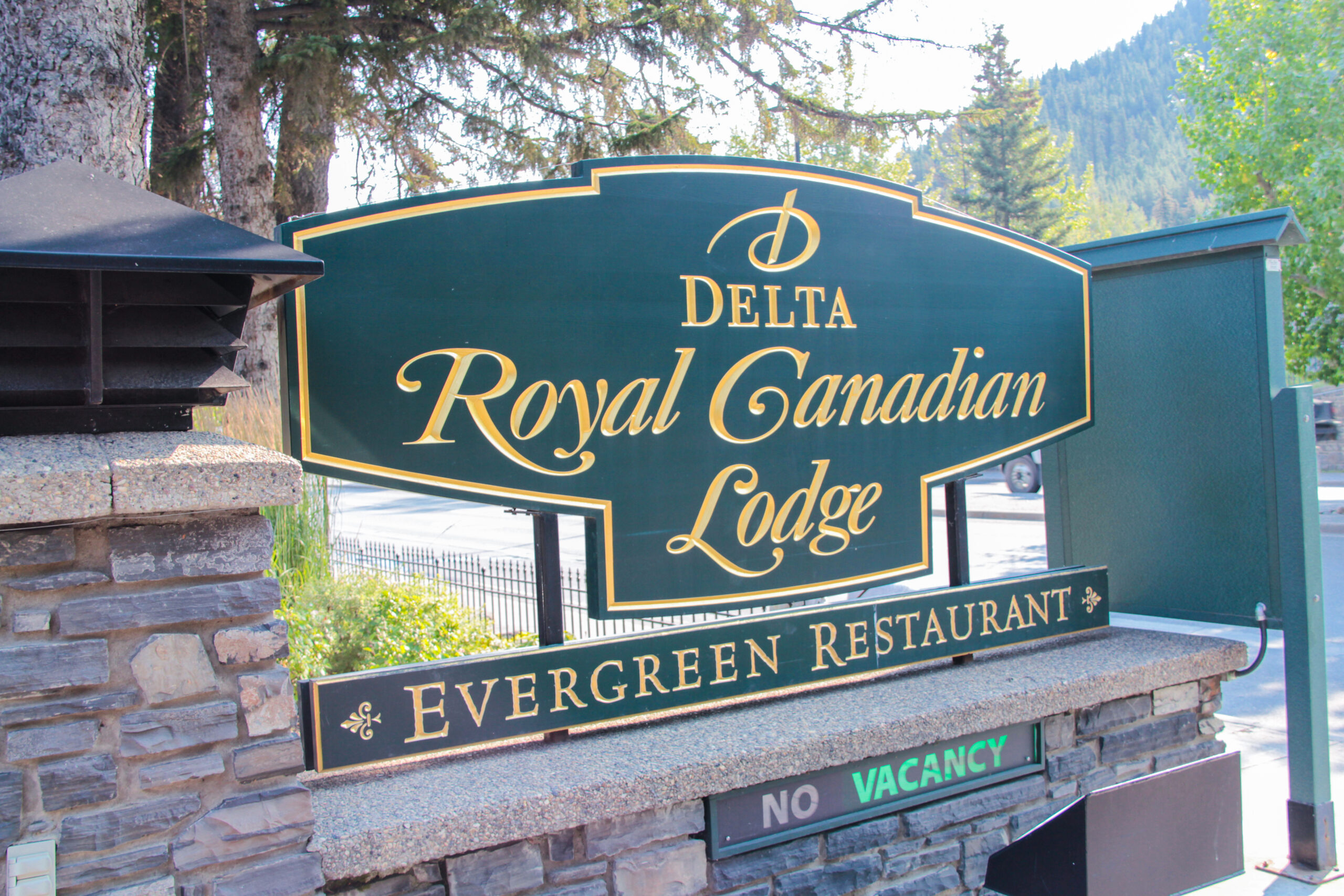
As to the history of the hotel, the Charltons family onw and operate this hotel as a fifth generation Banff family.They have been providing accommodation in Banff National Park since 1949 with Banff’s first year-round tourist accommodation,Charlton Cedar Court. Their second property, Evergreen Court was replaced with the outstanding Royal Canadian Lodge in 2000. It is still a high standart accomodation in Banff with room renovations made in 2019.
Canadian Road Trip Conclusion
I simply fell in love with Canada. It offers everything that you need during a trip. You can go hiking, swimming, shopping and even relaxing. One of the highlights, beside all the amazing views, was definitely the wildlife. I am very happy that I could observe a bear and a moose, but also all the chipmunks, birds.
